MATTERS








Symonds & Sampson have always been green (and yellow) but in 2022 it is even more important that our eyes are firmly fixed on the environment. That is why we will be supporting The Queen’s Green Canopy initiative to mark Her Majesty’s Platinum Jubilee by planting a tree.

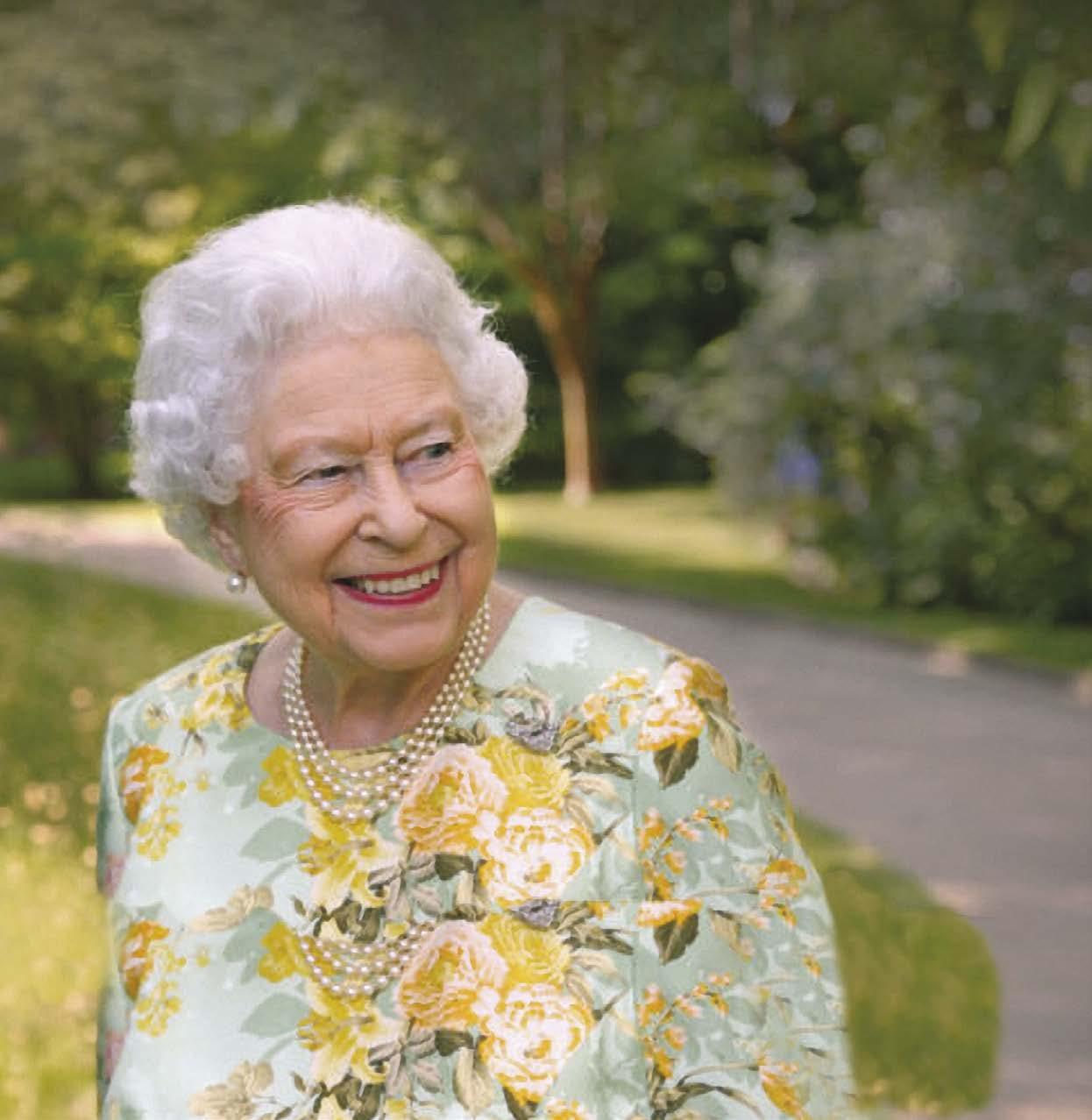
We will be setting up a fund so that over 5,000 trees will be planted (one for every property we sell throughout the next five years).
It is a small gesture but a start in reducing our net CO2 emissions and we will roll out other initiatives in due course to help tackle global warming.
Iwas interviewing a person for a key role and asked the usual question: “Why do you want to work at Symonds & Sampson?” The answer was: “I want to be part of something special and a firm I can be proud to represent.”
I frequently reflect on those words, mainly because this is exactly how we want partners and staff to feel. The difficulty is often not creating the culture, it is maintaining it. The ethos of the firm must start at partnership level and then, by setting an example, investing in people and learning from each other, we can build on our roots and become stronger.
We have certainly ‘branched out’ since our last publication, and we now have strong professional offices further east in Devizes and west in Tiverton. These centres have allowed us to service many clients in previously peripheral regions, and we are delighted with the results. Gathering talented people together has always been a key principle and everyone in the firm, whether in our core business or new ventures such as these, brings different professional and emotional strengths to the whole team.
We often need to be nimble and react quickly, with confidence, at very short notice and I praise our auction departments who have sold online, by livestream and in person, and our amazing accounts department which has kept pace in swiftly changing circumstances.

We also feel it is important to talk. This firm-wide collaboration continues to give us the expertise to better advise our clients on most property matters. If a member of staff does not know the answer, they usually know someone within the firm who does. When there are so many new rules and regulations across our different disciplines, this can be of vital importance.
We now face new challenges and playing our part in tackling climate change will be critical to our future. You will see our decision, on the opposite page, to support the Queen’s Green Canopy initiative, and we are setting aside funds to plant a tree, through a range of projects, for every property sold by us over the next five years, amounting to several thousand new trees.
We feel we have a unique chance to make a difference both through our own procedures and the guidance we provide for clients, with changing priorities at every turn. Advising on Countryside Stewardship, the Sustainable Farming Incentive, the Local Nature Recovery scheme and the Landscape Recovery scheme, among others, will be crucial over the coming years.
For our part, to join the global race to net-zero we will be looking at how our offices and car fleet are run, while adjusting our business operations and behaviours to minimise our carbon footprint. It will take time and cultural change but we have, for example, already started by using eco-friendly packaging options for our brochures and this magazine which, once you have read it from cover to cover, is fully recyclable.
Since our inception in 1858, the way we live and work has changed beyond recognition. We have a new challenge but one we relish.
You may wonder why we have a dancer on the cover of this year’s Country Matters? We feel it sums up Symonds & Sampson: strength, dedication, balance, focus, commitment and, of course, flair!
I hope you enjoy reading our magazine.
Whether it is the secret to a successful souffle or the right combination of advice for clients.
A blend of skills have been passed down the generations at Symonds & Sampson.
We have the key ingredients to deliver the recipe for success.

Let us guide you through the intricacies of overage, permitted developments, and the new rural payments schemes. Discover how to train your spaniel, the stories behind the region’s pub names, and the do’s and don’ts of rights of way. Get the lowdown on Somerset’s new-look pylons (yes, really!), learn how to guard against countryside crime, how Covid has affected construction, and life as a rural surveyor. Then dip into a history festival, the pages of a 1950’s Western Gazette, and the fascinating worlds of farming, flying, fingerposts … and real tennis.

ut simply overage, or “claw back”, on a property sale is akin to selling a promising footballer at a certain price, but reserving the right to take a share of any profit should that young prospect turn into the next Ronaldo – painful though that is for a Leeds United fan to say, believe me!
It usually applies to property where circumstances dictate a desire or need to sell the freehold now, but before the stars have had time to align in order to maximise value.
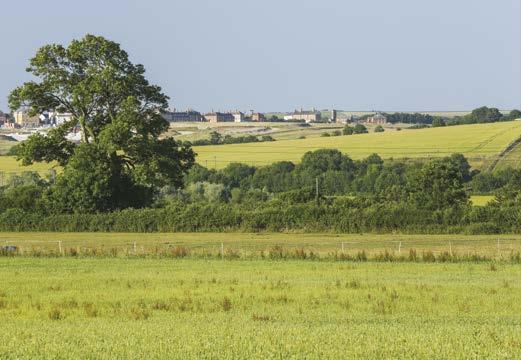
Most commonly the missing ingredient to unlocking the uplift in value is a planning permission, for example residential development on land at the edge of (or at least close to) a town or village. Current prospects for planning could be limited, or even non-existent, but what is a non-starter now may well be a front runner in a few years’ time. Or even many years’ time – checking back over historic maps of an area shows just how far we should now look beyond the settlement edge when considering overage.
The different formulas for calculating such overage can be many and varied, but the simplest involve a percentage of a triggered uplift in value being paid back to the original vendor (or their successor in title).
The period over which this obligation applies can run from a few years to many decades, depending on the circumstances, but of course the higher the overage percentage and the longer the overage period, the greater the impact on initial sale price.
After all it will be the purchaser who is expected to bear the risk, and usually not inconsiderable cost, of obtaining a planning permission. Having to pay back too much of the hard-earned reward will inevitably dampen the new owner’s enthusiasm to pay a decent price in the first place. And it may even affect their keenness to develop; remember that 50% of nothing is nothing, but 25% of a planning related uplift in value will be a welcome windfall to the original landowner.
The concept of overage may be simple, but making it fair and balanced in particular circumstances can be challenging. A crystal ball is sometimes required to try to establish how the property might be developed during the overage period.


At what precise point should the payment arise? What development might be exempt from overage? How should a future base value be set and what costs should be deducted within the formula? Should overage apply more than once if there are prospects for value to increase with successive planning permissions? For this last one, think Ronaldo being sold originally by Sporting Lisbon to Man United for £12m in 2003, only to be sold on to Real Madrid for £80m six years later. Sporting didn’t see a penny of that profit.
The list goes on. Inevitably it requires a specialist valuer and agent to negotiate the right deal – we have a number within Symonds & Sampson who can navigate this notoriously tricky area of business – and an equally focused solicitor to make sure the deal is made watertight within the legal documentation.

It requires a specialist valuer and agent to negotiate the right deal
Richard
One of the major planning shake-ups brought about on 1 September 2020 was the Government’s changes to the planning use class system – the legal framework which categorises uses of land and buildings as set out in the Town and Country Planning (Use Classes) (Amendment) (England) Regulations.
This included the introduction of Class E to cover a wider range of commercial, business and services. Class E replaced the previous use classes for shops, financial and professional services, restaurants and cafés, and some businesses.
Essentially, it means change of use within Class E does not constitute development and therefore does not require planning permission.
The Government’s intention is to provide greater flexibility to our high streets to respond more quickly to the needs of consumers and businesses. This has become hugely important to the Government as town centres face a number of socioeconomic challenges, meaning the viability and vitality of centres is under threat.

What’s more, on 1 August 2021 the Government announced a new permitted development right provision known as Class MA for conversion between Class E and Class C3 (residential). The Class MA permitted development right goes significantly beyond the existing rights for office and retail conversion into residential, allowing restaurants, indoor sports facilities, and nursery uses to also benefit for the first time.
Delivering housing and the reuse of vacant retail units is
a top priority for Government, and the Class MA permitted development right highlights this. The effect of this new permitted development right will boost housing in town centres and on high streets by making it easier to change the use of commercial buildings which have become vacant.

It’s worth noting that before the conversion can commence, the new MA permitted development right requires the submission of a prior approval application to the Council. Among others, the application will be assessed against the following criteria:
• Size restriction: no more than 1,500 square metres of floorspace will be able to change use under the MA right
• Longevity restriction: the building must have been in Class E use for two years before benefiting from the right
• Vacancy requirement: the building will need to have been vacant for three months prior to the date of application.
The new Class E and Class MA permitted development right highlights the Government’s new approach to the planning of town centres, responding to challenges which have been exacerbated by the pandemic.
The new flexibility in the planning regime will therefore be good news for landlords and tenants, encouraging a greater diversity of uses in our ailing town centres and high streets to support their revitalisation and boost housing supply.
The
With increasing numbers of women
embarking on a career in rural surveying, we ask our staff to share their insights
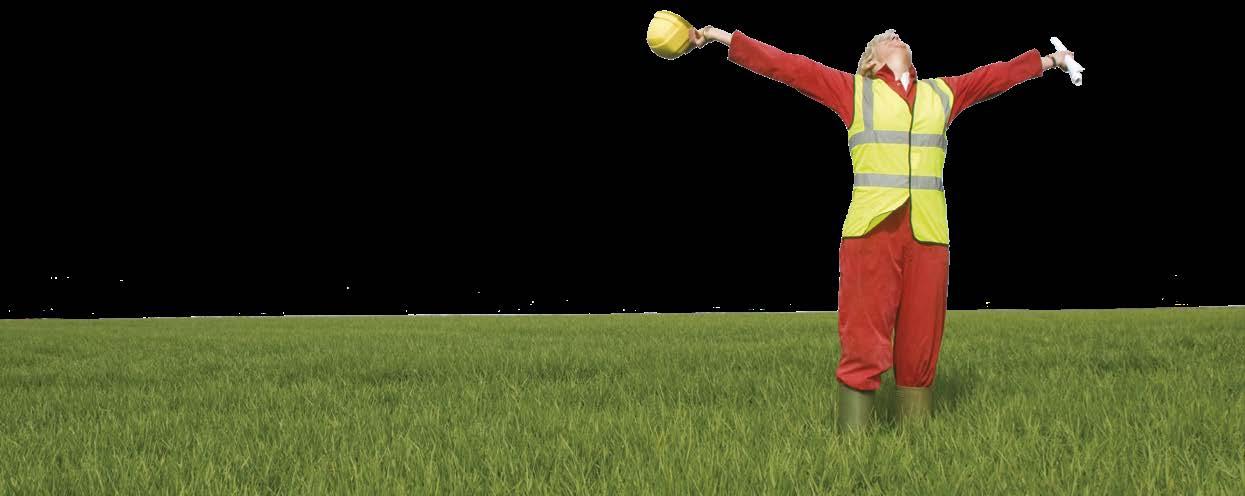
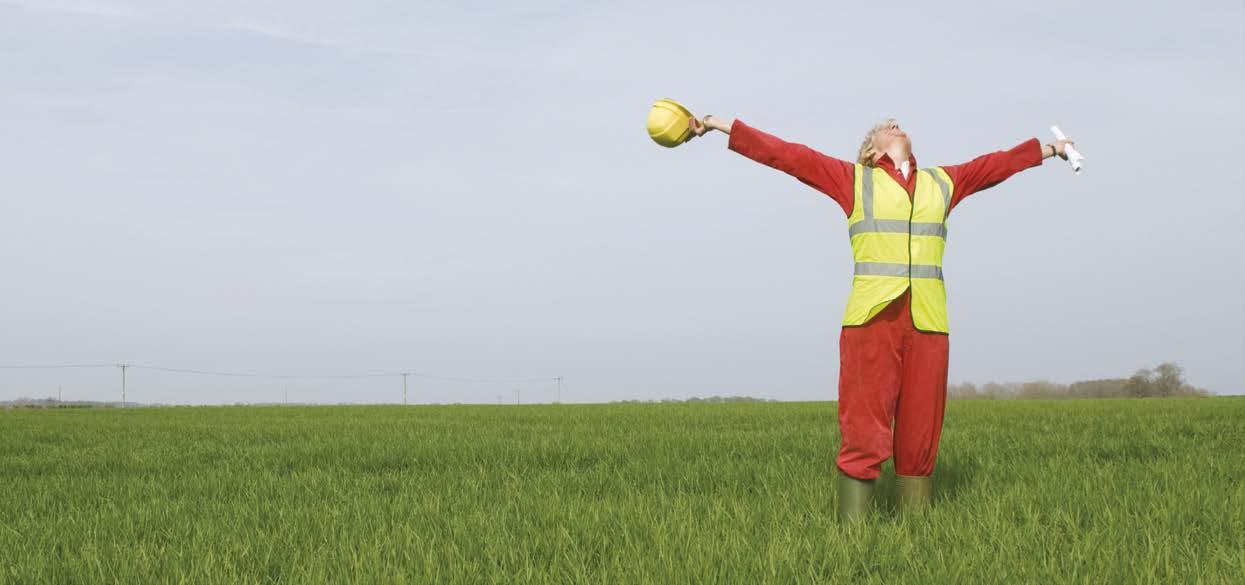

Do you come from a rural background?
I grew up on a dairy farm in Somerset and enjoyed a free-range childhood. My dad was a dairy farmer and now has a herd of suckler cattle and a flock of sheep. I still enjoy a rural life now. My boyfriend and I also have our own ever-increasing flock of sheep which we lamb around Easter time.
What opened your eyes to the career of a rural surveyor?

I was studying for my A levels but didn’t really know what I wanted to do next. One of my friends had just started at Harper Adams University in Shropshire and invited me for a look around. While speaking to her friends, I discovered the Rural Enterprise and Land Management course. I really liked the sound of it, and this led to learning about the role of a rural surveyor.
How did you achieve the necessary experience or qualifications to follow this path?
Having gained the A levels stipulated by Harper Adams, I studied at Harper for four years. This included three years studying and one year out on a work placement. After graduating, I was offered a surveyor’s role with the work placement company. I stayed with them for a year as a graduate, then made the move to S&S, a couple of months before sitting my APC.
What do you consider has been your greatest obstacle and how did you overcome it?
It was a big decision to go to university. I’d initially had no interest in going, so when I discovered the course at Harper I needed to build up the courage to go and then get back in the swing of studying for something that truly interested me.
Either personally or professionally, what are you most proud of achieving?
Passing my APC first time and qualifying as a Chartered Surveyor and Registered Valuer.
I enjoy the variety of valuation work. I also enjoy farm agency which provides a fresh set of challenges with every property. I also love that I can bring my dog to work!
Tell us something interesting about you.
I really enjoy putting together floral creations. If for some reason I had to stop being a surveyor, I’d secretly like to become a florist.
Do you come from a rural background?
I grew up in a town, but I’ve always had horses so I spent much of my childhood in various parts of the countryside for training and competitions, and soon found my way to Young Farmers.
What opened your eyes to the career of a rural surveyor?
I wanted to do something with an outdoors aspect and searched for a career that had the mix of both office and open air activity.
How did you achieve the necessary experience or qualification to follow this path?
I studied A levels and sought work experience on a range of farms before going to university where I gained my BSc (Hons) in Rural Land Management, which is a RICS accredited degree.


What do you consider has been your greatest obstacle and how did you overcome it?
When I first decided to pursue this career, I thought not being connected to agriculture could be a big obstacle. However, I made an effort to get a good variety of work experience on farms and asked lots of questions. I now realise that growing up on a farm does not necessarily mean you know everything about farming or the rural sector!
Either personally or professionally, what are you most proud of achieving?
I am proud of achieving my degree. I’m the first in my family to go to university.
What are your favourite areas of work, and why?
I particularly enjoy valuation work as it’s so rewarding to complete a report. It also means I can get out of the office and see a variety of farms, land and property.
Tell us something interesting about you. Alongside my A levels, I was selected for and completed an Advanced Apprenticeship in Sporting Excellence for Dressage, which is a course designed for elite young athletes. Olympians Tom Daley and Rebecca Adlington are alumni in their respective sports.
Do you come from a rural background?
I grew up in a town with parents who were interested in but had little involvement with the rural world. You don’t have to be a farmer’s son or daughter to be a Rural Surveyor!
I knew that I wanted to pursue a professional career where I wasn’t chained to an office desk all hours of the day! I had always been interested in property and loved spending time in the countryside so I did some work experience at local surveying firms after completing an undergraduate degree in Geography at the University of Exeter.
How did you achieve the necessary experience or qualification to follow this path?
I went back to university and completed a one year RICS accredited postgraduate degree in Rural Estate Management at the RAU, following my graduation from Exeter.
What do you consider has been your greatest obstacle and how did you overcome it?
Persuading myself to go back to university when the lure of employment and a salary was calling. I worked during all of my holidays to make it possible.
Either personally or professionally, what are you most proud of achieving?
Passing my master’s degree with distinction.
What are your favourite areas of work, and why?
I enjoy how diverse the profession is, I get to spend lots of time in some of the most amazing places and meet lots of interesting people.
Tell us something interesting about you.
I recently gained my PADI open water diving license.
Do you come from a rural background?
I grew up on a beef and arable farm. However, being the only daughter with three brothers all showing much more interest in the farm while I played with ponies, I didn’t stand much of a chance in the field, so I took to the office!
What opened your eyes to the career of a rural surveyor?
I investigated various careers including architecture and accounting but I decided to use my rural background to my advantage and get out of the office and back in the field. My eyes were opened when I spoke to a gentleman who was an accountant turned land agent, who sold me on the lifestyle.
How did you achieve the necessary experience or qualification to follow this path?
I left school and went straight to the RAU to study Rural Land Management for three years. I missed out on a placement year because of the pandemic.
What do you consider has been your greatest obstacle and how did you overcome it?
Being a student during a global pandemic was difficult but in a positive way it made me more self-motivated.
Either personally or professionally, what are you most proud of achieving?
A-level maths! I was told I was useless until I got to GCSE and it just clicked and now I enjoy it.
What are your favourite areas of work, and why?
In general, I enjoy having the structure of work; it makes a nice change from uni. Having only just started the job I am enjoying learning about all the different sectors and aspects of day to day work and haven’t chosen a ‘favourite’ yet.
Tell us something interesting about you.
I am grade 7 on the clarinet.
Do you come from a rural background?
I grew up on a family farm located just outside Sherborne, Dorset and have always been fairly “outdoorsy” because of this. Despite moving to various towns and cities as a young adult, I didn’t stay away from the countryside for long!

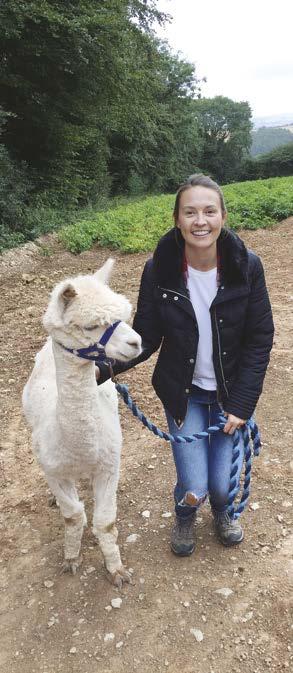
What opened your eyes to the career of a planner?
I have always been interested in sustainability and geography and wanted to enroll on a degree course with a vocational element. This turned out to be geography and town planning at the University of the West of England, Bristol.
How did you achieve the necessary experience or qualification to follow this path?
The course was four years to obtain my Masters in Town Planning. I also took the opportunity to gain some work experience in this field during the summer breaks which included a local planning authority.
What do you consider has been your greatest obstacle and how did you overcome it?
Juggling work and studying in Bristol to gain my Masters in Town Planning.
Either personally or professionally, what are you most proud of achieving?
My degree and masters which then took me to Wiltshire Council to work as a town planner.
What are your favourite areas of work, and why?
Planning is a broad profession, providing opportunities to work in a variety of areas and with a variety of people including architects, builders, ecologists and local community groups to name a few.
Tell us something interesting about you?
I had to change my first name by deed poll in 2018 to get married abroad!
Do you come from a rural background?
I grew up in the middle of a town, but my siblings and I each have farmers as Godparents and my dad is an agronomist.
I like to think I can understand both, but I know where my heart is.
What opened your eyes to the career of a rural surveyor?
I worked for AMC as an Advances Manager arranging agricultural mortgages, which initially saw me doing agricultural training at the Royal Agricultural College (RAC –as it was then) and first made me aware of the role of a rural surveyor and valuer.
How did you achieve the necessary experience or qualification to follow this path?
I left school without A-levels so after an initial conversation with RAC, they pointed me towards the access course provided by Harper Adams and I then completed their RICS accredited degree with a placement year.
What do you consider has been your greatest obstacle and how did you overcome it?
Leaving a good job to become a mature full-time student took a lot of nerve but I also believe the work ethic I had developed in the workplace helped motivate me to learn and put spare time to good use.
Either personally or professionally, what are you most proud of achieving?
I am the first ‘Harper’ in my family to achieve a degree. My mum has a different surname on her certificate.
What are your favourite areas of work, and why?
I enjoy the neatness of valuation work with a clear start, middle and end although it takes a lot of time to do the job properly, and even then, I like to chat my figures over with another valuer.
Tell us something interesting about you?
I have an NVQ2 in wines and spirits.
Do you come from a rural background?
I was born in Dubai but grew up in a town near to the New Forest. My Grandparents had a smallholding and hunted so I got the bug for horses early on and my partner farms in the Purbecks so I’m surrounded by all things rural.
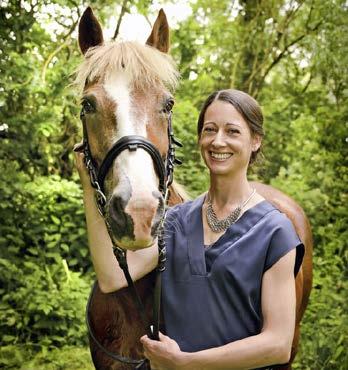
What opened your eyes to the career of a rural surveyor?
I did work experience with a freelance bookkeeper who dealt with farmers and was incredibly knowledgeable on agricultural matters. One thing led to another and now I won’t look back.
How did you achieve the necessary experience or qualification to follow this path?
I completed my A-levels at school then researched how to qualify as a rural chartered surveyor without going to university. This led me to complete a surveying diploma at the University College of Estate Management and then a degree. Experience came from working in the profession alongside doing my qualifications.
What do you consider has been your greatest obstacle and how did you overcome it?
Working full time whilst doing a degree! A completely bonkers idea but with determination, whilst sacrificing a few social occasions, I reached the end and it allowed me to get hands-on experience whilst learning.
Either personally or professionally, what are you most proud of achieving?
I am proud of myself for staying sane(!) whilst doing my degree and not dropping out at any opportunity. Building a house with my partner on the farm, keeping two horses competition fit, working full time, doing a degree and training for a marathon perhaps wasn’t the best idea I have ever had.
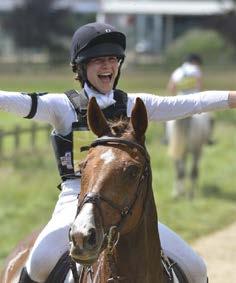
What are your favourite areas of work, and why?
I really enjoy the thrill of agency, winning instructions and dealing with people to get a desirable result for our client(s). I also like putting together grants, compensation claims and planning applications.
Tell us something interesting about you?
I was born in Dubai and lived there for four years before returning to the UK as my father worked offshore on oil rigs in the Middle East.


Labrador is born half trained, and a spaniel dies half trained.” That’s what I was told a long time ago, just before I bought my first dog … a cocker spaniel!
Since that day, I have owned and trained 10 spaniels (eight cockers and two springers). I currently own numbers nine and 10 – a mother and daughter who couldn’t be more different in their work ethic, trainability, and drive.
When it comes to training spaniels, none are the same. Training starts on day one, and it’s all about routine and structure. As with anything in life, planning makes the process easier and more achievable.
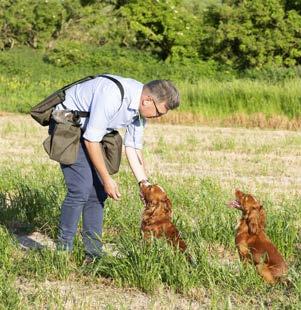
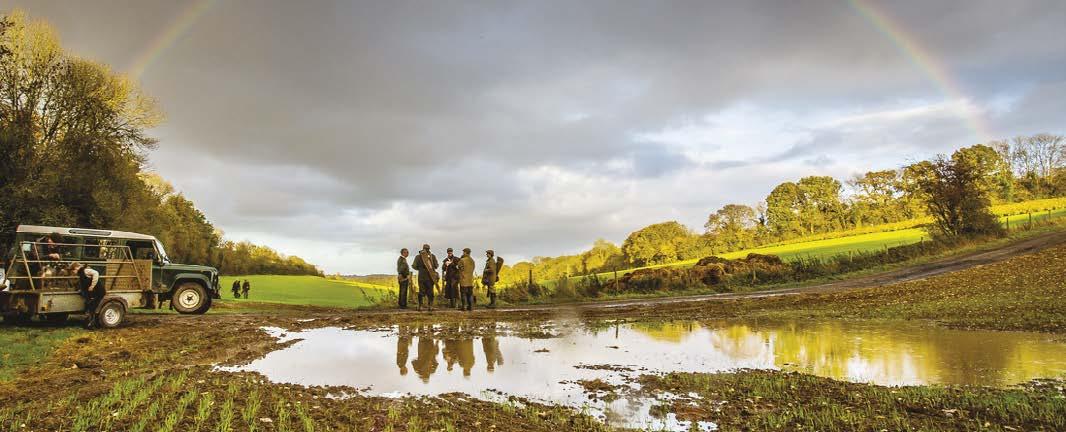
With my current young spaniel, we set the goal early that she was to be a peg dog. I’m very fortunate to shoot regularly throughout the season and to help run a small shoot. The older dog works with me when I’m hosting the shoot but she hates ‘sitting’ on a peg, so the pup had been given her job!
Positive reinforcement is the best method for training a spaniel. It’s important to make a huge fuss whenever they do something right – their desire to please should be exploited.
All the basics such as their name, sit, recall, and the retrieve can be taught through play. We even use the occasional feeding time to encourage the hunt by throwing a handful of biscuits on to the lawn and letting the pup put her nose down to find it.

As time progresses, the training becomes very rewarding as most spaniels learn commands very quickly. But be warned: at around a year old, they often hit the teenager wall! You’ll see bad habits shine through that have previously gone unnoticed, and a sudden lack of ability to progress with the training.
This is normal and I’ve experienced it with my pups. It tends to happen when you move on to advanced techniques and handling – it all becomes a bit too much for them. If you go back to basics and allow the pup to have fun, the phase soon passes.
Even if you have no plan to work your spaniel, gundog training is a brilliant way to bond with your dog. I find half an hour of training will tire them out more than a two-hour walk. By building structure and routine from a young age, even the scattiest spaniel can become half trained. Some say the method could work on husbands and children, but my wife is yet to confirm it!
warned: at around a
old, they often hit
teenager wallLucy
Culpepper Greenwood’ Freddie is three years old, and approaching his prime. His breeder is a training buddy of mine, and offered him to me as I’d helped hand-rear the litter.
Freddie’s mother is a talented but single-minded bitch who has won novice and open working tests. She is, however, a bit too excitable on live game and not suitable for field trials. Freddie’s father, ‘Kestrelway’ Freddie, is a field trial champion, and a very kind and biddable dog with lots of style and drive.
Freddie had been particularly difficult to bottle-feed. He was small enough to sit in the palm of my hand, and his life was hanging in the balance for the first few days. Once we got him going, however, he began to thrive. He was the most adventurous and friendly puppy of the litter, and first to escape from the whelping box.
I couldn’t resist him, although I knew his mother’s traits might mean he didn’t make a trial dog. Freddie was a delight to train but vindaloo hot, and almost too anxious to achieve the goals set in training. It was a case of rationing his education and trying to instil a degree of calm. Training included wandering around Poundbury’s green spaces and Weymouth seafront in an effort to desensitise him as much as possible.
I could see at an early stage that Freddie would make an excellent dog for working tests. He was eligible for ‘puppy’ and ‘special puppy’ tests up to the age of two, but I thought I’d give him a go in the novice category at the Isle of Wight Gundog Club’s Novice and Open Working Test held in February 2020. The experience of travelling and being among other dogs in a competition environment would be great experience, providing he didn’t blow a fuse!
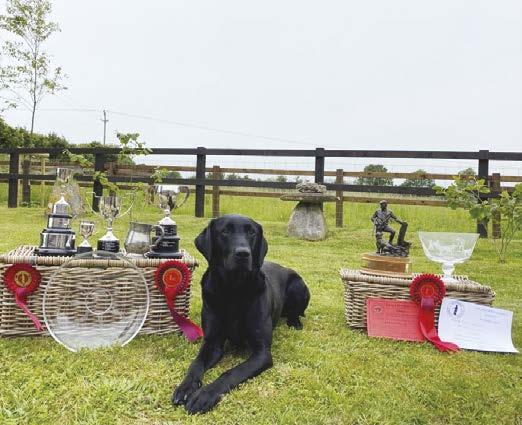
There were 17 competitors, and I also ran my older dog, Bear. He was almost five and had been placed second in a novice and won other awards. Freddie was outstanding on the day and was awarded first place. Bear was third, so it was a good day at the office.
Covid wiped out all the remaining scheduled working tests in 2020, which gave me time to train Freddie to an
His life was hanging in the balance for the first few days, but Freddie has blossomed into a winner. By Nigel Sheppard
open standard. By the spring of 2021, he was ready for open working tests. His first two runs showed great promise and we then ran in the United Retriever Club Open held at Bowerchalke. Freddie was able to show off his skills throughout the competition with long retrieves across steep downland valleys.
He missed a difficult mark across a lake, but put himself right and saved the day. He was called the winner, beating 23 other competitors.
A week later we won the Westward Gun Dog Society Shikar Open in Devon. And although another win eluded us in 2021, we were second at the Duchy Open near Exeter, and eliminated on the last retrieve of the day in the Kennet Valley Open walk-up on field trial lines.
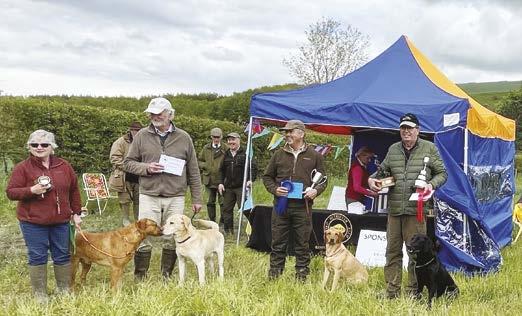
With any competitive sport and challenging training schedule, there are moments of dark despair and moments of sheer joy. Thanks to my dogs, I have competed and trained on some of the finest estates in the country, including those of the Duke of Wellington, Lord Margadale, and Lady Cowdray.
Even with my years of experience, I still can’t believe what the dogs will do for us and how that invisible bond binds you in a partnership – working as one to achieve a common goal.

He was the most adventurous and friendly puppy of the litterNigel Sheppard Nigel was a Partner and then Consultant at Symonds & Sampson
Back in 1697, legislation was enacted in England to allow magistrates to place direction posts at crossroads. But this isn’t their earliest appearance – some places used them on roads 50 years or so before this date. Milestones were also used from around these dates. (Marking the miles Country Matters 2020). They may have been set at a height to allow them to be read from a horse and carriage or just horse back but it is just as likely that it was hoped that vegetation did not grow so high that it covered the sign.
During the Second World War, all signposts were removed to prevent enemy forces using them for navigation. They were replaced in the late 1940s.
Although most fingerposts are a combination of black, white or grey, other variants exist. There are a small number of red posts found in some southern English counties, including four in Dorset. You’ll find one on the A31 trunk road at Anderson between Bere Regis and Wimborne, and others at Benville Bridge near Evershot, Hewood Corner near Chard, and at Poyntington north of Sherborne.
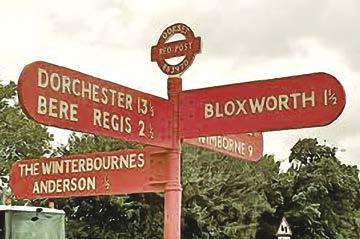
There are a couple of theories about why they were painted red. One is that it was to help illiterate prison guards escorting convicts on their way to port for transportation to Australia. The other is that they mark the site of a gibbet or gallows.
The Motor Car Act 1903 passed road sign responsibilities to the relevant highway authority. In 1921 a government circular suggested road direction signs should have black lettering of 2 ½” or 3” in upper case on a white background, with white supporting poles. It also suggested the name of the highway authority be included somewhere in the design.
Most counties developed their own style of fingerpost. These have become synonymous with each county and are iconic to the locality. Many locals are fiercely protective of their fingerposts and consider it essential to protect them at all costs.
Other places have fingerpost arms with white writing on a green background which indicates the most minor of lanes, sometimes known as drift roads.
possibly used to
routes for prisoners taken to the coast for

Note
rounded
Nowadays, fingerposts are used in a variety of settings and locations. Designs range from simple timber structures to much more elaborate and expensive posts, like those favoured by the National Trust and other tourist destinations to direct visitors around their sites.

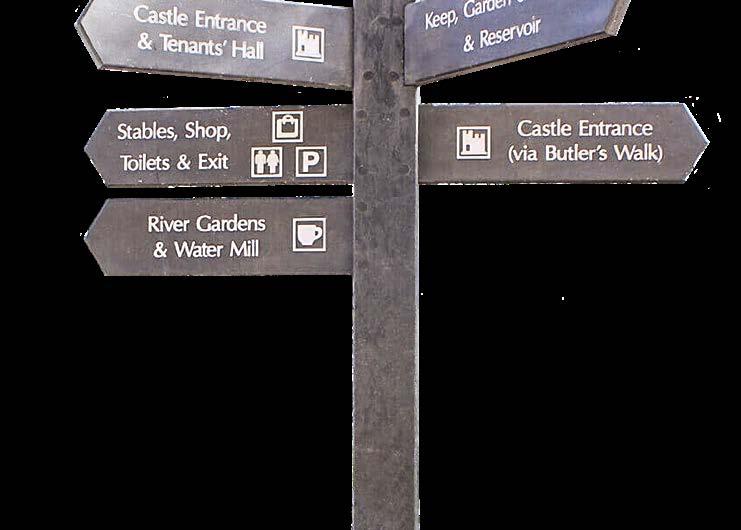
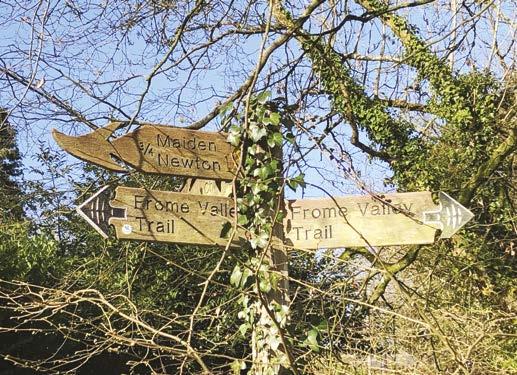
There are 150,000 miles of footpaths, bridleways and byways open in the UK.
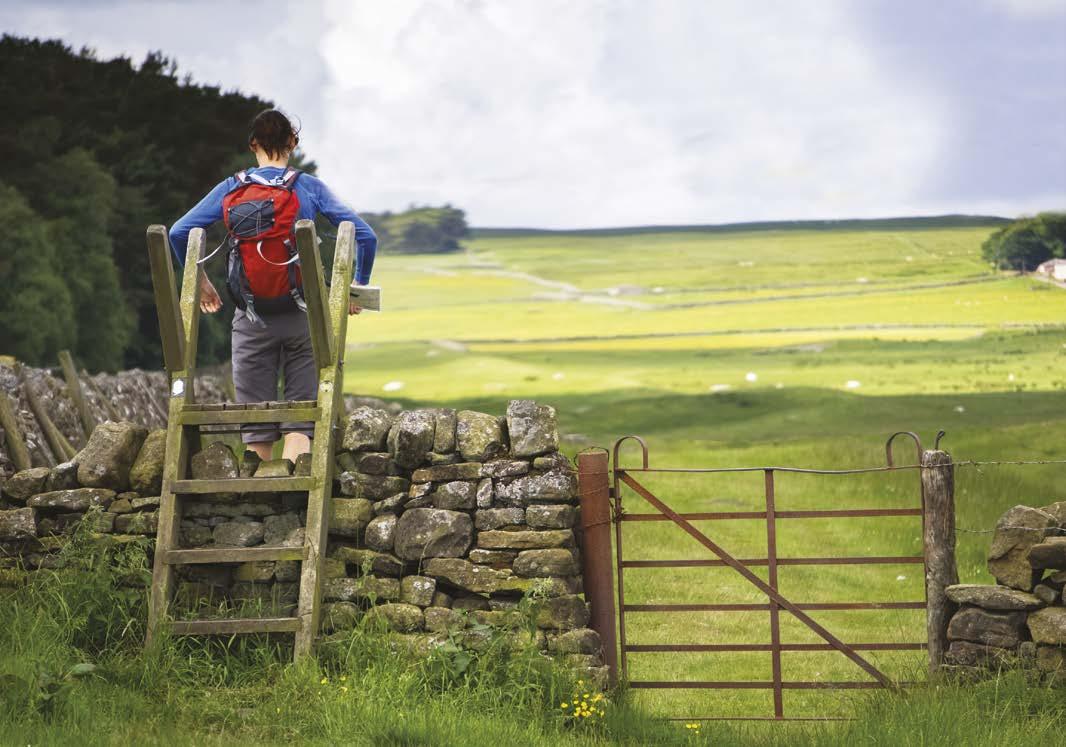
what are the dos and don’ts
have a public right of way across your land?
George Whittaker reports

It’s no secret the number of people accessing the countryside has increased significantly as a result of Covid-19. This new-found interest in the outdoors has caused issues for landowners already grimly familiar with the nuisance caused by walkers straying from public paths, by uncontrolled dogs, and by failure to comply with the Countryside Code. But as the owner or occupier of land with a public right of way (PRoW) across it, what are your responsibilities?
Owners of agricultural land with a PRoW are required to ensure the route is kept free from obstruction and is usable (as stated in Section 137A of the Highways Act 1980). This means removing and preventing obstructions on the route such as fences, animal feeders, overgrown hedgerows, padlocked gates and encroaching crops. Intentionally obstructing a PRoW is a criminal offence and the highway authority can demand you remove any obstructions.
Owners of livestock that injure or fatally wound the public now face substantial fines. Particularly aggressive animals should therefore not be placed anywhere near the public.
Cattle and sheep can be kept in fields with public access. This includes bulls, so long as the bull in question is under 10 months old, does not belong to a recognised dairy breed,
and is in the field with cows or heifers. It’s considered good practice by the Health and Safety Executive (HSE) to display signs warning the public there is a bull in the field (see HSE Sheet 17).
Where the route of footpaths, bridleways and restricted byways causes genuine issues, an application can be made to divert the footpath. Section 119 of the Highways Act 1980 gives District and Borough Councils the discretionary power to make a public path diversion order. Once made, the order is confirmed either by the authority or by the secretary of state. The definitive map is modified and Ordnance Survey is informed to reflect the changes.
But the process is protracted; it involves a long list of consultees and can take more than a year. And it’s expensive, with the fee payable to the relevant authority likely to be in the region of £3,000. However, this cost is potentially far less offensive than the blight caused to a property and its owners by the presence of the footpath, and is almost certainly more palatable than a public liability claim against the landowner.
and
can
kept in fields with
There are significant changes to farm subsidies coming over the horizon. The final payment year for the Basic Payment Scheme (BPS) is to be 2027, with reductions having already started in 2021. The table above outlines the reductions over the next few years.
It’s the most significant policy change to agricultural support since 1947. The Agricultural Act will see the phasing out of the BPS and ‘delinking’ of direct payments, with the introduction of the new Environmental Land Management Scheme (ELMS).
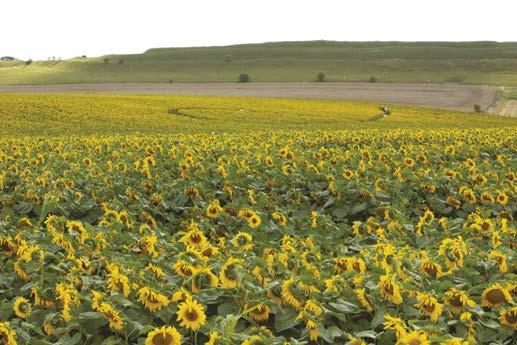
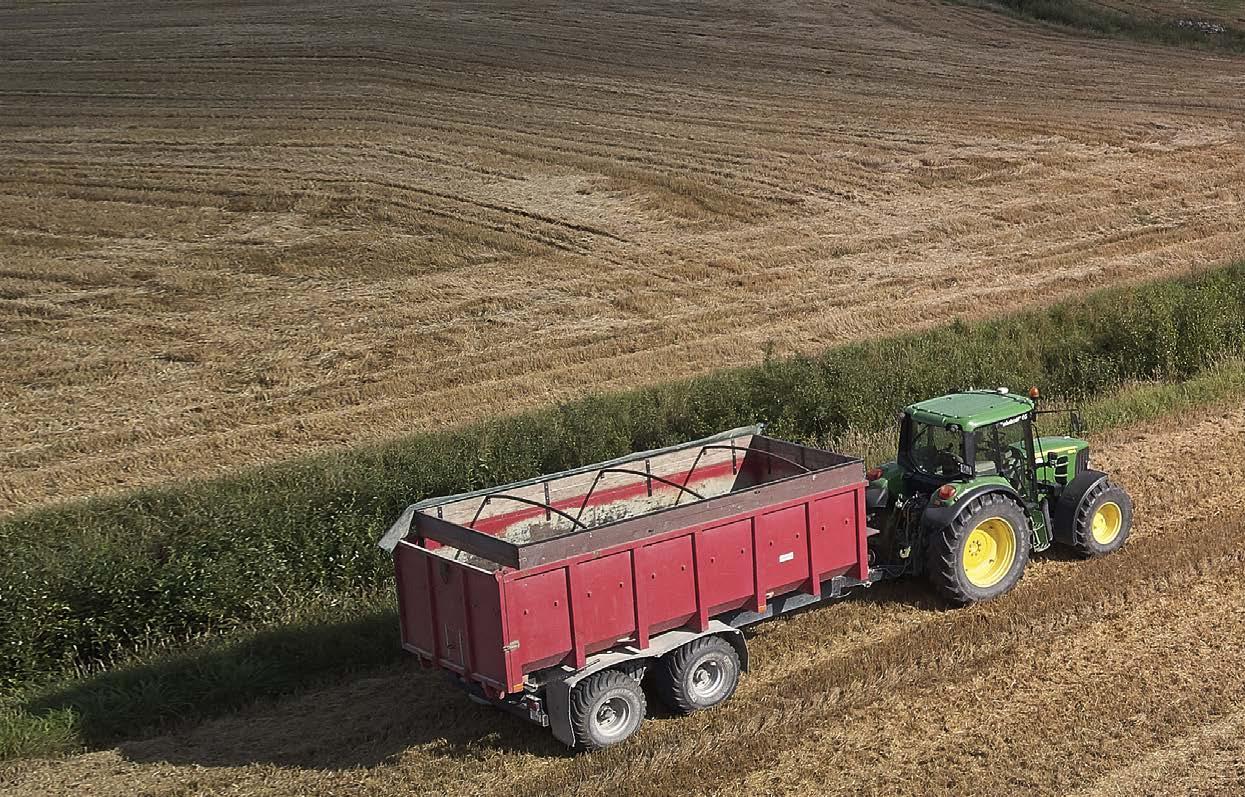
As part of the transition, the Government plans to offer farmers who wish to exit the industry the option to take a lump sum payment in place of any further direct payments. The aim is to free up land for new entrants and existing farmers who wish to expand.
Precise details on the scheme, including eligibility rules, were not available at time of going to press, but it is known that the scheme will only be offered to applicants in 2022.
The payment will be 2.35 times the average of the BPS payment in 2018, 2019 and 2020. There will be no opportunity for farmers to part-retire and this will be an “all or nothing” scheme. Farmers will not be allowed to enter other types of agreement such as Countryside Stewardship or ELMS. Some clients have already expressed an interest in taking part in this scheme.
If you’re considering the retirement scheme, please take professional advice as soon as possible and also discuss with your accountant, as there may be tax implications that need to be closely considered.
There are also expectations for a New Entrant Support Scheme – again, details were unavailable at time of going to press, but the scheme is expected to open this year.
There are still a number of opportunities with Environmental Stewardship and we continue to submit Mid-Tier Countryside Stewardship applications on behalf of clients. This not only provides an opportunity for income from field based options such as growing cover crops, wildflower strips and low input grassland, but also payments for capital works such as fencing, hedge planting and hedge laying. Agreements run for five years and there are 251 options, so there’s a good range to suit most types of farms and farming systems.
We have seen a considerable increase in interest and uptake in Countryside Stewardship. Many clients are now looking at the various options and taking advantage of the payments available. Countryside Stewardship will still be available in 2022 and 2023, and it is confirmed that if you were offered a new Environmental Land Management Scheme, you would be able to withdraw and transfer to the new scheme with no penalty.
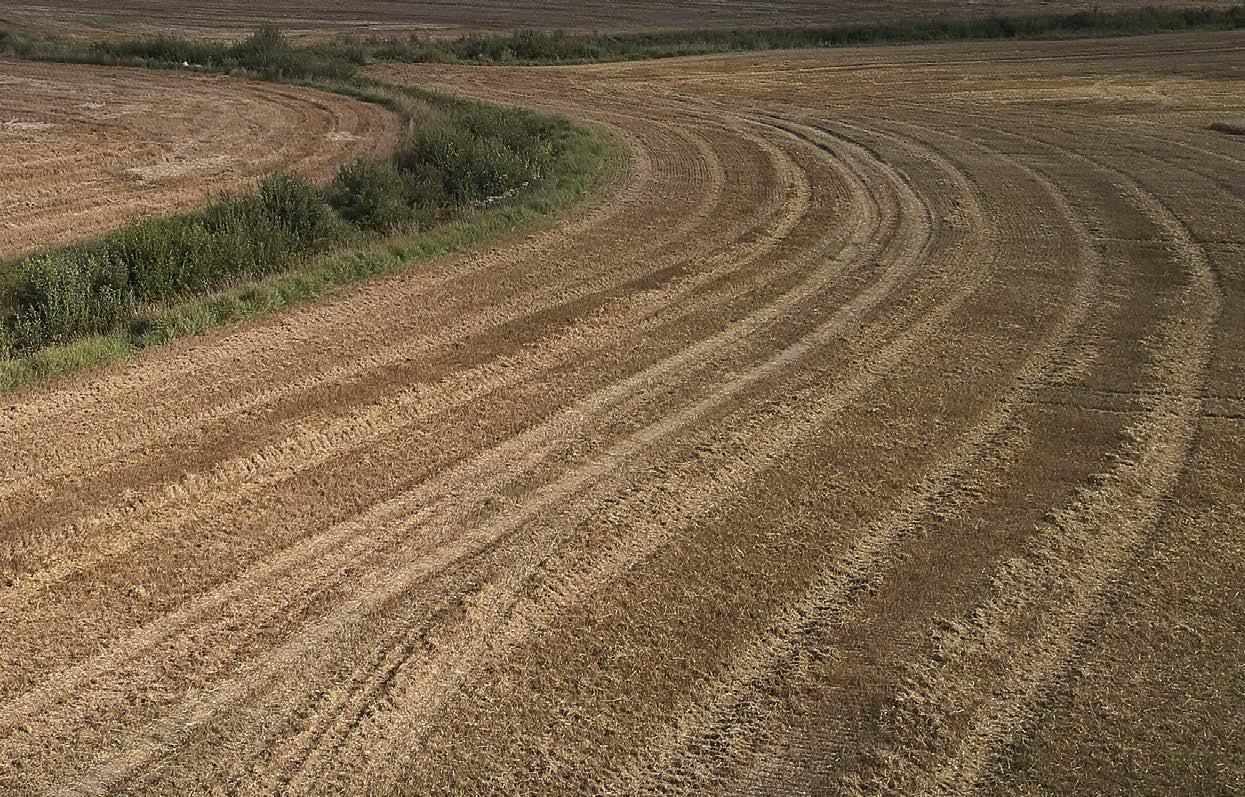
funding has been available under the Productivity Grant Scheme and Farming Investment Fund. Examples include livestock handling systems, EID

direct drills. It is understood, but not guaranteed, that this grant scheme will be introduced again in the autumn

2022.
Through the agricultural transition, the new ELMS is being phased in. The aim is to improve biodiversity, landscapes, clean air, water, soils and flood control. The ELMS comprises three key components, one of which is the Sustainable Farming Incentive (SFI). Pilot schemes started in October 2021, and this is likely to be a whole-farm scheme focused on soil management with both arable and grassland options. Farmers may need to grow more cover crops, carry out soil assessments, and produce a plan for managing soils. Payments are expected to be from £22 to £58 per hectare. The other two components of ELMS are the Local Nature Recovery (LNR) and Landscape Recovery Scheme (LRS). These schemes will pay farmers to restore habitats such as floodplains or creating woodland and wetlands. This is an evolving situation with details of the various schemes and grants being released throughout 2022. If you would like to discuss any aspects of changes to farm subsidies or apply for a Countryside Stewardship agreement, please do not hesitate to get in touch with our qualified professionals.
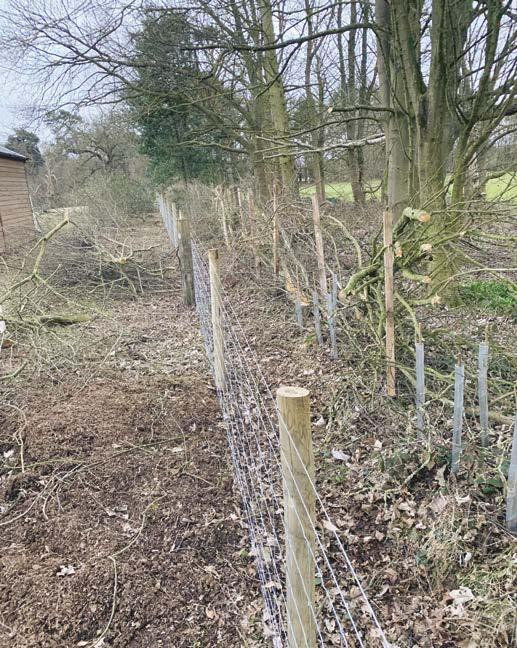
Having recently graduated from the Royal Agricultural University where I studied Rural Land Management, my dissertation is still fresh in my mind. I explored the question of whether the negative environmental impacts of meat production outweigh the benefits. As the daughter of a beef farmer, I assumed my conclusion would always favour the meat industry. To my family’s delight I found this to be true – to an extent at least.


I’m sure we’ve all noticed it has become increasingly popular to cut, or at least reduce, meat from our diet. The press, social media and supermarkets are getting behind the trend, along with various famous names including Paul McCartney who, along with his daughters Mary and Stella, launched ‘Meat Free Mondays’ in 2009 to raise awareness of the environmental impact of livestock agriculture. And in his recent documentary, A Life on Our Planet, David Attenborough says that to save the world as we know it, we will have to reduce the amount of meat we consume.
I started by researching the main environmental impacts of the meat industry, and found that biodiversity loss, water resources and greenhouse gas emissions were brought up most regularly. I also looked into whether the UK could ever become self-sufficient in its food production, and the impact of a vegan diet on the environment in comparison to a meat-eating diet.
I found most of the issues highlighted can be improved by more efficient farming; particularly water management, which the government has begun to address with the recent Farming Investment Fund.
The government has also taken steps to reduce greenhouse gas emissions produced from farming, particularly aiming to reduce ammonia pollution through low-emission slurry spreading equipment which is supported through the Farming Equipment Technology Fund. We hope to see our clients and the environment reap the rewards of these grants over the next few years.
My findings support the commonly held view within the industry that British agriculture is by no means the most
significant sector contributing to greenhouse gas emissions and water usage in the UK. Electricity production and transport sectors take the top two spots, with agriculture contributing to just 10%.
In England and Wales, 3.3 billion litres of treated water are wasted every day through leaking pipes, which accounts for 20% of the nation’s supply. Unfortunately, the finger often points to agriculture in the political blame game, whereas the reality is that farming is one of few sectors that naturally offsets its emissions in its processes.
I believe the first step to improving those impacts outlined is to encourage the consumption of local produce and reduce our food miles, which is unlikely to be possible without government intervention. Unfortunately, despite efforts to encourage sustainable farming, the new schemes for farmers are incentivising low yielding farming, arguably to an unsustainable extent.
Generally speaking, agriculture as a sector is making good efforts to improve its negative impact on the environment, with the new schemes being a significant move in the right direction. It will be very interesting to see the outcome of the Farming Investment Fund and the Sustainable Farming Incentive, and their direct impacts on the environment in the long term.

I’m glad I took the opportunity to research this when I did as it has helped me to understand from another perspective when helping farmers apply for these grants. From farmers’ points of view, the grants are a way to help them improve their own farms, but it is difficult to forecast the long-term benefits without looking at this bigger picture.
If you are interested in applying for grants under the Farming Investment Fund or would like more information about them, please get in touch.
The CLA wrote recently that farmers and landowners across the country are targets for organised crime groups and opportunistic thieves, whether it be for machinery, red diesel, livestock or anything else of value. In the past year, dogs can be added to the list.
Although many crimes decreased during the pandemic, agricultural machinery thefts stayed constant – especially allterrain vehicles. Many thefts are carried out by international organised crime groups, so the items are whisked out of the UK often within hours of being stolen. In an ironic twist, several stolen items (particularly GPS equipment and smaller pieces) are then sold back into the UK by these crime groups. We might as well offer the original thief money not to steal anything!
For those who discover they’ve been the victim of a theft of machinery or other equipment from their business, it can be overwhelming. There has long been the perception that police forces have not taken rural crime seriously but, we hope, this is changing.
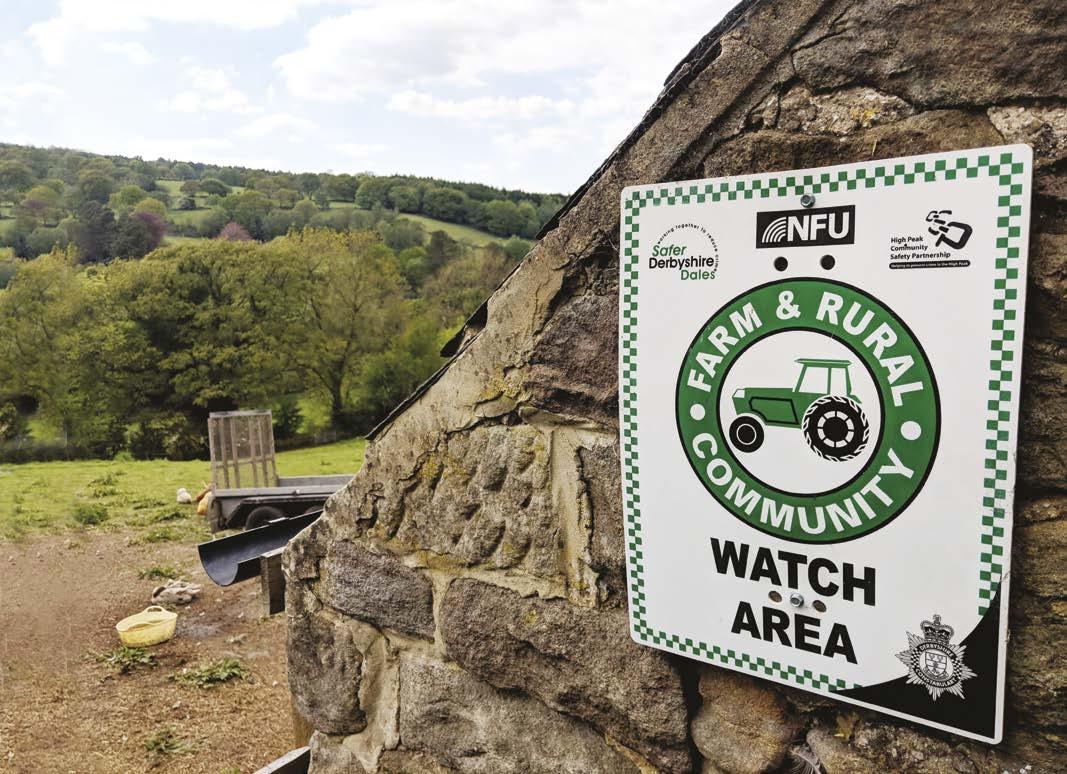

The criminals are organised and you must be too. If it happens too often, your insurance company may increase your premium – so you’re hit more than once.
• Cover the basics – lighting, guard dogs and alarms are good deterrents.
• CCTV is worth considering, but organised criminals will conceal their identity.
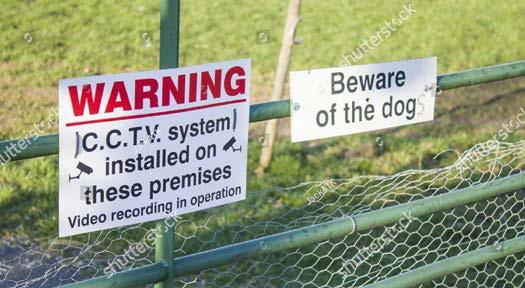
• Forensic marking of machinery is worthwhile.
• Avoid drawing attention to your belongings on social media – that post of you and the dogs on a quad bike is a great way to attract criminals!
The criminals are organised and you must be too
Jack Denning James looks at how farmers and countryside communities can tackle the menace of rural theftJack Denning-James
With a plethora of pubs to choose from across the UK,
it takes to draw
an unusual name. Andrew Monro

the stories
There are many Royal Oaks – often with a sign outside depicting Charles II hiding in a tree. The Queen’s Head, King’s Arms, Crown, Red Lion and White Lion, all show allegiance to the monarchy. The Rose and Crown celebrates the end of the Wars Of The Roses, and the White Hart was the personal badge of Richard II.
Legend has it the origins
to a gang of
The Railway gives away the location but, of course The Coach and Horses would have lost custom when the locomotives came along. The Angel, Bell, Cross Keys or Lamb and Flag will be close to the church.
hiding barrels
brandy
The Drunken Duck in Ambleside recalls the time a leaking beer barrel was enjoyed to excess by the ducks in the yard. When the landlady discovered her ducks lying flat out she assumed they’d died, so she plucked them ready for the cooking pot. The ducks revived just in time to avoid becoming lunch, presumably with sore heads. The landlady was so full of remorse that she knitted them all woollen waistcoats to keep them warm!
In Dorset we are blessed with some brilliant pubs, many of which have unusual names. My local is The Martyrs Inn based in Tolpuddle, owned by the Hall & Woodhouse brewery who have a pub for every letter of the alphabet apart from X and Z. No prizes for guessing why it is called The Martyrs.
Another Hall & Woodhouse pub in Dorset is The Silent Woman at Coldharbour. Until the 1920s the pub was known as The Angel but, after Thomas Hardy referred to it as ‘The Quiet Lady’ in his novel The Return of the Native, the pub changed its name to The Silent Woman – perhaps the slight twist was an attempt by the landlord to suggest the pub was a peaceful setting for a quiet drink! Notwithstanding this particular use, there are numerous pubs with a similar name. It’s thought the origins stem back to a time when smugglers, concerned their whereabouts, or that of their bounty, might be talked about, would removing the lady’s tongue to prevent her giving up the secret location.
Also relating to smuggling is The Moonrakers in Wiltshire. Legend has it the origins relate to a gang of smugglers hiding barrels of French brandy in a pond to avoid being taxed on it. When trying to retrieve the barrels from the pond at night, the smugglers were caught by the custom officials. However, with the barrels still submerged and out of sight, the quick-thinking smugglers had a flash of inspiration. Pointing to the reflection of the moon in the water, they said they were simply trying to rake out the piece of moon that had fallen from the sky. This ludicrous story gave the impression the smugglers were simple, and they were left to their night time frivolities – allowing the opportunity to retrieve the barrels and sell the contents.
Just across the Dorset border in Devon is The NoBody Inn. Some might suggest this is not the most inviting name, however it is, reportedly, an excellent pub. The name has two suggested origins, my favourite of which is slightly macabre. The building in Doddiscombsleigh acted as the unofficial village Church house for many years but was then developed into an inn. In 1952, the landlord of The New Inn died. At his funeral, neither the undertaker nor the pallbearers noticed the coffin was a little light and buried an empty coffin. Returning to the office, the undertaker realised the pub landlord was still in the mortuary and telephoned the inn during the wake to report to the mourners that, “No body is in the coffin.” The coffin had to be dug up, filled and then reburied. Hence a very good reason to rename the pub.

Anyone travelling through the Somerset levels may well wonder what they are seeing on the horizon. During the autumn of 2021, a number of new structures popped up, giving a new look to the traditional lattice pylons that dominate the countryside throughout Great Britain.
That familiar lattice design by the Milliken Brothers, an engineering company based in the US, was the winning entry in a 1927 competition run by the Central Electricity Generating Board. Almost 100 years later, the world’s first T-pylon was erected just north of Bridgwater.
It will be one of 116 T-pylons along a 57km route, connecting low-carbon energy to 6 million UK homes and businesses. The T-pylons have a single pole and T-shaped cross arms which hold the wires in a diamond ‘earring’ shape. They are 35m high, a third shorter than National Grid’s traditional lattice pylons, and have a smaller footprint using less land.


These new pylons form part of National Grid’s Hinkley Connection project, a £900m investment to connect low-
carbon electricity from Hinkley Point C nuclear power station. They will run between Bridgwater and Portbury, with a break through the Mendip Hills AONB where the new connection goes underground. The project also includes the removal of 249 electricity pylons between Bridgwater and Avonmouth.
The new pylon design was selected from more than 250 entries to a competition run in 2011 by the Royal Institute of British Architects and what was then the Department of Energy and Climate Change (now Defra). With a need for new energy infrastructure to enable progress towards net zero, the competition sought a new design to reduce impact on the local environment and surroundings.
Construction of the first 48 T-pylons by Balfour Beatty on behalf of National Grid began in autumn 2021 near East Huntspill, with each pylon taking roughly five days to build. Construction of the remaining 68 pylons, north of Sandford continues in 2022.
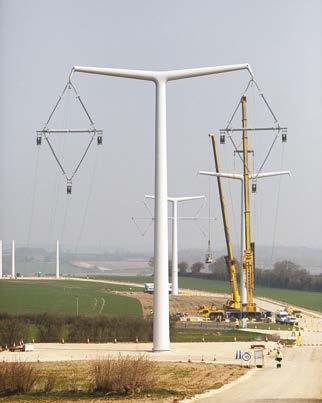
To ensure the lowest possible cost for consumers, the body of the T-pylons are made in China, while the diamond-shaped structures are made in the UK.
There are around 22,000 pylons in England and Wales, so the majority of the old lattice pylons will remain for many years to come. But in Somerset, the new T-pylons look modern and certainly add a new dimension to our skyline.

Whenever I mention there’s a “real tennis” court at Walditch, a small village just outside Bridport, most people are surprised – that’s if they know what “real”, as opposed to “lawn”, tennis is to begin with.


The ancient game is played in a cavernous, purpose-built building more than one and a half times the size of a grass court. The majority of the 20-plus courts in the UK are attached to great palaces and houses, universities, public schools or clubs such as Lords or Queens, as might be considered fitting for the “royal” game. The history of the Hyde Tennis Club in Dorset is rather less obvious.
It was built in 1885 in the grounds of Hyde House, home of the Gundry family (purportedly as something of a vanity project to appeal to the then Prince of Wales, who was a keen player), and was open to gentlemen members for a small fee.
However, it fell into disuse and became, among many other things, a rollerskating rink, a venue for village events, a barracks, and a cow-barn.
In 1995, the family donated it to the local sports trust on the condition it was restored to its original purpose. The sum of £400,000 was raised from lottery and council funds, charitable donations and private gifts, and the court was completely refurbished. It reopened in 1998 and the club registered as a charity in 2020.

I was lucky enough to be introduced by friends when the club was still quite new. The game has been a great source of winter exercise, offering (occasionally fierce) competition, companionship (whether playing with a regular partner or a complete stranger) and a great deal of hilarity.
Without wishing to upset those who are very much better at it than me, the rules are often completely bamboozling to a novice, and the flight of the ball not much easier to understand. A serve can be a “railroad”, “boomerang” or “giraffe”; winning shots may be earned by hitting the “dedans”, “grille” or “tambour”; and ends are changed only when “a chase has been laid”, measured by where the ball bounces for the second time.
As a further confusion, the scoring is similar to lawn tennis but the winner of the last point is always called first.
It does, amazingly, all become (reasonably) clear once one has played for a while. That said, I still can’t fathom why I had to lose the point, rather than simply replay it, when the ball got stuck on a window ledge, but the pro was adamant!
The variety, and entertainment, of the game is much enhanced by the vagaries of the court, with various rooves, galleries and buttresses all in play; the irregularities inherent in the handmade ball coming off the side or back walls; and the odd shape of the racket. Ball and racket are heavy, and the stroke is generally a cut underspin that does not suit my lawn-tennis style at all – although more lessons may be the answer to that.
The other wonder is the global handicapping system that accounts for every match played. It’s a way to help level the playing field and means opponents of very different abilities can play each other and still have a close game.
It’s a remarkable game that has given me, and many others, a great deal of pleasure over the years. Hyde is a lively club with welcoming pros and members – all in a rural setting just two miles from the Jurassic coast. Give it a go, if you aren’t already an addict.

H aving come from a construction background, one of the most rewarding parts of my job is to return to sites where we have provided design and professional services. It’s nice to see the client reaping the rewards of all the hard work that goes into each and every project – hard work that’s been made even harder over the last two years or so!
When the first national lockdown hit, there was concern whether construction-related activities could continue. Luckily they were given the green light, which meant planned progress on certain projects was able to carry on.
While there was a certain inevitability that projects already under way needed to continue, some brave souls decided to start their building work in what would prove to be a turbulent time for the construction industry. This seemed to be particularly true at a local level.
Factors such as various shipping calamities, the slowdown in the manufacture and supply of materials, the strained labour market, further national lockdowns, and additional health and safety considerations on-site, all conspired to mean costs rose well in excess of normal inflation. Works programmes were also elongated, and as for those budget costings carried out in previous years … well, enough said!
Costs boomed again in the post-lockdown era as contractors’ order books were full, and simple supply and demand economics ruled. As supply struggled to meet demand, the global supply chains seemed to dry up, with the cost of steel, timber, cement products and electrical components in particular becoming the bane of the industry.
It’s at this point we’re always glad to have our pool of local,
trusted and competent building contractors – each suited to a certain type of work. Their knowledge and understanding of the issues on the ground at a local level can be invaluable in helping to predict how this may affect a project!
So, what next? The price of materials alone for the construction of an average-size (which, according to BCIS, is an area of 88.52m2) three-bedroom semi-detached house rose by 14% between January and September 2021.
The five-year plan issued by BCIS, suggests the upward trend will continue and tender prices will rise by around 4% per annum up to the second quarter of 2026! This will be fuelled by continuing material price rises, a sustained increase in demand, and longer supply times. I must admit, I can’t recall costs falling once they have risen.
In summary, the higher construction costs we’ve been experiencing recently will continue and, while they may not continue to rise at the rate we have seen over the last couple of years, it is arguably not surprising given the strain on the industry and its supply chains.
Our advice, therefore, is to consider any project carefully. Upfront and honest budget conversations with a professional adviser and/or contractor are as important as ever. There will be some elements you simply can’t scrimp on, but whether a project is a new house or a small extension, the design process can help to ensure costs are controlled relative to aspirations and budget.

We’re always glad to have our pool of local, trusted and competent building contractors
You’ll find some famous names
Chalke Valley History Festival. Everyone from Ian Hislop to Dan Snow have enjoyed the annual week of talks and immersive living history displays.

Edwards reports
The aim is to excite, enthral and entertain about the past. Chalke Valley History Festival is the largest festival dedicated entirely to history.
All proceeds have, since 2012, been directed to the Chalke Valley History Trust, which promotes the understanding of history to all ages, but especially children.
I first went to the Chalke Valley History Festival in 2017, when it moved to a new site of more than 70 acres in Broad Chalke, Wiltshire. Even though I’d heard great things about it, I was amazed at the quality of the speakers and the number of people visiting.
I was greeted by Celts and Romans, as well as knights from the Middle Ages, Napoleonic riflemen, and soldiers from two world wars. These ‘living historians’ encourage plenty of interaction, as well as putting on numerous displays and demonstrations.

Expect a large and wide-ranging number of talks, covering the time of the ancients to more present-day subjects. There are hard-hitting discussions on contemporary issues placing them in their historical context, as well as a comedy panel show and a number of events specifically for children.
Familiar faces are often seen mingling with the crowds. Monty Don, Dan Snow, Ian Hislop and Kate Adie are among the alumni of festival speakers. The festival is scheduled to return 20–26 June 2022. Speakers are yet to be announced but if previous years are


go by, you won’t be disappointed. Find out more

We often hear the cry: “We can’t find any staff” and whether this is blamed on Brexit or, more often than not, a moan about people not willing to work, finding good people in rural areas is a challenge.
Perhaps it has always been the same. A look at a copy of the Western Gazette from November 1950 shows a fascinating snapshot of life at that time. It should be remembered that housing was very cheap, certainly compared to today, and cottages were often ‘thrown in’ with the farmland at little cost.
The list of situations vacant noticeably outnumbered the situations wanted. Here’s a selection.

Companion housekeeper required for elderly couple. Bed sitting room offered.
Cook general required. Convenient modern house, Esse stove. Three in family. Light place. Help given. Good outings. Suit older woman.
Cook housekeeper wanted. Widow with child school-age welcomed. Good wages, quiet, comfortable place on Salisbury bus route. Elderly couple, maid kept.
Couple wanted. Manservant and cook. Good cottage. Man wanted to m/c 15 cows at 9.30pm, 6 nights weekly.
Austrian cook (first class). Disengaged, age 42. Excellent English and used to good service. Cook housekeeper, working age 37. Excellent servant, tall, superior, life experience, has well behaved son of 8. £3 per week.
Farm worker seeks situation. Hand or machine milker –3-bedroom house with garden. Lady (young 50) desires position of trust where capable efficiency and integrity appreciated. Domesticated and excellent needlewoman. Drives car. Man, married 25, seeks position on poultry farm with good cottage, willing to help in garden or milking. Situation required as farm manager/bailiff or any place of trust. Wife fully experienced dairy or poultry.
Wages
£7
week
Widower requires respectable homely person aged about 35 years to take charge of two small children and undertake all household duties. Must be fond of children.

Rabbit catching – single man willing to travel South. Must be a good trapper or snarer. Ample work in summer with fruit.
When reading these advertisements, one wonders who was looking for positions and whether the job turned out to be happy and fulfilling. There was certainly a wide readership, with the newspaper boasting that 78,000 copies were sold every week. That is the sort of circulation many papers now dream about!
snarer
Symonds & Sampson are proud to have had a long association with The Agricultural Mortgage Corporation (AMC), as appointed AMC Agents in the south-west. This has enabled us to secure flexible and highly competitive funding for our farm and estate clients, but did you know that other non-farming businesses can also apply for an AMC Loan? One of our AMC Agents Neil Gladwin explores the options and benefits for other land based rural businesses.
AMC has been providing medium to long term finance solutions to farmers and rural businesses since 1928. They remain specialists in the rural sector, lending to all types and sizes of farms, landed estates, and rural businesses in the UK. In what is now a far more diverse rural economy, with many dynamic and vibrant entrepreneurial businesses taking advantage of their rural base to provide unique services to their customers and clients, AMC is well placed to provide the required funding to help establish and develop these businesses.
The AMC Rural Business Loan is specifically designed to support such land-based businesses, the key features of which are:
• Loan amount – the minimum loan amount is £25,001, there is no maximum.
• Term – terms of 5 to 30 years are available, on a Repayment basis only and subject to the loan being repaid before the age of 75.
• Interest rates – variable or fixed rates of interest or combination of both. There is always a possibility that interest rates may go down leaving a fixed rate loan at a higher level compared to a variable rate loan. However, if interest rates rise, a fixed rate loan will remain at the same rate. A margin is charged above the Bank of England base rate for variable loans, and above market costs for fixed rate loans.
• Repayments – payments can be made monthly, quarterly or half yearly.
• Security – loans are secured against rural land, buildings and dwellings, subject to a maximum of 60% of the value of the security.
• Setting up fees – a negotiable setting up fee applies, with a minimum fee of £750 (payable on acceptance of a loan offer).

As AMC Agents, Symonds & Sampson have helped to prepare funding proposals on behalf of individuals, partnerships, and companies when buying a house with land. The two key factors are that the property being purchased includes at least a small acreage of land, and that there is, or will be, a bona fide business activity taking place on the majority of the property.
Examples of where applicants have benefitted from a Rural Business Loan secured with the help of Symonds & Sampson include when purchasing a house with land, where the following activities are to take place on the property;

• A complex of barns with established holiday lettings or other tourism activities
• Fishing lakes
• Outdoor activity centres
• Commercial shooting and game rearing
• Farm based shops, cafés and restaurants
• Riding schools, racing yards, livery yards and commercial cross-country courses
If you are contemplating the purchase of a country property with land, contact us for an informal discussion around your proposals – without initial cost or commitment – to see if you could benefit from a Rural Business Loan.
AMC loans available for business purposes only, provided on a secured loan basis. Minimum AMC standard loan £25,001. To meet customer requirements, lending criteria will vary. Lending is subject to status.
After hours of practice as a trainee pilot of a small aircraft, your instructor unexpectedly tells you to stop at the end of the runway, climbs out and utters the words “you have control”. Finally it’s time to compose yourself for your first solo flight.
A year earlier sitting in the co-pilot’s seat in Zimbabwe, the bush pilot asked me if I wanted to try my hand at flying his small plane. He explained the basics and under his watchful eye I experienced an exhilarating sense of freedom, flying over the magnificent Zambezi Valley with the endless horizon stretching in all directions.
Back home in Devon, after arranging an air experience flight at our local flight school, the magic was still there and the commitment was made to learn to fly. To obtain your Private Pilot Licence (PPL) you have to pass the medical, and have flown for a minimum of 45 hours with 10 hours’ supervised solo flight.
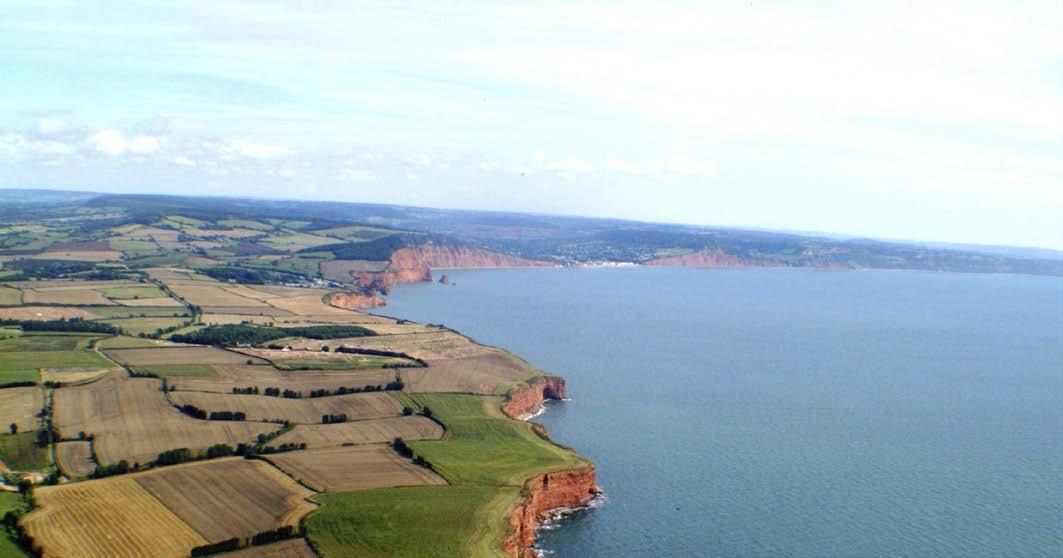
The training to achieve a PPL is divided between theory and practical training. The theory involves nine sections leading to individual exams on subjects as diverse as air law, principles of flight, navigation, meteorology, and general flight safety. The practical flight training covers a wide syllabus from flying the aircraft straight and level, to emergency procedures in a dual controlled light aircraft.
After the milestone of your first solo flight you work towards your navigational skill test, radio telephony test, and the solo cross-country flight, which involves landing at two airports, in my case Bournemouth and Cardiff. The final hurdle before gaining your licence is passing the general skills test with an examiner.
Learning to fly is mentally demanding as everything is unfamiliar, especially the three dimensional environment. There were moments when it seemed like an unachievable goal and it took determination to keep focused.
One of the most challenging and essential elements is landing the aircraft, which is practised repeatedly as it’s crucial to get it right! You have to accept that failure is part of the learning process. It certainly requires multi-tasking – flying the plane, radio communications, situational awareness and constant monitoring of your instruments.

My two instructors had radically different styles of teaching, one an experienced Instructor and the other a young pilot waiting for his first job with a commercial airline. Together they put me repeatedly through my paces, especially the dreaded practise for a simulated engine failure when you were least expecting it. Thanks to their diligence, when I have experienced a couple of potential emergencies there has been no panic, just a measured response, and for that I am extremely grateful.
When I committed to learning to fly, I never imagined the many rewards and opportunities it has afforded me: friendships forged by a shared passion, especially with other women who make up less than six per cent of all UK pilots; adventures flying on three continents from island hopping in the Bahamas, flying across the Atlas Mountains in Morocco, to enjoying the West Country’s glorious scenery.
Most of all, it has been a voyage of self-discovery –achieving something that seemed almost out of reach, knowing that you can deal with the unexpected and, to misquote John Gillespie Magee, experience the sheer pleasure of dancing the skies on laughter-silvered wings.
Gaining a pilot’s licence is a serious commitment and, for Angela Gillibrand, a voyage of self-discovery
experienced an exhilarating sense of freedom
Our skills have been passed down the generations.
Whether it is knowing where the best fish can be found or reeling in a buyer, or tenant, we cast our net far and wide to make sure we catch the right person for you.
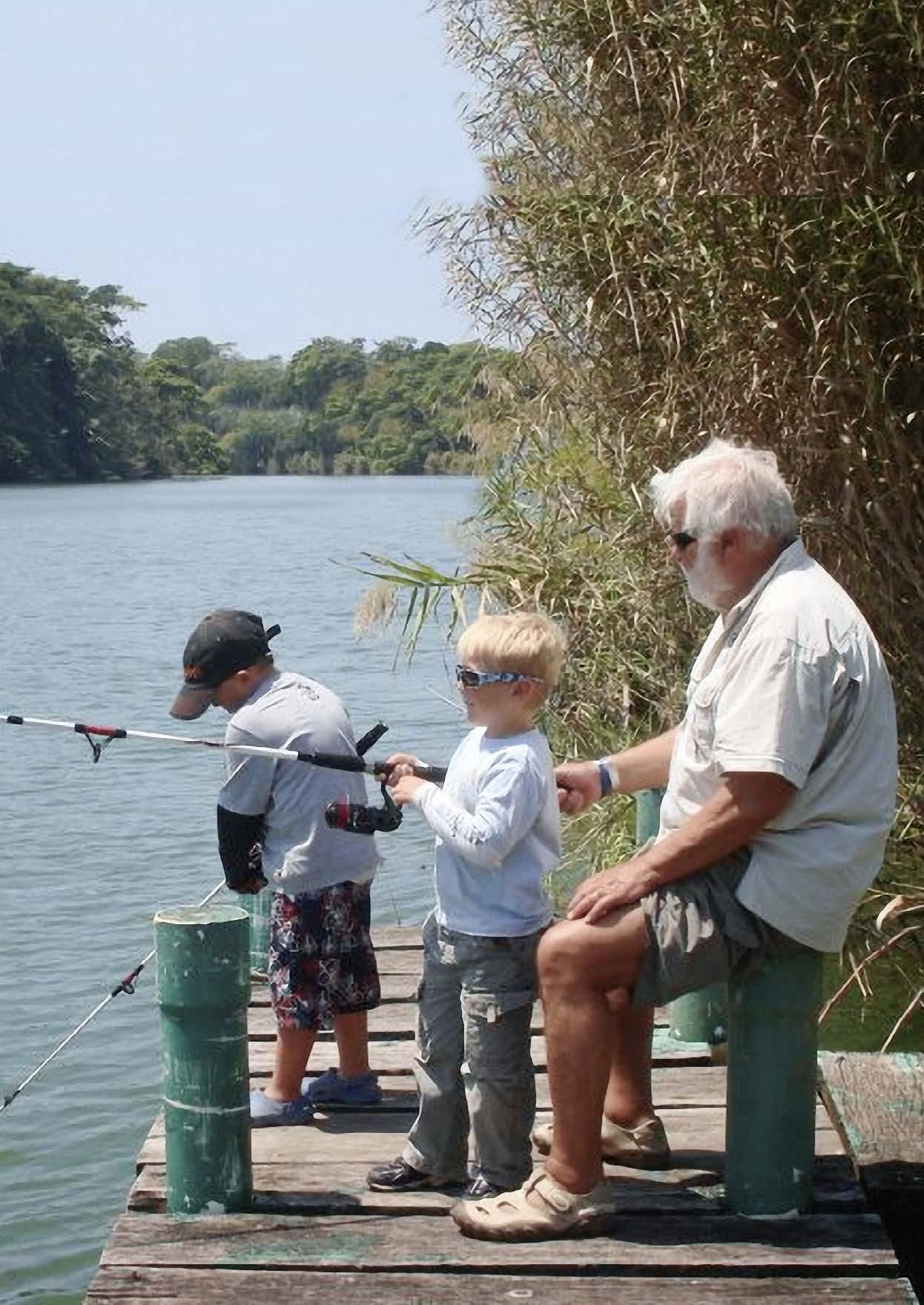
We turn the spotlight on new-builds, breathe in some sea air, and find happiness in hamlets. There are tips for ‘generation rent’, lettings advice, and a look at local attractions. Our branch managers drop by for a chat, and there’s wedding news, footie reviews, and tips to avoid boundary dispute blues. We look ahead to festivals and shows, look back to when Beaminster beautified Chelsea, and look through the lens at photography and art. Plus insights on commercial property, and the farmland market.
The demand for residential property in 2020 and 2021 took all involved in the market by surprise, including me – and I’ve been in the industry since 1983.
There has been a particular impact on developers of new homes, alongside providers of building materials and associated professional trades. Across the area covered by our offices, the normal build timeframes on new-home developments have fallen way behind schedule, in some cases by many months.
The delays, caused by lack of available materials and a shortage of skilled tradespeople, have increased the expected
construction costs. Some blamed Brexit and others the holdups in the Suez Canal, but once higher prices are established, they rarely drop even when normal trading is restored.
It’s also meant that, in many cases, new-home sites have been unable to launch to the market. This is a particularly frustrating time for any builder/developer, but also exasperating for applicants seeking to acquire their brand-new home.
While this predicament has caused many issues for the developers, the delays, alongside increased demand, have boosted property values. In many cases, we have been instructed to launch sites on specific “open days” to ready, willing and able purchasers well before the usual and expected “show home” launch; this method of marketing is resulting in many reservations being made on the day.
Take, for example, Hetherly Walk in Weymouth. An open day for this development of eight semi-detached homes garnered 19 viewings, three reservations and one pending. And we had a similar result at the site in Chesil Reach, Portland, offering 10 new homes.


There remains a particular issue with the local planning authorities in processing the backlog of planning applications with, in some cases, several hundred applications taking many months longer than normal to be processed.
During the early months of lockdown it became apparent that sites with planning application in place risked running out of time to commence development, as normal planning permissions expire after three years.
It can be a delicate balance to place the properties in the right pattern
Calton Stockley looks at the challenges and opportunities facing the new-build property market
Symonds & Sampson was one of the first firms of chartered surveyors to spot this problem. We contacted many landowners with sites, alongside developers, and lobbied the Housing Minister to suggest an extension to the commencement period. This did not fall on deaf ears. The minister granted an extension, resulting in many potentially affected sites now happily under construction.
The pressure from the government and housing groups to make more housing available to first-time buyers, and those struggling to get on to the property ladder, has empowered housing associations to buy more land. The key is always to encourage local people to either buy a part of the property (shared equity) or rent (affordable/social).

On mixed sites where there are freehold and shared equity/
affordable, it can be a delicate balance to place the properties in the right pattern. We are spending a lot of time discussing this with developers before bricks are laid. There will be some high-class developments available in the next few years. We would be delighted to discuss further sites and opportunities with you.


One of the most tender and delicate seafoods, oysters are rich in vitamins, minerals and proteins. Eating them raw is an experience. They are cold, delicious, and a little slippery – but relatively guiltfree. With six medium-size raw oysters averaging around only 45 calories, you can indulge at will! Usually served on the half shell with a generous squeeze of lemon, many say the best accompaniment to a great oyster is a glass of dry white wine.
There are several varieties of oyster and each has its own distinct flavour. But not many can claim to be as fresh as those served at the Crab House Café, overlooking Chesil beach in Weymouth, Dorset.

The café has its own Portland oyster beds, just a stone’s throw from the restaurant, which means you can enjoy fresh oysters on your table within minutes of them leaving the water. The menu lists three tempting options: oysters au natural; country-style oysters (with bacon and cream): and oysters Italiano (with pesto and parmesan).
The Portland beds use new and innovative Australian oyster growing systems with timber post and rail rows carrying mesh baskets. But the British have been farming oysters since Roman times. The native oyster, ostrea edulis, has been prized throughout history and was the oyster of choice until overfishing and pollution seriously depleted the wild stocks.
The more robust Pacific oyster, crassostrea gigas, has since taken its place and is the preferred oyster for cultivation worldwide.
The Crab House Café also specialises in other types of seafood, notably the fresh, local crabs. But for a real treat, you can’t beat oysters. Just pour a glass of white, order a few and embrace the taste!

From crowd-pulling cruise liners to urban escapees, it seems everyone wants to drop anchor along the Jurassic Coast, reports Jon Summers

Weymouth Bay gained some new residents during lockdown: a fleet of luxury cruise liners became a feature of the landscape. Moored close to the coast, these imposing vessels created quite a spectacle, and enterprising local fishermen boosted their income by taking sightseeing trips out to view the three Cunard Queens (Queen Victoria, Queen Elizabeth and Queen Mary 2), P&O’s Britannia and other jewels of the cruise ship crown.
It’s not only cruise liners that have been drawn to the Jurassic Coast during the pandemic. We have experienced a surge of enquiries from regional, national and international buyers seeking to relocate, as well as those wishing to acquire investment property and holiday homes.
Working from home quickly became the norm, and many who were living and working from confined spaces in more urban areas have decided to up sticks and make a permanent move to the coast, savouring the fresh air, walks, cycle paths and watersports on their doorstep.



Symonds & Sampson sold a number of properties along the entire length of the Jurassic Coast, many generating strong interest and competitive bidding. Perhaps former cruise passengers are among those buyers, swapping the vista from their cabin for the view from their new home. Looking at some of these examples, who can blame them!
 Jon Summers MNAEA
Jon Summers MNAEA
Agency

We have experienced a surge of enquiries from buyers seeking to relocate
Like me, many of you may live in a hamlet.
Mine is called Nethercott and is made up of 11 properties about a mile from the nearest village of Combe Florey in rural West Somerset.
Until 2005, it had not changed much for 100 years and originally comprised six houses centred around two working farms, an old mill and some cottages. The working farms are, alas, no more, but several of the old barns have been converted to attractive homes in the last 15 years.
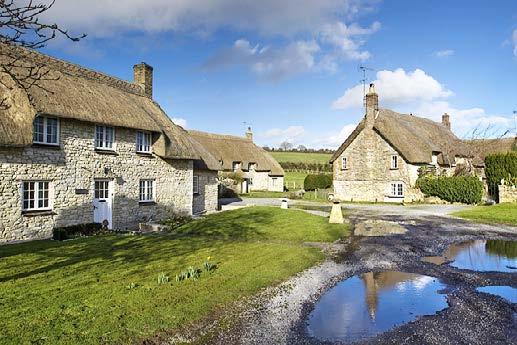

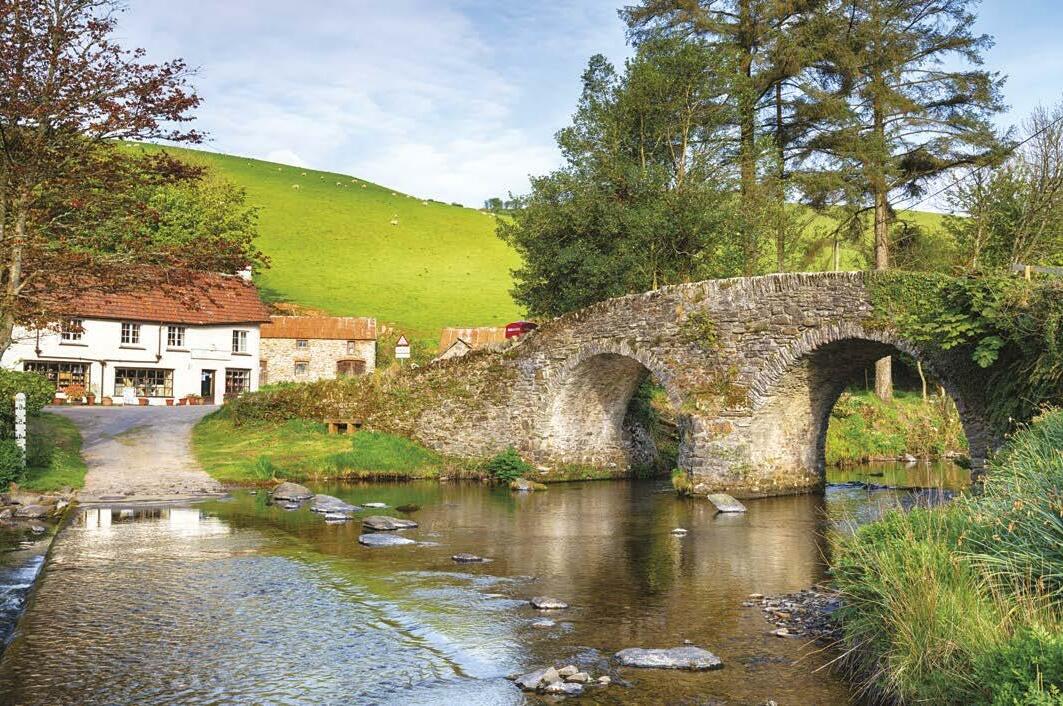
Hamlets may have been formed around a single source of economic activity such as a farm, mill or harbour that employed its working population.
I imagine this scenario has been replicated in most hamlets throughout our counties. Strict planning policies will have kept a lid on newbuilds, with most additional housing coming from converted barns.
Many original conversions were from old traditional stone and tiled/slate barns, either singly or as part of a courtyard group. More recently, newer agricultural buildings, many of steel-framed construction, have been converted using Class Q planning permissions to provide houses of a more modern design and character.
Most hamlets do not provide any services, but some may contain a pub, small shop or other sundry facilities such as blacksmith or farm shop.
Due to their isolated location, living in a hamlet is not practical without a car. And if you work from home, fast
broadband and reliable wifi can be a real problem.
On the plus side, most hamlets have a strong community. People rely on each other for all manner of things, so they are friendly hospitable places to live. And of course we all know what our neighbours are doing and vice versa. Not always good news!

In April 2019, the Government sent shockwaves through the private rental network by announcing a proposal to abolish the use of Section 21 notices. This was confirmed in the Queen’s Speech in May 2021 as part of the Renters’ Reform Bill. An announcement from the Chancellor was expected in the autumn of 2021, but has been deferred until 2022.
In September last year, Michael Gove was appointed as Secretary of State for Levelling Up, Housing and Communities. With a reputation as “the politician who gets things done”, this bill has a strong chance of becoming law, particularly as rental reform is supported by the opposition parties.
Not surprisingly, many landlords asked for our advice on this dramatic proposal, so here is a summary of the proposed changes to the current system.
Under a Section 21 Notice, a landlord can serve two months’ notice to their tenant to regain possession of the property once four months and one day from the start of the fixed term is reached. The landlord does not have to give any reason for requiring possession of the property, and the process is often referred to as a “no-fault” eviction. A judge has to grant mandatory possession.
Under a Section 8 Notice, a landlord may regain possession of the property following a breach of tenancy. This is served to the tenant, usually with four weeks’ notice but can be as little as 14 days, and upon expiry, the landlord can apply to the court for possession if the tenant does not leave of their own free will. However, specific reasons to service a Section 8 Notice must be given under the use of discretionary or mandatory grounds of the tenancy agreement/Housing Act
(such as rent arrears). There is always a risk the judge will decide not to give possession, however, and consequently, the use of a Section 21 Notice has often been regarded as a more reliable way to ensure possession will be granted.
Another proposal outlined in the Renters’ Reform Bill is a new court system designed to give landlords faster access to an order for possession. In very specific cases, for example where the tenant is in arrears or where there are other genuine breaches of the tenancy agreement, a landlord could provide evidence to support their claim for possession through this new legal system.

I suspect Mr Gove knows that scrapping the Section 21 notice is simply not an option until the current backlog of 65,000 possession claims are dealt with, and a viable accelerated court system is in place to deal with possession claims in the future. Furthermore, the current grounds for using a Section 8 Notice for mandatory possession are limited, and will need to be expanded.
Symonds & Sampson has identified and instigated a variety of measures to help landlords wishing to sell their property due to unforeseen circumstances, where a good, longterm tenant is in place. In this scenario, to avoid costly and protracted court process, our residential agency departments have offered the property for sale to the investment market as a buy to let. We can see this will be more popular in the future after predicted changes in the law.
HMRC has sprung a few nasty surprises on buy-to-let investors over recent years. The 3% stamp duty and a curb in mortgage interest relief have both impeded the chance to make a decent return. All our offices report a reduction in the number of properties being bought by investment landlords.
Holiday lettings do enjoy some benefits from HMRC, as letting a furnished property as a holiday home offers significant tax advantages. But it’s not all roses. While the pandemic fuelled bookings for UK ‘staycations’ during peak holiday season, out-of-season was a different matter. There were reports of supply outstripping demand, leading to void periods and no income.
When you weigh up the balance of comparatively high weekly rents from a holiday let against the figures you might expect from a longer term let, the holiday option may look attractive. However, holiday letting is hard work and the following factors should be considered:

• Although there is a tax advantage for utility bills, landlords are still responsible for these bills and should bear in mind the recent increase in energy prices, particularly during winter months.
• Additional costs of kitting out and regularly updating the property with high-quality furniture should also be factored in as holiday letting is a competitive market.
• During the current climate it has never been more important to ensure holiday lets are cleaned to a high standard so guests are confident and safe when staying in the property. This adds additional pressures (and costs) between changeovers.
• As well as maintaining high cleaning standards, landlords also need to ensure safety checks are completed after each stay.
• Landlords need to consider how the property will be maintained during quieter months when the property may be empty.
• Holiday letting is very fast paced so it’s important that landlords can be easily contacted and ready to resolve any issues that may occur during a guest’s stay.
• You may find there is more wear and tear on the property due to the regular changeover of guests.
If all that has made you think residential tenancies may be a better option, there are also a couple more points in their favour to consider. Using a managing agent gives landlords the peace of mind that all legislation and safety regulations will be taken care of. And while there is a huge supply of holiday lets available, the current shortage of longer-term rental properties is driving rents up, so over the course of a year there is perhaps less difference in net returns than you might think.
Symonds & Sampson has seen many landlords coming back to the long-term rental market and they have been pleasantly surprised by the increase in their rental income compared to the pre-pandemic era.
Our Lettings Managers can offer up-to-date advice on income and likely demand for your property, so do contact your local office to arrange a free, no obligation, market appraisal.

For buy-to-let investors, it’s the million dollar question. Rachael James weighs up the pros and cons
Symonds & Sampson is seeing landlords return to the long-term rental market
Rachael


Brand new three bedroom house. Enclosed rear garden, single garage.
A character 4 bedroom house in a stunning location off a no through road surrounded by unspoilt countryside.
A beautifully presented fully furnished spacious apartment, in walking distance to the town and beach.
An idyllic 4 bedroom barn conversion set in a rural posi tion with stunning countryside views.
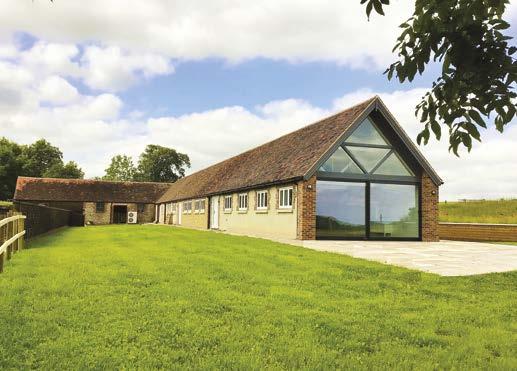

A lovely two-bedroom stone cottage set in the rural village of Trent.

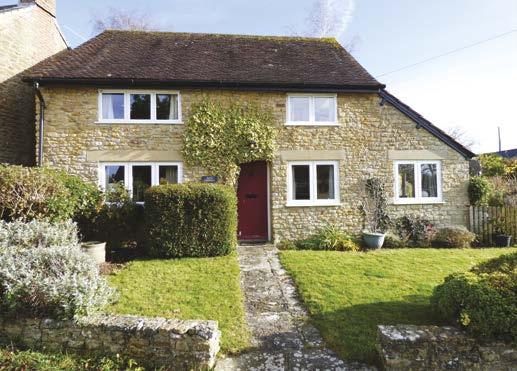
Detached four bedroom family home offering spacious, situated in an idyllic rural location.

Forego Stonehenge, avoid hordes of jostling tourists and traffic traumas, and instead make a joyous journey to the Cerne Abbas Giant. You can take in the wonders of this infamous sight, together with the quiet splendours of the surrounding Dorset downland, then enjoy some refreshment from a choice of three worthy pubs and a tearoom in the nearby village of Cerne Abbas.
The Cerne Giant has inspired many items of memorabilia, including tea towels, calendars, mugs, postcards and even a clock. Recent state-ofthe-art sediment analysis by National Trust archaeologists has revealed that Britain’s largest chalk figure was probably first created in the late Saxon period. This dispels theories that he is prehistoric or Roman, which has surprised many an archaeologist and historian. One theory is the Giant was forgotten and grassed over for many generations before being rediscovered and rechalked.
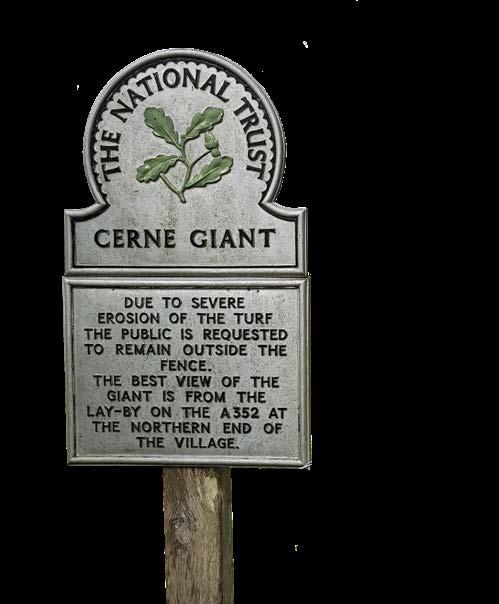
Folklore has branded the 180ft chalk man as a fertility aid, and it remains a popular spot for couples – although they’d now be trespassing.
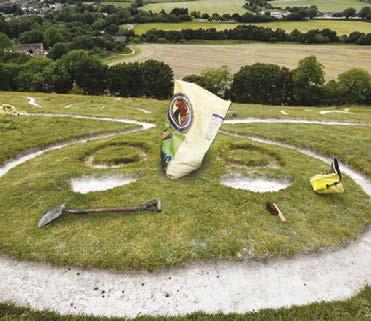
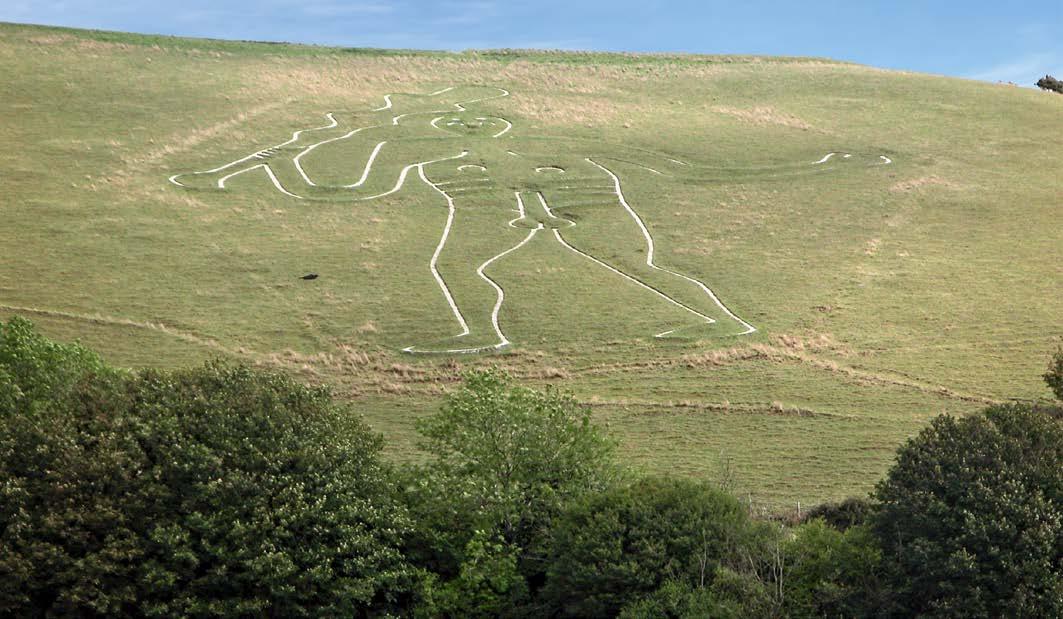
The Giant was gifted to the National Trust in 1920 by the Pitt-Rivers family. A year earlier, death duties and the economic conditions following the First World War had forced the Pitt-Rivers to sell at auction much of their land and property in Dorset, including most of the
land and houses in and around Cerne Abbas. This firm was privileged to act as the auctioneers on behalf of the family. The sale, which took place in Dorchester, realised £67,402 for the family.
Every 10 years or so, the Giant is rechalked by National Trust staff and volunteers. Around 17 tonnes of chalk are packed into the outline, ensuring he is maintained in a healthy state and visible for miles around. During the Second World War, the Giant was covered to prevent being used
The Giant is a scheduled ancient monument and designated as part of a site of special scientific interest. Long may he continue to rise above us.

Well-known by most locals, the Stop Line Way is a fabulous walking and cycling path between Weston-Super-Mare and Axminster. The section from Ilminster to Chard is about five miles, and follows an almost entirely traffic-free course along a section of the old steam railway.
Not only does it provide a safe and peaceful route for families, cyclists and dog-walkers, it also offers some of the more rural hamlets and villages along the way the opportunity to connect with the towns of Ilminster and Chard without having to jump in the car.

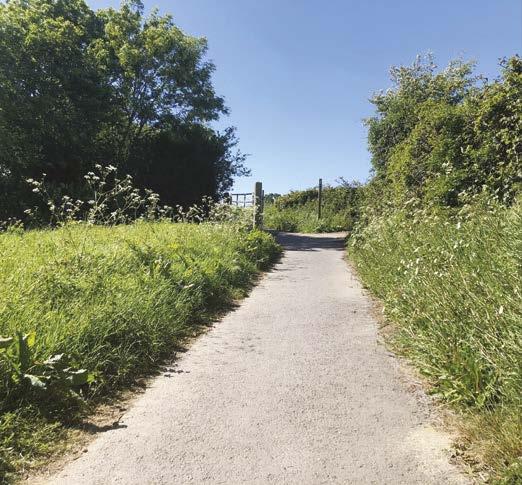
The purpose-built path has lovely views of the countryside
The Stop Line Way is part of Sustrans’ Route 33, the coast-to-coast path linking Bristol to Seaton. The Ilminster to Chard stretch is along a purpose-built path with lovely views of the countryside. As you take in the surroundings, there are strategically placed information boards giving you a glimpse into the past and explaining some of the more surprising structures.
The path is named after the Taunton Stop Line, built by the Army in 1940 to contain any German invasion. The various defences followed the line of the railway, canals and rivers by way of anti-tank obstacles, road-blocks, concrete pillboxes (including one that was disguised as a chicken hut), and even gun-emplacements – some of which are much more obvious than others.
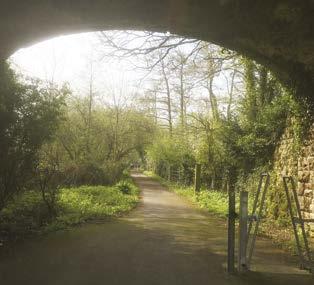
It passes the former railway station of Donyatt Halt, where the original platform
is still in situ. Here, it’s nice to sit for a while on the GWR bench and take in the story of Donyatt Doreen. In 1939, like many other young children, little Doreen was evacuated from London to the West Country. A childless couple took in Doreen and apparently she was very happy with them. Today, the platform has a life-sized sculpture of seven-year-old Doreen sitting on her suitcase waiting to be collected. Her story, along with a heartrending letter from her mother, is on the information board.
Further down the line, passing over pretty streams and through wooded cuttings, you can make out some of the original workings of the Chard canal. Finished in 1842 and running over four aqueducts, through three tunnels and four inclined planes, it was never commercially viable and closed 24 years later. There are traces of the canal along much of the cycle path, not least the beautiful Chard reservoir which was constructed in 1839 to provide water for the canal, and is now a local nature reserve with 88 acres of open water, woodland and meadow.
If you’d rather not start your exploration from Ilminster or Chard, there are plenty of other places to park and hop on the line. Try joining at Sea, Peasmarsh, Donyatt or Chaffcombe to see different sections of the route.
Whether you’re walking your dog, or have little ones learning to ride a bike, the Stop Line Way is well worth a visit – and you’ll pick up some remarkable snippets of history along the way.
Tuesday 29 June 2021: European Championship 2020, England v Germany, last-16 knockout stage.

We set off for London at around 7am from Weymouth. My eldest son, Jamie, had spent hours on the internet securing tickets for what was going to be an historic occasion against our footballing nemesis, Germany.
I drove, picking up Jamie, his girlfriend and his two ‘best mates’ who had managed to persuade him their friendship gave them the advantage over all his other ‘best’ friends who were desperate for a ticket.
We had originally purchased tickets for the Euros two years before, only to have our monies returned when the tournament was postponed due to Covid. As a result, when the matches were rescheduled in 2021, we became priority ticket holders and secured category one seats against the Germans.
We arrived at Wembley around lunchtime, parking at the home of a lovely elderly couple whom my colleague Jon Summers knew from his own Wembley trips. It was just a 20-minute walk to the stadium.
The scene that greeted us outside the stadium was incredible – thousands of England supporters singing the various football anthems, all in a fantastic spirit. The Government had announced capacity was to be increased from 20,000 to 40,000 for the game. You could sense, even with five hours to go before kick-off, the atmosphere was going to be electric.
We entered the stadium at 2.30pm and it quickly started to fill up. We were able to soak up the atmosphere, singing along to It’s Coming Home and Sweet Caroline.
Before we knew it, the teams were on the pitch. The match was simply breathtaking – without question, the best atmosphere I’ve ever witnessed in a football stadium. You’d never have guessed the 90,000-seater ground was operating at less than half capacity.
The tension was incredible. I was shaking throughout the game, thinking back to all the years watching England play Germany. I’d cried when we lost on penalties in 1990 and again in 1996!
But this felt different. The team was inspired by the atmosphere and grew stronger as the game went on. Then, in the 75th minute, the place erupted as Raheem Stirling bundled in the first goal for England.
It’s Coming Home resounded around the stadium and I was now shaking even more, screaming for the team to kick the ball out as Declan Rice was injured. Of course, nobody could hear me and it was just as well. Moments later, Harry Kane headed in the second goal and Wembley went crazy.

The final whistle was greeted with scenes of unimaginable joy. The players embarked on a well-deserved lap of honour as Sweet Caroline rang out from the appreciative supporters.
It was a carnival atmosphere mixed with a feeling of utter relief we could finally celebrate a victory against such opposition. For once, it would be a great trip home!
Football is a simple game: 22 men chase a ball for 90 minutes and, in the end, England win
Between them, Kirsty and Caroline have more than three decades’ experience working in the property industry. Kirsty manages our Ilminster office, and Caroline heads up our Beaminster branch.
K: It’s an early start to get in a run before work – depending on what time my three-year-old daughter decides to wake up! Organisation is key, so we start the day with a team meeting. There can be huge variety in what I do, which is what I love about my job. I can be out valuing properties and meeting potential clients, chasing solicitors or dealing with offers.
C: I love to walk my dog early in the morning across the fields as it helps clear my head and energise me for the day. Like Kirsty, work starts with a morning team meeting where we discuss our agendas and plan our day. No day is ever the same and the diversity means we’re kept on our toes, which is one of the reasons I love my work. At the end of the day, the team assesses what we’ve achieved so we’re ready again for the next day.
K: Valuing properties and meeting potential clients is something I really enjoy, but there’s nothing I love more than being able to hand over the keys to a new homeowner. Knowing we’ve looked after our clients and they’re pleased with the service they’ve received is so rewarding.
C: The people contact. I’ve always worked with the public; when they put their trust in your hands, it’s so rewarding when you succeed in getting the very best outcome for your client.
K: Achieving ‘gold’ in a national estate agency award based on customer service was certainly a highlight, along with numerous internal office awards. However, being a manager and seeing my team develop and progress is always lovely.
C: Being promoted to manager in Beaminster. I’ve lived in this area all my life and love the town. I’m delighted I have the opportunity to continue to offer the best service possible to its residents.
K: Look after and develop your team; organisation and follow-ups are key; and have the correct work-life balance.


C: Communication; time management; and team goals.
K: I’m lucky to have such a lovely team to work with. Between us, we have over 60 years’ experience in the industry, and we know our strengths and weaknesses. Communication is key for us.
C: The success of the office is determined by the whole team working together. We all recognise that and support each other in order to achieve our aims. That sense of all working together makes me stronger.
K: It has always been simple to me – do what you promise you’ll do, always be polite, honest, friendly and helpful. There’s nothing better than seeing smiling, happy people dropping off and collecting keys.
C: Ensuring effective communication is maintained throughout a sale with your client and all parties involved. The issues that often arise during a sale can be successfully resolved if you have established this from the beginning. And always remember: listen first.

There’s nothing I love
than
able
the keys to a
to be a successful branch manager?
Lucy and I got engaged in October 2018 and set our wedding date for August 2020. We did the usual planning (by ‘we’, I mean mainly Lucy) and booked the church, reception venue, the caterers, make-up artist, and photographer. We paid our deposits and all looked well.

Then Covid gripped the world it became clear that August was a potential issue. Everyone kept assuring us “this will all have blown over by then” but a nagging doubt told us to hold off spending more money on the wedding. Just as well – our caterers went into administration and a sizeable deposit was lost.
The Government restrictions meant our dream wedding with 120 guests was not going to be possible, let alone the hen and stag parties. I wasn’t sure what was worse!

Lucy and I decided we wanted to get married regardless, even if numbers were very limited.
We were incredibly lucky that Merley House in Wimborne could host our restriction-compliant wedding reception. Having professionals take the pressure off and make everything seemingly effortless while keeping us calm was essential. Owners, Phil and Fiona, were ideal and their attention to detail was astonishing. Walking up to – and into – the venue on the day are moments that will last with me forever.
The big day felt like a normal wedding, not that I have any experience! The weather was beautifully warm and sunny, and I had time to pop into a pub in Wimborne with my two best men for my last drink as a ‘free man’.
Lucy arrived at the church and looked incredible. I realise I am biased, but she genuinely looked stunning. During the ceremony, no hymns were allowed but we had a pianist, Simon Woodley, to play a selection of tunes. We left the church to Love is Easy by McFly.
Sadie Osborne was an amazing photographer and the pictures, as you can see, were magnificent – she even made me look half decent!
At the reception we managed to squeeze in our speeches. My best men were not too unkind, but it was incredibly emotional – I guess an outpouring of all the uncertainty and stress. Despite all the hurdles, we couldn’t have asked for a better day.
We hope to realise our pre-pandemic wedding plans in February 2022, with a blessing followed by a full day at St Giles House, Wimborne, with all of our friends and family in attendance.
To summarise, I’d use a Bob Marley lyric: “in the darkness, there must come out to light”.
We are just so pleased we did not wait.
Daniel Magee MNAEA

It’s often said good fences make for good neighbours. In my experience, that’s excellent advice. However, this does not take into account that fences may have been erected in the wrong place by mistake or to signify something other than the position of a legal boundary between two neighbouring properties.

For example, the boundary may be intended to contain or exclude livestock, to prevent access to a hazardous area such as a disused pit, or for ornamental purposes of some kind.
While most people do not like confrontation where it involves someone they may normally see every day and have generally friendly relations with, it is also true that some people take advantage of the good nature of others to do things that benefit their own property to their neighbour’s detriment. As a surveyor, my experience is that there’s been a sharp rise in the number of disputes between neighbours in many and varied circumstances.
Symonds & Sampson is registered with the Royal Institution of Chartered Surveyors (RICS) to provide up to 30 minutes’ free initial advice to anyone in dispute with their neighbour over a boundary related matter.
If we are then formally instructed by a client or their solicitor, the process for the surveyor to follow is set out in the RICS Guidance entitled ‘Boundaries: Procedure for Boundary Identification, Demarcation and Dispute Resolution’.
The first stage of the procedure begins with a thorough review of documentary evidence which will include Land Registry information, title deeds, historic plans and photographs, and any other available information that may serve to indicate the correct position of a disputed boundary.
The next stage is to make a thorough site inspection, ideally with the mutual consent of both parties. This will involve recording any features that may be relevant to the position of the disputed boundary, such as old fence posts, hedgerow remains or concrete footings that may once have supported a fence.
At this stage, it is often necessary to bring in a land surveyor to prepare a topographical survey to a high degree of accuracy to record the features on the ground. The survey plan can then be compared with other plans and measurements that may be available.
Depending upon how the surveyor is instructed and whether solicitors are involved, the surveyor will then produce a report with conclusions and recommendations to those involved. In the unfortunate situation that one or both parties is unable to accept the conclusions, then full litigation may follow. If the matter proceeds to court, surveyors may find themselves acting as a professional expert witness to provide independent advice to the court, to whom they have an overriding duty.
Boundary disputes are frequently concerned with very small areas of land, perhaps only a few feet wide and of relatively low financial value. Court proceedings are generally very expensive, often carry a great deal of risk, and can result in judgments that are satisfactory to neither party. Costs may be divided as part of the court’s decision.
It is, therefore, nearly always better to seek to resolve such matters amicably and sensibly between parties without the need for litigation. Where one or other party is acting unreasonably, the use of formal mediation may provide a solution without incurring the same level of cost as full court proceedings. The Boundary Disputes Mediation Service was set up by RICS and the Property Litigation Association, and launched in May 2021 with the aim of promoting mediation as a quicker and cheaper method of resolution.
Any client who is concerned that a boundary matter may result in a dispute can contact me to discuss the matter in complete confidence. We can also advise on other property disputes, including matters relating to restrictive covenants, access disputes and nuisances.

We provide up to 30
free advice to anyone in dispute over a boundary related matterPatrick
Boundary disputes can raise blood pressure and end in court. But, says Patrick Woodford, there are better ways to resolve demarcation disagreements with neighbours
From hats to harmonicas,
to beer, Bridport hosts a festival for everyone.
Allen reports
Bridport has long been renowned for its thriving arts scene. Now, the town has tapped into the nation’s burgeoning appetite for festivals.
The Bridport Hat Festival is a particular highlight. This celebration of headwear combines live music, competitions, demonstrations, talks, displays, games and hatted dogs – yes, really! The festival culminates with a mass hat-wearing photo shoot in Bucky Doo Square.

Last, but certainly not least, there’s the Melplash Agriculture Show – which I think is the most perfectly formed agricultural show in the country: not too big, not too small, with a family friendly atmosphere that few shows can match.
All these events share the
of a town that could have been made
festivals
The Bridport Folk Festival is relatively new, having been inaugurated in 2016. It features a wide variety of performers from around the country and indeed the world. Also on the music front, the Jurassic Fields Music Festival is a two-day family friendly event that showcases the best in music and comedy that the region has to offer.
The Bridport Food Festival, as you would expect, is all about local produce and drink from in and around the region.
BridLit has grown in stature since it began in 2005 and is now an internationally renowned literary festival, welcoming writers and audiences from far and wide. It has an eclectic programme of events catering for all tastes and interests.
All these events share the backdrop of the beautiful Jurassic coastline and a ropemaking town that could have been made for festivals with its market-friendly wide pavements. Whether you live in Dorset or are visiting on holiday, pick your theme and join in the festival of fun that is Bridport.
•
Food Festival:
•
Fields Music Festival:
•
Agricultural Show:
Steve Allen MNAEA





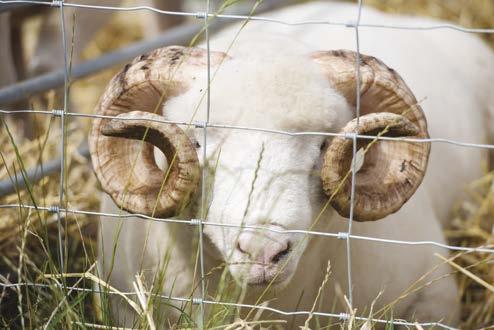
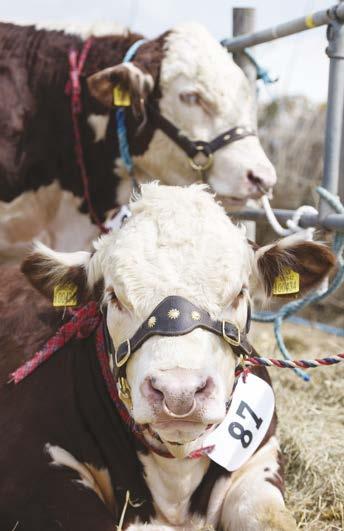
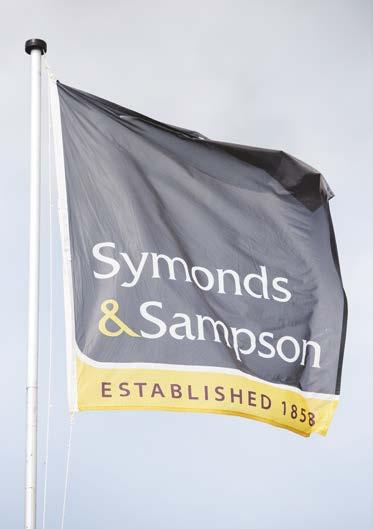
The members of a local gardening club never dreamt they’d compete at the Chelsea Flower Show. But in 1980, the BBC gave them the chance. Jane Crabb recalls their efforts to bring a gold medal back to Beaminster

Beaminster Horticultural Society, formerly Beaminster and District Gardens and Allotment Society, took on a huge challenge in 1979/80 putting together ‘A Dorset Country Garden’ for the 1980 Chelsea Flower Show. The BBC had a programme called The Big Time and were looking for a small amateur gardening society they could film competing in the most prestigious flower show in the world.
Beaminster had a committee of five, headed by the late Joan Macksey. Around 130 members were asked to volunteer the contents of their gardens. Weeks of garden visits took place to select and index likely plants for the garden. The aim was to use older, traditional varieties of plants, concentrating on those blooming during the season bracketing 19 May – judging day.
Chelsea show committee. The vetting was filmed by the BBC, and John gave the go-ahead, subject to getting over the next hurdle of getting the plan for the garden accepted.
Filming continued as two large plastic tunnels were constructed to keep plants over winter, and members brought their prize specimens to go inside.
A full-scale plan had been placed on Joan’s lawn
In November the plan was accepted, and we’d been allocated a larger plot, which pleased the committee enormously. We were also informed we were being allocated a key position in the showground.
Over the winter, the preparations continued and more space was required. Winter gales tested the team and taught us some valuable lessons.
Towards the end of August, the RHS sent a representative, John Mattock, an international rosarian and chair of the
Ham stone was selected and put outside to weather. The cottage was constructed in sections, together with a removable thatched roof which was again put outside to weather. A work and movement plan was drawn up to cover the three weeks
before the show, the week of the show,
the week after. It covered both Beaminster and Chelsea locations.

From February onwards work began in earnest: watering, feeding and checking for bugs and fungus etc. Owners of plants were encouraged to visit the tunnels on Sunday mornings. That way, enthusiasm did not wane, and more people offered to help.
A full-scale plan had been placed on Joan’s lawn and, shortly before leaving for Chelsea, plants were arranged on the plan.
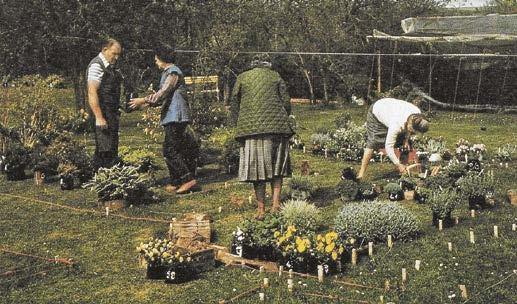
Work started on the Chelsea site and the group felt very much the amateurs – using spades, pickaxes and muscle rather than machines. There were a few construction issues, but only minor, and then it was time for the plants to arrive which had been superbly packed by a dedicated team back in Beaminster.
For a week prior to the show the team was almost too busy to notice certain authoritative looking personages surveying our activities, and we did not register their importance. Judging is not just done on the day, there are 12 judges in total and they wander around in ones and twos, sometimes twice a day for several days, deliberating and assessing as we put together our exhibit.
On judging day, only one representative from the Society was allowed to stay on the garden during the final judging. Joan was chosen, and The Big Time interviewer asked if she was nervous. Joan could only reply: “Yes, very.” The judges conferred out of earshot and then moved on. Next came the Queen with the President of the RHS, followed by other members of the Royal Family.
We spent an anxious night waiting for the results at 7.30am, when the show manager was due to deliver the allimportant envelopes.
The team arrived and were filmed approaching the garden. Joan was handed the envelope and we all learnt we had won the gold medal. A great cheer went up; we were laughing, crying, hugging and kissing one another. Someone rushed off to telephone the news back to Beaminster, and a large notice was posted on the newsagent’s door.
The next few days were spent on duty at the show with the crowds always two or three deep around our garden. By midday on the Saturday, the site was cleared and by the following Monday, plants and features were being returned to their owners.

The Big Time was shown on the BBC that July, and letters of congratulations poured into Beaminster and the BBC.
Following this, Beaminster Horticulture was formed with an affiliation to the RHS. We meet on the third Tuesday of each month having a selection of talks visits and outings. If anyone would like further information, please contact bemhortsoc@

There is considerable synergy between art and property. Many, like me, view art as essential in giving a place character and identity. Incredibly powerful, it has the ability to completely change the appearance and atmosphere of an area the moment you enter.
Once a way of displaying wealth among aristocrats and royalty, who bought pieces to exhibit in their homes and private collections, art has now become an affordable way to celebrate a space through personal taste and expression.

Already used as a tool for publicity in advertising, selfpromotion, corporate and political agendas, art is also used to enhance properties and bring in potential clients. It can make a space come to life. If you walk into an empty room, it can be hard to envisage what it could look like. Art can maximise its potential –changing its perceived size and height, and opening up more possibilities to buyers.
Artists (and estate agents) are aware of how a well-painted mural or fresco can add considerable value to a property. Research from the Affordable Art Fair revealed that murals can add thousands to your home and, in the case of a Banksy, millions.
Of course, personal taste can be divisive, so trompe l’oeil paintings are often a safer way to express your creativity. A traditional landscape reflecting a special place or memory, a realistic mouse painted in the corner of your kitchen, or fluffy white clouds high on the ceilings are just a few ways to add character to your home without overwhelming it.
Art gets everyone talking and encourages people to come together; it connects us with our surroundings and the landscapes we inhabit. It is so personal and has the ability to affect someone as they enter a room.
atinka’s great-grandfather was illustrator and cartoonist
GL Stampa, whose contributions to Punch from 1894 became well known across the UK. Having grown up surrounded by his original drawings, she began her own career in art and dabbled in illustrations from a young age. Later branching out into photography at school and then later at university, Tinka quickly found her love of painting after she left education and has been a successful freelance artist since 2015.
The introduction of art to a space can help define cultural backgrounds, create appreciation of an environment, and change public perception. Art and property have a symbiotic relationship, whether it’s the introduction of art to dress a property to help it sell, or decorating your own home.
When I settled down in rural West Dorset, I became a freelance artist and have since gone on to specialise in trompe l’oeil murals and decoratively painted furniture. Art runs through my blood, so in my current role as Symonds & Sampson’s Marketing Manager in the London office, I try to bring some connection between the art world and the property world.
The study showed we are apparently willing to pay almost £9,000 more for a property on a road with vibrant street art, as many believe living on a “colourful street” lifts moods and brings communities together.
A well-placed piece of art can be the perfect finishing touch to your home, says Katinka Stampa Orwin
K
Art gets everyone talking and encourages people
come together

For me, photography has always been a quiet, relaxing medium; a way to express my inner thoughts and feelings, and have time to concentrate on what is important. And what’s important to me is the subject of home – of peace, comfort and familiarity.
My interest in photography started when I realised I couldn’t draw or paint. I was never going to be a traditional artist, so my art teachers suggested I pick up a camera and start using my creative eye rather than my not-so-creative paintbrush. I loved it.
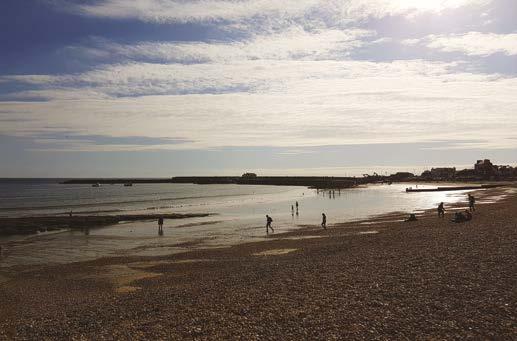
I went on to study photography at university, where I acquired the structure and purpose to create work. However, the format was limiting as it was subject to deadlines. The way I create work now is fluid and, most importantly, slow. It is primarily about the idea development and the individual image outcome, rather than the quantity of work produced.
After graduating, I moved to London and took a job at The National Portrait Gallery, invigilating exhibitions and assisting with customer experience. Sadly, this job was not as full-time as expected, and I spent more time visiting other art galleries than working in The National.
I found myself stepping into a recruitment firm looking for a position as a photographer, and walking out with a job in property. Of course, there is photography involved in the property industry. However, I was drawn more to the end goal – finding someone a home.
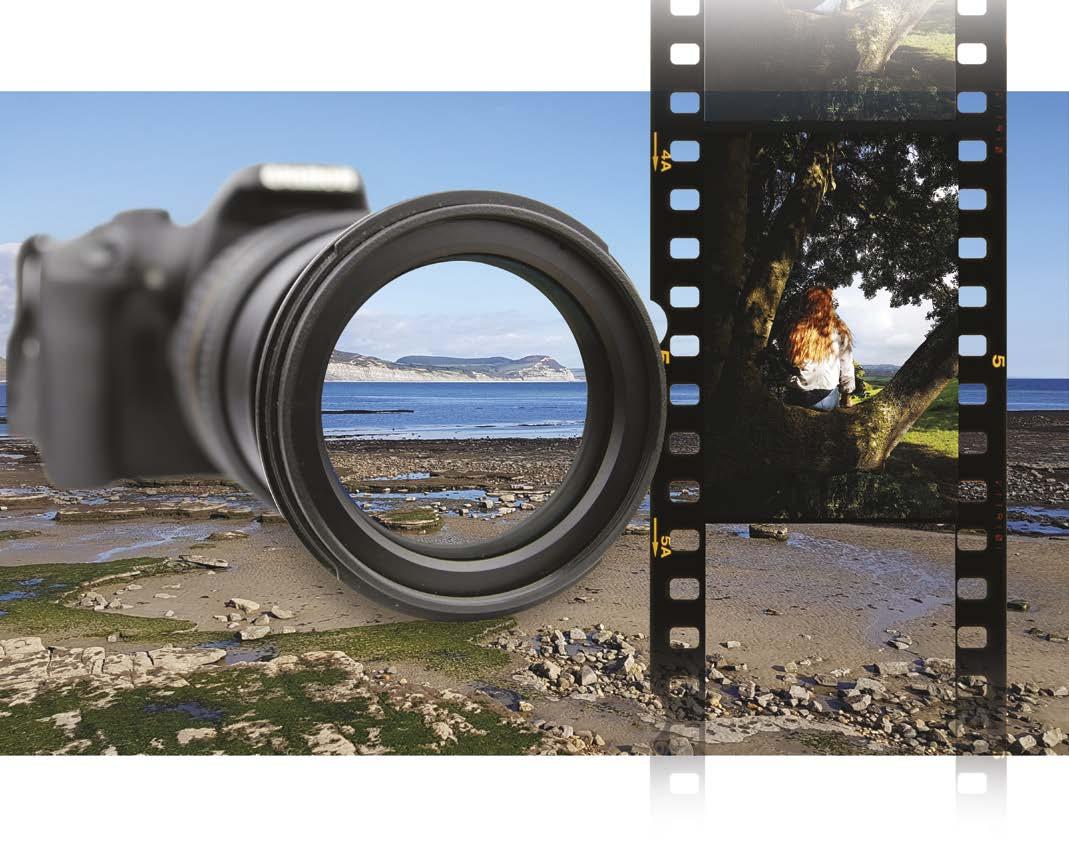
I did wonder whether I was moving too far away from my skill set, but after serious consideration I realised property wasn’t so far removed from photography.
As a photographer, the subject matter is always the most important factor within any project. And my main purpose as a photographer was to delve into the subject matter of home. Funnily enough, this matched the property industry’s purpose too.
I’m still in the process of discovering the part that picturemaking will play in my life and my relationship with it. My photography life is an insight into my relationship with my home and my most comfortable moments. My work life is an insight into how I want others to experience the importance of home. The two coexist happily.
main purpose as a photographer was to
into the subject
of home
her passion
career
A stunning penthouse apartment with views over the harbour.

A delightful village house for improvement, set in mature gardens.
A Grade II Listed former former hall house with panoramic views across the Axe Valley.
A delightful barn conversion standing in large mature gardens.

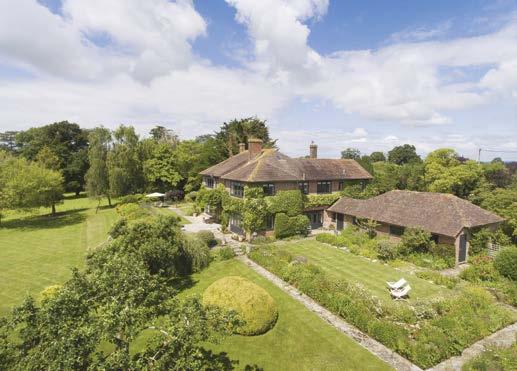

A beautifully refurbished and extended property overlooking stunning grounds and lake.
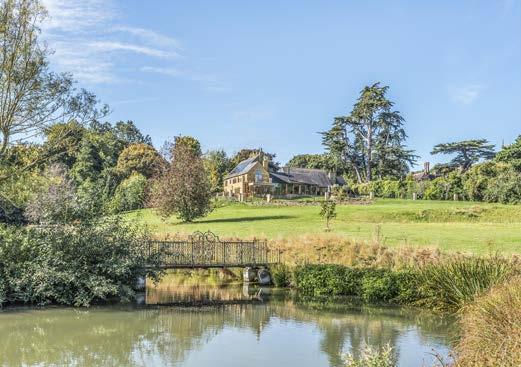
A sympathetically and beautifully restored 1950’s house

An extended cottage in 1.4 acres, set in a glorious rural location.

Arguably the finest house in Dorchester, a Grade II residence in the heart of the town.


An imaginatively converted former church standing in just under 1 acre.
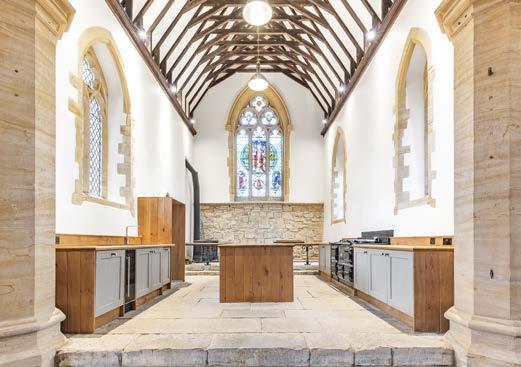
A charming house which played an integral part in the town’s history.
A fine house dating from the 18th Century, in an elevated position with stunning views.
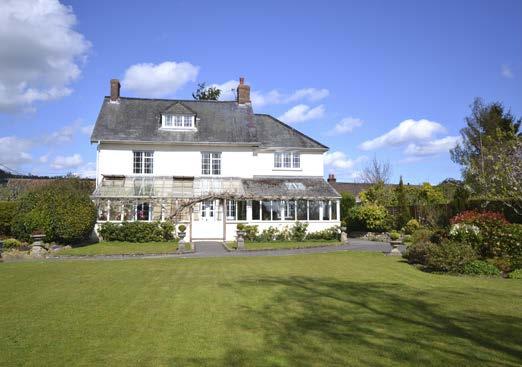
An outstanding contemporary cliff top chalet on the Jurassic coast.

A charming Grade II listed farmhouse in a lovely rural position with countryside views.

A fine Georgian residence with holiday apartment, garaging and sea views in just over an acre.
One of the finest homes in Weymouth in 1.3 acres, and boasting privacy, space, sea views and location.



A unique architecturally designed country home in 1.9 acres.
A classic Georgian rectory in over an acre, tucked away in a sought after village.

An elegant town house overlooking the Great Field and beyond.
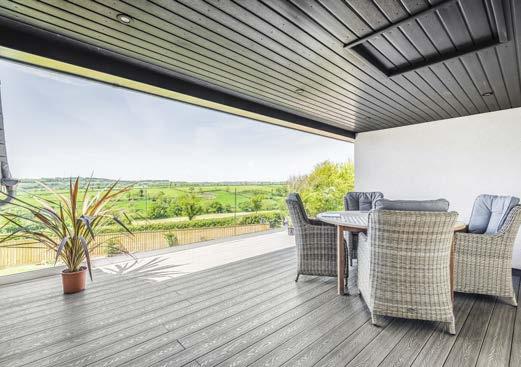
A delightful Grade II listed cottage adjoining open countryside with stunning gardens.


A characterful Grade II Listed farmhouse in an accessible location.

A handsome Georgian Townhouse with walled garden leading to the River Stour.

It has not been the easiest year to buy and sell property, but Symonds & Sampson have come up trumps on three counts: selling our previous home, arranging a rental contract and matching us with the lovely new home we have just purchased through them. We would definitely recommend them and would use them again.
Kh


An extended bungalow with a secluded garden in a quiet cul-de-sac location.
If like me you have previously had poor experiences with estate agents, this is the Agent to restore your faith in the value of this service. Some good ‘old fashioned’ customer service with good communication and a ‘can do’ problem solving mentality. Without doubt they helped to keep the transaction on track by good communication and through being prepared to get involved constructively to help both parties negotiate a solution. I would not hesitate to recommend them to anyone!
The Dorset flag is a bold yellow with a red bordered white cross and is dedicated to Saint Wite. She is understood to have been a local woman and lived in the ninth century in Charmouth, two miles away from the village of Whitchurch Canonicorum, where her relics have been kept. She worked tirelessly for the local community and a local tradition holds that she lived as a hermit on the cliffs near a sacred well and offered a light to ships at sea.

The first recorded Viking raid on England took place on Portland with three ships landing in 789 and St Wite is believed to have been killed by the marauding Danes soon afterwards.
King Alfred is believed to have built a church in her honour which houses her remains and it became a major place of pilgrimage, where people inserted the sick parts of their bodies into one of three oval holes beneath her limestone coffin and prayed for intercession, with lepers having separate openings in the outside wall!

People seeking some history can visit St. Wite’s holy well in Morcombelake. This little holy well of pure water was first mentioned in a 1630 document claiming that the saint herself used to live and pray near this holy source. It is famous for healing eye diseases and other complaints and interestingly, wild periwinkles that bloom around it in plenty are often referred to as “St. Candida’s eyes”.
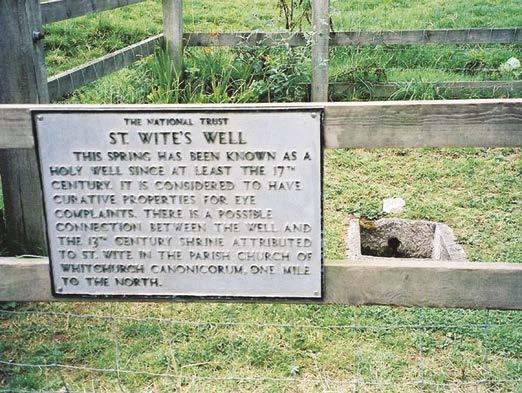
We all love where we live and are proud to be connected with our county. You may fly a flag from a pole or attach a sticker to the car but are you aware of the background to your flag’s design?
The green represents the colour of the rolling and lush Devon hills, the black represents the high and windswept moors (Dartmoor and Exmoor both the salt spray of Devon’s two coastlines and the Clay industry.



presentation of the famous round table of Arthurian legend, where all the knights of the court sat and is believed to date from around the fourteenth century.

The oldest reference of a crown and rose in combination, as a specific Hampshire emblem, appears to date from 1681.


From retail units to secondary industrial property, Ryan Holmes helps you navigate the commercial property market
The commercial property Monopoly board has been upended by Covid-19! Those who had their top hat on the valuable Mayfair and Park Lane squares might now be sitting on Old Kent Road, and vice versa. Where once prime high street retail stock was in high demand, it is now secondary industrial property – the long-neglected, high-yielding ‘Cinderella’ of investments –which is now the must-have for investors, as occupier demand and rents continue to rise.
term residential conversion potential, particularly in properties with existing commercial accommodation at first, second and third-floor levels.

Demand is expected to increase for most commercial property asset classes
Given the changing landscape of the commercial property investment market, here are a few thoughts for 2022.
New investment in the high street and retail sector is predominantly restricted to smaller units and those with long-
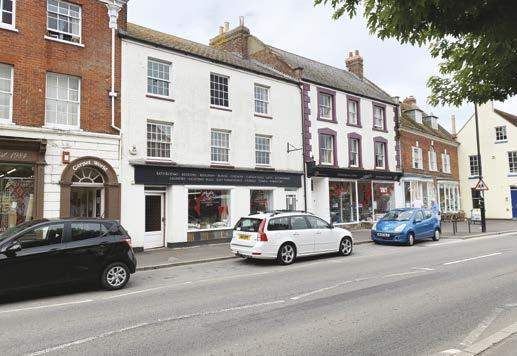

Inflation is already upon us, with the expectation of rising interest rates contributing further to this. It’s also apparent that cash in the bank is likely to have significantly less buying power by the end of 2022.
Although rising interest rates may be a sliver of good news for savers, the practice of buying assets as a ‘hedge’ against inflation and future tax liabilities continues to drive the growth in popularity of commercial property investments.
Accordingly, 2022 should also be a very good time for vendors of commercial property investments, as demand is expected to increase for most commercial property asset classes.
Focus on economic growth is expected to be magnified in 2022 as the country’s workforce continues to adapt to the post-Covid world. For a large proportion of the population, working from home has become the new normal. Many businesses have been forced to seek out ways to increase efficiency with a smaller workforce, as well as adapt to new ways of working, particularly those whose staff continue to travel to work. We anticipate that, in general, productivity will increase as a result of this.
Awareness of business’s impact on the environment and ever-tightening energy performance requirements for all commercial buildings are driving a flight to quality by occupiers who seek to improve their green credentials and lower their carbon consumption.
Locally, the property sales process remains frustratingly slow. This is emphasised by the high workload and resultant limited availability of local professional service providers such as valuers, building surveyors and solicitors.
Significantly, sales progression is further frustrated by delayed local authority searches. Although this is not confined to commercial property alone, we recognise that in an increased number of cases sale by auction, where the vendor’s solicitor (not the purchaser’s solicitor) controls the sale timescale through the provision of the legal pack, is now the way to go. This avoids the pain of additional and unnecessary delays which we have seen throughout 2020 and 2021.

Cost inflation is also having a higher impact on property owners and occupiers, particularly in insurance which seems to be all the more difficult to obtain, especially on certain types of property, which increases the occupier’s costs burden. This, together with the rising price of utilities, maintenance, compliance and building cost inflation means investors are looking at purchases more carefully.
Taking advantage of any capital allowances on purchases



for the plant and machinery element of buildings (which can, in certain cases. be back-claimed for purchases prior to 2014), tax incentives on removal of asbestos, replacing asbestos fibre cladding etc, will all benefit a well-advised buyer in 2022.
With the ever-advancing digitalisation of records, property information is much easier to obtain. Specific information on flooding history/risk, land registry entries, listings, planning and business rates is all available to the general public. However, interpreting the information, solving problems and strategising can still be incredibly stressful and difficult. The value of consulting an expert, with the additional insight their experience gives, is immeasurable. At Symonds and Sampson our commercial team is staffed by qualified, experienced surveyors who are experts in their craft. We are approachable, resourceful and would be pleased to provide your perfect commercial property solution in 2022!
The pandemic has turned our homes into multifunctional hubs. They need to tick a lot of boxes, and questions that seemed unimportant when we signed on the dotted line have taken on greater significance – “Where will I put my desk?”

And while it’s easy to appreciate the vicissitudes we have endured through as consumers, what about businesses? How steep the learning curve has been for companies used to greeting familiar faces as they walk through the door of their high street shop, suddenly forced into the unsettling vastness of the web.
For estate agents, this has meant a complete about turn. No more sitting with clients flicking through brochures until you find that perfect property. No more tours of beautiful homes discussing the pros and cons of living in the country, or discovering the clients’ visions of the future over a cup of tea.
On 21 October 2019, the then Housing Minister, Esther McVey, announced plans to bring about a “digital revolution in the property sector”, a mere six months before Boris Johnson brought us into the first of the UK’s lockdowns on 23 March 2020.

While McVey’s intention at the time was to make it simpler for buyers to find and purchase land or property, this sentiment has flooded into every aspect of the property market. Agents, like many other businesses, have been forced to adapt or fold.
It’s no secret the writing has been on the wall for traditional media in terms of advertising spend supremacy for a while now. In February 2019, online spend officially exceeded offline for the first time, and predictions have online marketing holding a 75% share by 2023 – a dominance owed in no small part to the pandemic. More than 80% of consumers have increased their digital content consumption since the pandemic
They are more aware of how the businesses they are engaging with are prioritising the care of their customers and staff, as well as the rhetoric of the brand itself.
However, while most agents are great at focusing on customers’ needs and concerns when it comes to talking, when it comes to writing, we have a habit of getting rather selfabsorbed! From letters to websites, blogs to social media and even canvassing, it’s: “We pride ourselves on this; we believe in that; we got an instruction; we did a deal.” In my world, we call this “we-ing all over people”, for obvious reasons. If you were to come up against someone doing this in person, it’s like fingernails down a blackboard. So why are we so quick to put it in writing?
Now required to produce copy at twice the rate, and with face-to-face conversations still few and far between, how do you engage in conversational selling without the conversation? The answer: Video.
More than 500 video viewings have been uploaded to the Symonds & Sampson YouTube channel since April 2020, and that doesn’t include those going directly to social media or live video tours conducted by an agent.
More than 72% of people say they would prefer to learn about a product or service by watching a video. By utilising their social channels, businesses are giving consumers what they want – engagement. But that begs the question: is social media becoming sales media? It’s a fine line, and one we’ll be treading with care.
F rances Hodgson Burnett, author of The Secret Garden, said: “If you look the right way, the whole world is a garden.” Never has this been more accurate than in recent times when our personal worlds became smaller, and our gardens – if we were lucky enough to have them – expanded with potential.
When the country was ordered to stay home, businesses closed their doors, and travel was non-existent, our gardens were there waiting for us. They became multifunctional places of solace. People who once would never have even imagined picking up a trowel were suddenly waking up to the wonders of horticulture.
As a professional gardener, I saw first-time gardeners finding focus in a vegetable patch at the nearby allotment. I saw gym-goers creating outdoor workouts to keep their minds and bodies conditioned. Social media exploded with images of wisteria-draped homes, and there was a flurry of building activity as the ‘garden room’ took hold.

Benefiting from gardening demands patience, repetition and hard work, but it can deliver excitement, hope and reward. All of which have been so vital during lockdown.
During the Second World War, ‘allotmenteers’ helped supply food to the nation. In the Covid pandemic, allotments and the ‘grow your own’ hashtag are proving their worth – if not for supply, but for the bonding process of bringing communities together, feeling safe and reducing anxiety through green spaces.
For residents of care homes, the value of the garden has taken on a special meaning amid the pandemic. Cut off from visiting family and friends, and disconnected from the outside world with a ban on excursions, the presence of gardens and outdoor spaces that residents can enjoy has been invaluable.
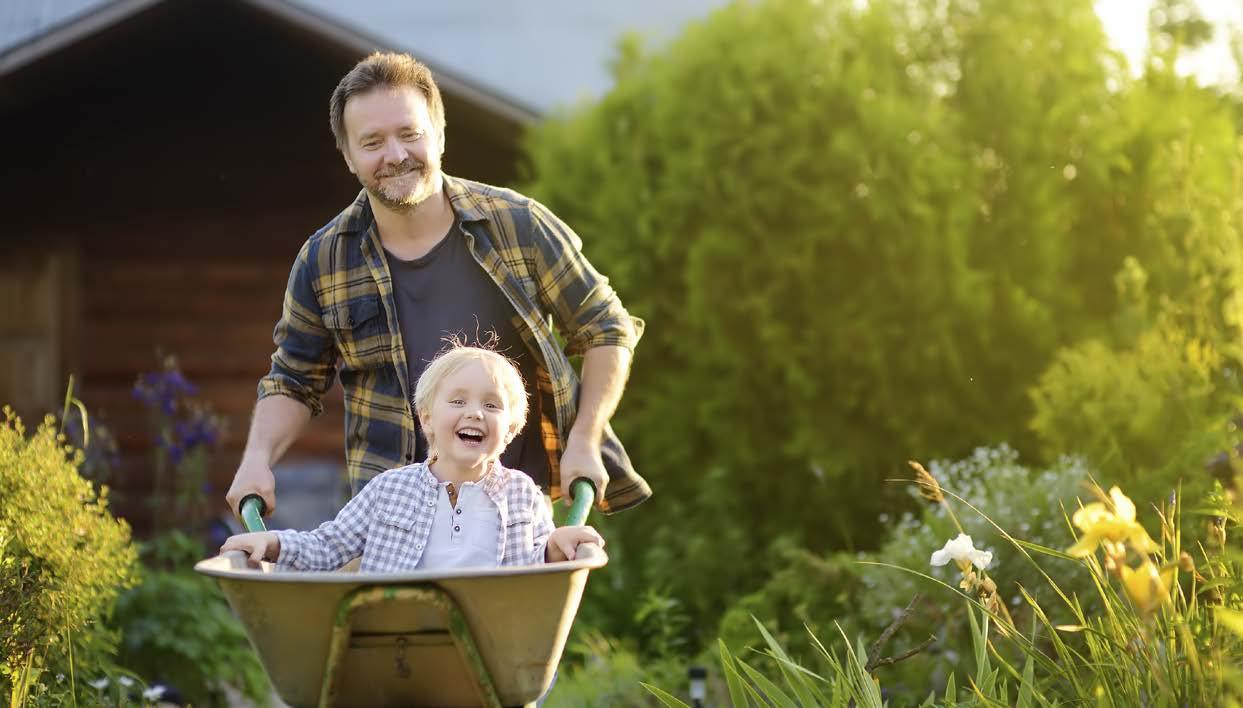
As somebody who provides gardening services to the care community, I for one have felt a huge degree of pride knowing I
have contributed to the daily happiness of care home residents.
Little things can make all the difference. A daily potter around the garden for one resident, noticing the changes I have made on my latest visit, enjoying the sensory hits of catmint and salvias, and patiently watching the bulbs rise and open up, gives an added delight to their day.
Many residents were once keen gardeners, but are no longer physically up to the task. It’s my job to make them feel like they are still walking in their own gardens. And believe me, they always tell me where the weeds are!
The experience of lockdown has highlighted to us all how important it is to get outside and enjoy fresh air and the power of nature. Whether it’s a socially distanced BBQ, a jolly around a delightful open garden for the National Garden Scheme, or the sight of families enjoying a picnic in the park, outdoor spaces have proven to be priceless.
From a professional viewpoint, I have seen the marriage of indoor and outdoor space. Increasingly, homeowners keep their gardens as an extension of the home – dressing their gardens as they would their interiors with lighting, furniture and ornamental touches.
And from the viewpoint of someone who simply loves gardens, there has always been something meaningful about working the soil and cleansing your thoughts at the same time. Over the last year, we have all found that getting closer to nature really does lift your spirits.
To me, the value of the garden has never been higher.
Lockdown has highlighted how important it is to get outside and enjoy the power of nature
Adam Sexton
As market leaders in our region, Symonds & Sampson is well positioned to provide a snapshot of the current local market. Opening rural offices in Devizes and Tiverton in the last two years has significantly increased our coverage and resulted in instructions to sell properties in areas stretching from Swindon in Wiltshire, to the New Forest in Hampshire, and Okehampton in Devon. We have also added significant numbers of buyers to our register.

Following 2020’s disrupted market, 2021 brought with it an increased supply of farms and land of all types and sizes.
Most sales came as a result of retirement, with plenty of vendors deciding to take advantage of strong values to sell. And although death, divorce and restructuring also featured as reasons for sale, the low interest rates meant there were relatively few forced sales, compared to the 1990s.
While the supply of farms over 100 acres, and blocks of land under 20 acres, has been reasonable, we have noted a lack of smallholdings of 30 to 80 acres. An increasing number of buyers view these farms as good value for money and are not discouraged by larger acreages.
During 2021 we saw a 44% increase in buyers registering to buy farms, and a 35% increase in land-only buyers compared to 2020. This has been in large part due to the pandemic, with buyers from London and the South East seeking smallholdings and farms.
There is increased desire from all areas, especially townsfolk, for more outdoor space, leading to stronger demand for parcels of pasture and amenity land.
Buyers with rollover funds from development land sales and business sales feature prominently for larger blocks of bare land.
A relatively new type of buyer has emerged in 2021 –organisations and individuals seeking land for green purposes wishing to manage land for environmental benefit rather than food production. Plans vary from tree planting to rewilding, carbon offsetting, and green energy production.
This includes developers offsetting areas for tree planting against larger buildings sites, and local and global investment funds seeking land for solar installations, feeding bio-digesters, battery storage and other renewables.
Here in the South West there are not large swathes of commercial forestry, but we do have plenty of smaller woodland areas from 5 to 50 acres. We are finding that woodland often achieves similar per acre prices to pastureland.
With the farmland market attracting interest from a wider audience, the buyer profile has changed. For many years, farmers made up 60% to 70% of buyers, and although they are still the largest proportion of buyers, farmers now make up around 50%.

We are blessed in this region to have a diverse mix of dairy, arable and livestock farms which, from a selling viewpoint, creates competition for different uses.
Activity and values have risen in 2021 and, ignoring blocks under 10 acres which normally fetch a premium, values for bare land have ranged from £5,000 to £15,000 per acre – a huge span. Applying a mathematical average price to a relatively small sample is hazardous (for me and the reader), therefore it is more representative to write that most land is achieving £8,000 to £9,000 per acre.
A trend in recent years has been a divergence of value between the best and the poorest land. However, green buyers are putting a bottom in the market for marginal land which has been historically more difficult to sell. This is particularly evident on steep land, and land on the Somerset Levels which used to go for £3,000 per acre and is now fetching more than £5,000 per acre.
Competition has often been fierce for land bordered by neighbours, and prices for smaller parcels in particular have surprised us. We often put the smaller parcels to auction, and our livestream property auctions have performed very well.
There is a growing trend towards private off-market transactions, and we have conducted a number of these for clients who value our in-depth knowledge of other transactions and the market. That said, when it comes to being sure you’ve achieved the very best price, you can’t beat the open market. And now is a very good time to take advantage of high demand and put your farmland up for sale.
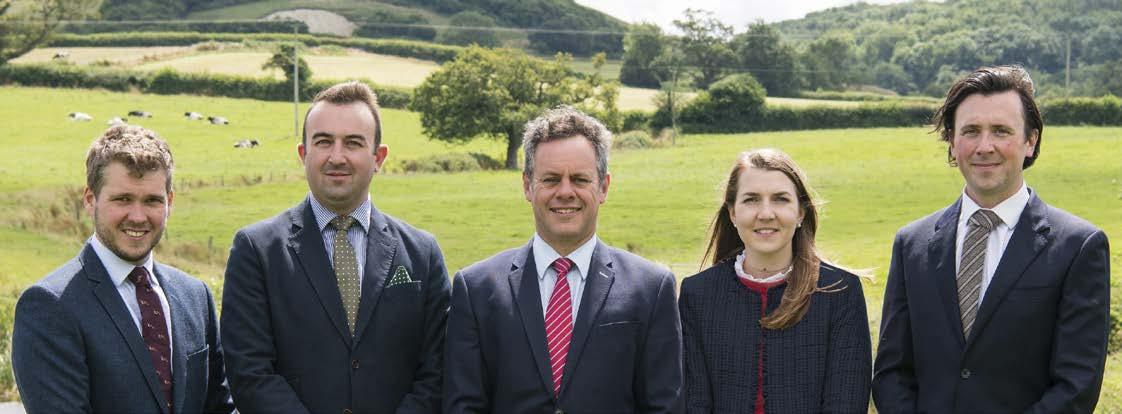

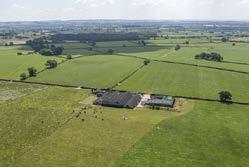

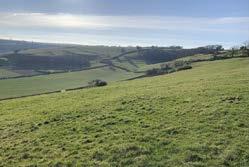
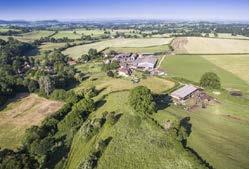
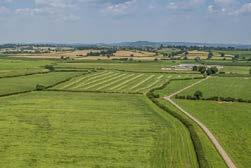



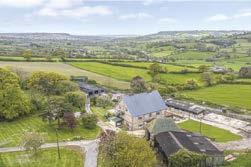


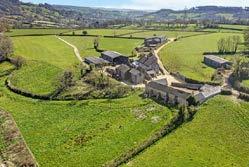

Symonds & Sampson has enjoyed one of the best periods for selling farms and land throughout our region, and the type of person buying, or bidding for, land is beginning to change.
We have always sold to farmers, people looking for a tax haven, and those taking the ‘long view’ hoping there will be some non-agricultural/development use for the property one day. These people are still very active, and we do not anticipate demand from these ‘traditional’ buyers declining.
The people looking to buy their little piece of England have always been on our books but the major motivation now seems to be peace and seclusion. We wonder whether the pandemic has made some individuals crave their own space where they can be more isolated and away from the rest of the human race?
Certainly the smaller parcels of land, especially if there is pasture, woodland and water, have attracted an enormous amount of interest. If there are buildings or a shepherd’s hut on site the number of telephone calls and emails can paralyse an office.

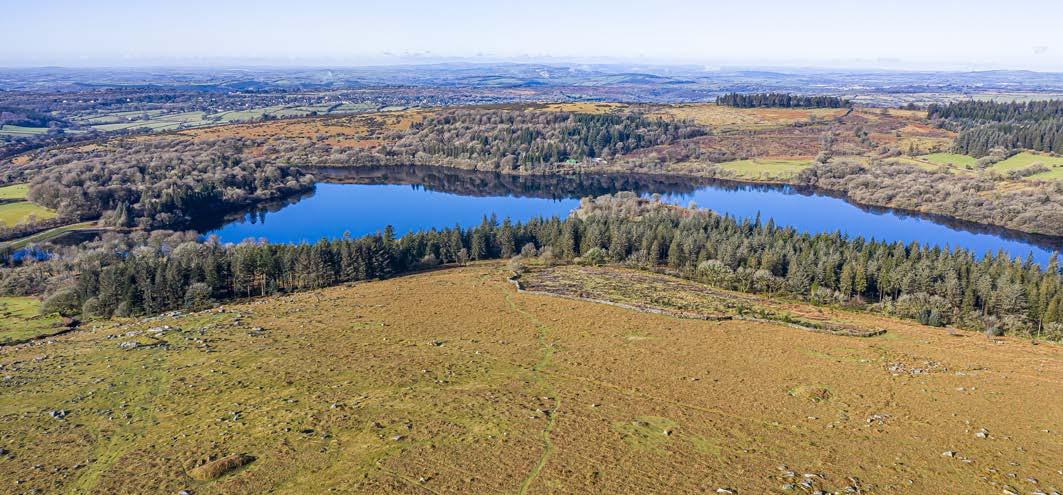
Some of these people are also looking for somewhere to ‘get back to nature’ and use the land for coppicing, or growing vegetables and fruit. This is very worthy and I always hope the initial enthusiasm does not wear off.
Among other types of buyers are those looking to offset their carbon footprint by growing broadleaf trees. It is understood that if a person drives 10,000 miles then five trees should offset this and provide wildlife habitats, support biodiversity and, possibly, enhance parts of the countryside.
We are also receiving more calls from rewilders. These futurists want nature to take care of itself and allow natural processes to shape the land and sea, thereby repairing damaged ecosystems and creating biodiverse habitats. If this is in collaboration with others there can be possible benefits for flood alleviation and a provision for renewable energy. It can, however, be a controversial matter if not handled properly. How will our beautiful countryside look in 20 years’ time, should rewilding take off?
In Hampshire a project aims to set up an online ‘nitrate trading’ auction platform. Through this, housing developers will buy credits to create new habitats such as meadows, woodlands and wetlands – which will prevent harmful levels of nitrates from new housing reaching the Solent’s rare wildlife and habitats.
In Somerset, Natural England requires any development that will have an impact on the environment to ensure phosphate nutrient offsetting mitigation is in place for the duration of the effect. This affects commercial buildings and extensions where the number of employees increase, holiday accommodation, and anything that increases waste water. We anticipate more interest from this sector.
All of these different factors make valuing farms and land quite a challenge and, occasionally, what we think the property is worth can be significantly different to the buyer’s view; after all they are the ones signing the cheque! The next two years will be fascinating – the next five could shape the future of the world.
The major motivation now seems to be peace and seclusion
Ross Willmington
We are constantly analysing where our buyers come from and here is a snapshot. The map shows that although a lot of people are moving to our region from the Home Counties and London, there is great demand from people throughout the UK.
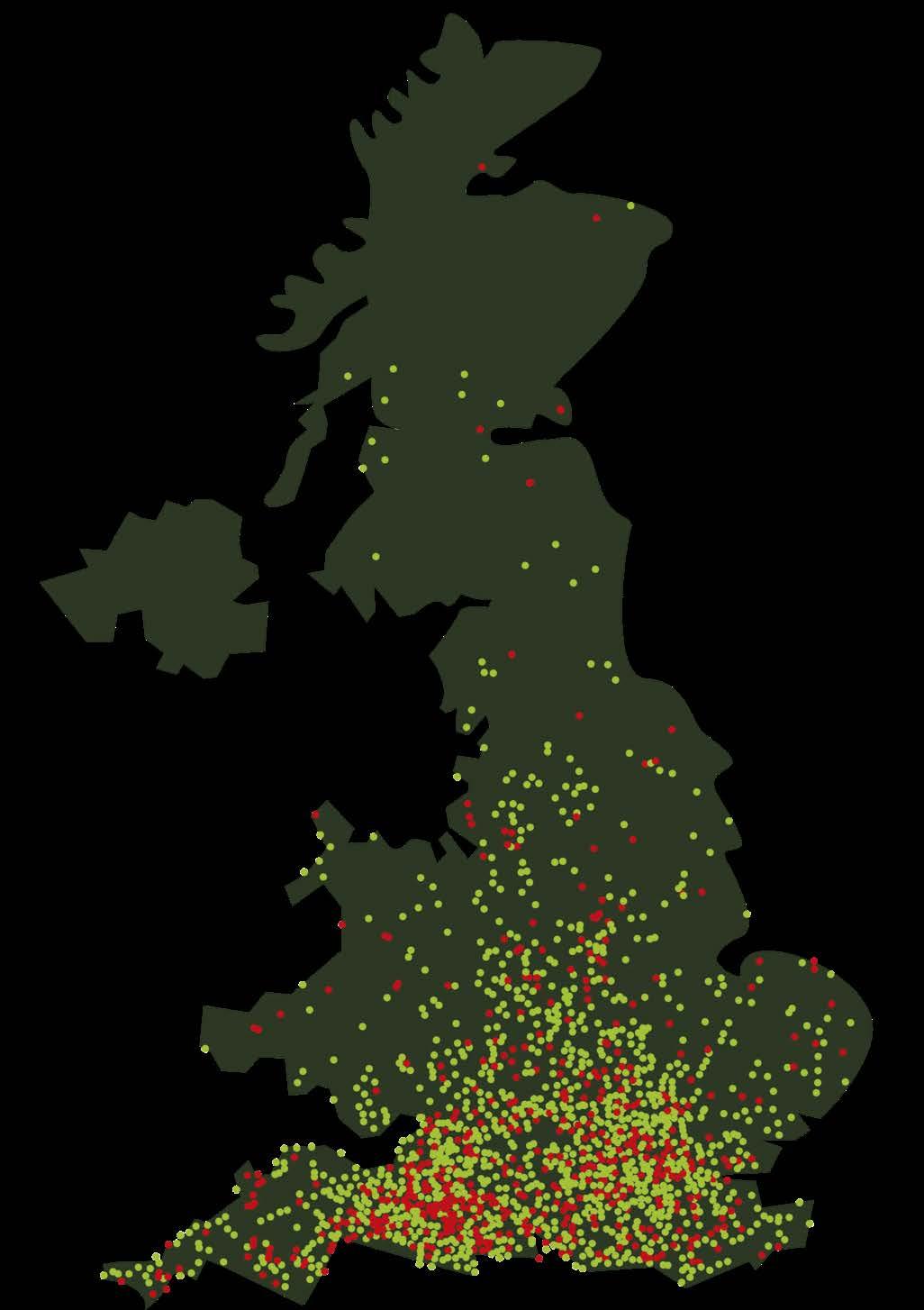
As a partner in the firm and our head of farm agency, Andrew Tuffin is an unrivalled expert in the business of buying and selling farms. Here he picks his highlights from Symonds & Sampson’s 2021 sales
Hamwood Farm, Stalbridge

154 acre commercial dairy farm with stone farmhouse, excellent range of buildings for 300 head herd and valley gravel soils. Sold locally with national competition.
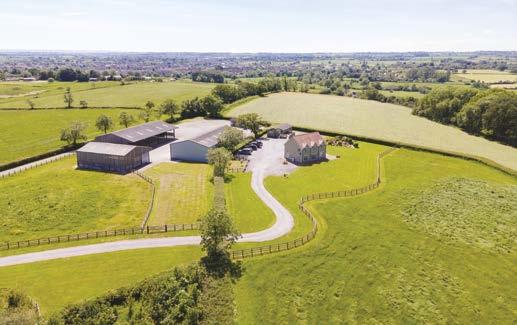

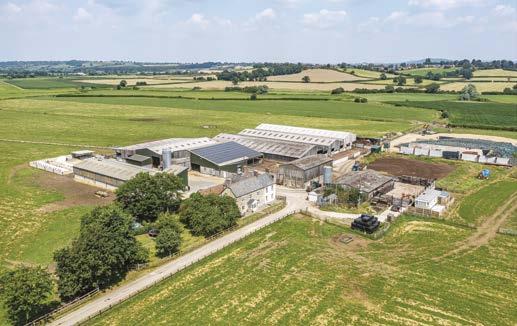
217 acre traditional dairy farm with farmhouse, barn conversion, holiday cottage, dairy buildings and grade 2 land. Sale completed 27 days after agreeing the sale.
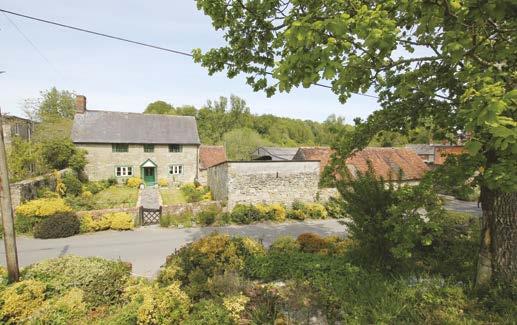
Poles Farm, Swallowcliffe, Salisbury
Grade II listed farmhouse for modernisation with range of farm buildings and 1 acre. 101 viewings conducted. Sold by auction for 160% of the guide price.
Modern farmhouse with AOC, farm building with Class Q consent for 2 dwellings and 52 acres. First launched in 2017. Marketed by several agents. Sold by auction in July 2021.
79 acre conservation farm with house for improvement, range of traditional and modern farm buildings and River Lymington frontage. Offered in 5 lots and sold as whole.
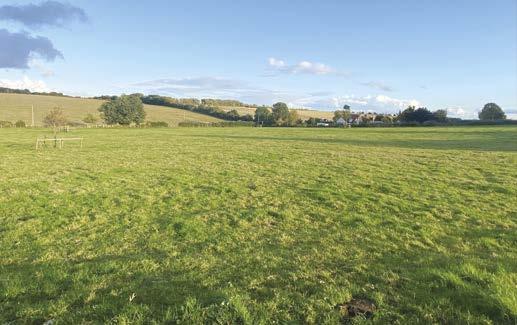
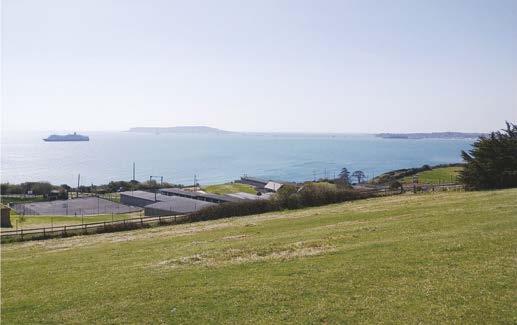
6.93 acres of south facing pastureland boasting outstanding views over Weymouth Bay towards Portland. Achieved £41,800 per acre.
22 acres pasture and woodland with consent for a 4 bedroom dwelling and a farm building. Still available with a guide price of £1,200,000.
A handsome 6 bedroom Grade II listed Georgian farmhouse, coach house, stables and 20 acres. Sale agreed well in excess of guide following competitive bidding.
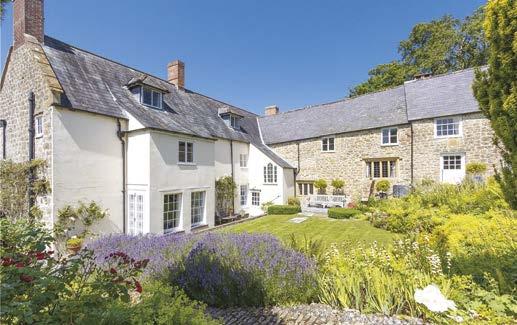
A steel frame farm building converted in 2016 into a high spec 4 bedroom farmhouse and annex, 124 acres of pasture and further farm buildings. Guide £2.45m. Sale Agreed.
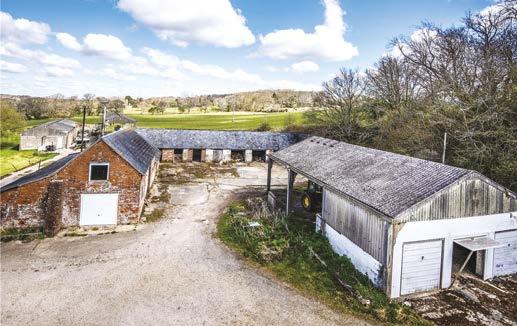

127 acres of freehold moorland on the Western edge of Dartmoor. An iconic Dartmoor landmark peaking at 1,200ft above sea level. Sold by auction.
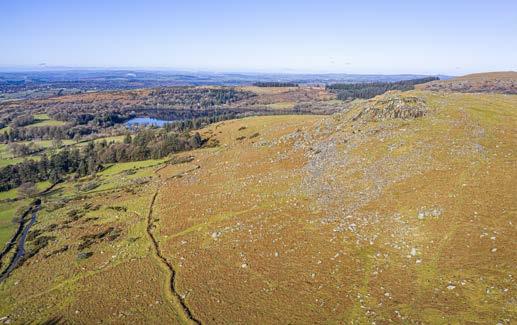
Whether it is composing a concerto or hitting the high notes in harmony with our clients.

Our advice has struck a chord for over 160 years.
Our grade eight service is pitch perfect. You could say it is on another scale.
Hear from our own Mark Lewis as he reflects on 20 years of auctioning property. Catch up with our online sales, discover the art of selling horse tack, and join us in welcoming TV’s favourite auctioneer back to the fold. There’s sculpture, vintage tractors, farm dispersals, and a visit to Frome Market. And a former Christie’s Chairman shares his career highlights.
Istarted my auctioneering career when I was 17 and, after a short stint in Cheshire, returned to Dorset and sold stock in every section of Sturminster Newton Market, as well as the Candlemas Fair in Dorchester, and every Friday in Yeovil.
I was often on the rostrum six days a week: Monday Sturminster; Tuesday at a farm dispersal sale; Wednesday collective machinery; Thursday house clearance; Friday Yeovil; and Saturday another farm dispersal sale or boats in Poole. If there was a charity auction on a Saturday night, I was invariably asked to auction promises at about 11pm. It could be a very long week!
The experience, however, was unparalleled – not only in the variety of lots and their value, but in the different types of bidders. The market buyers might be professionals who had seen it all before, the dispersal sales could be mainly farmers, while the house clearance crowd may be antique dealers. An auctioneer must learn to adapt to a different audience, and change speed and style accordingly.
After building up years of rostrum experience, auctioning property should have been straight forward, but it was completely different. The pressure, at times, has been all embracing.
There are several reasons for this heightened state. Both seller and buyer are dealing with a major asset, possibly their largest ever transaction. There could be a lot of emotion attached to the sale, either because the seller is under financial pressure, or it’s a family asset triggering many memories. Or the buyer may have ‘fallen in love’ with the property and try to pass their stress on to us.
If an auctioneer makes a mistake selling livestock – they fail to see a bid or misread the reserve, for example – the error can usually be put right on the next lot. When it’s a unique lot such as a house for renovation being auctioned for the first time in more than 100 years, it is impossible.
The buyer and seller may also be new to auctions and not understand how they work. We often talk to buyers who, apart from bidding for a pumpkin at the harvest supper, have never bought anything in such a pressurised way before. We help by showing them videos of previous sales to make it less daunting.
On the sale day, we try to relax people by making the auction more congenial. We still notice the nervous ones as their backs are invariably ramrod straight and they rarely smile at any attempted levity.
We must also give the buyers time to think and react. Many buyers attend with their top figure set in their mind, and a few bid just a few thousand above. It takes time for them to make decisions, whereas others just want to buy, regardless of the final figure, and bid quickly.
It’s a fine balance to make sure everyone has a fair chance to raise their hand. The auctioneer cannot, however, wait for ever! Many people ask me whether I get nervous before an auction, and of course I do. I remember an actor saying the day you don’t get nervous is the day you should retire because it shows you don’t care any more. It’s how you channel the nerves that matters . I find that, once I say the first few words of introduction, I’m in a transcendental state. It’s as though my late father, also an auctioneer, is right behind me.
When I reflect on the half a billion pounds that I have raised for Symonds & Sampson clients and look back through the books of results I remember the easy sales and the ones where I have been able to draw on all my years of experience to make sure the sale happens.

Few rival auctioneers in our region can do this but my task now is to train up a new auctioneer so that we have the very best on the rostrum in the future.
Mark FRICS FAAV FNAVAday you don’t get
is the day you should retire
On 23 March 2020 when the Prime Minister announced all non-essential travel must cease and we were to work from home, the auction department at Symonds & Sampson had to think very quickly. With a property auction due to take place in four days’ time, and 130 prospective buyers already expressing interest, we had to ensure the show could go on.
With help from Auction House UK, we were able to move our auctions online and offer an eBay-style platform. We were one of the first auctioneers in the UK to do this, and not only was it a momentous effort to set up, but we had to ensure all bidders understood the process and were comfortable placing bids.
Several late nights coupled with a considerable amount of stress allowed the sale to go ahead, and our lots all sold extremely well – one lot sold 62% above the guide price.
While we had chosen to embrace the challenge, we discovered that other auctioneers in our region had shut down entirely. With calls to these firms going unanswered, clients instructed us and our online auctions gathered momentum. Our sale on 8 April was even better, with 97 bids received on one lot in Lyme Regis which sold for 190% above guide. Demand was so strong we had to slot in an extra sale in August, normally a quiet month when people go abroad. In 2020, no one was going anywhere.
The online sales were doing well, but lacked personality. Buyers wanted to see the auctioneer, and some wanted the option to bid by telephone. So, from October 2020, we decided to try Essential Information Group’s ‘livestream’ auctions which are conducted in real time and are the closest we can get to a traditional in-room auction.

Our Senior Partner and auctioneer, Mark Lewis, is filmed and streamed live with bidders able to watch and place bids which are received and accepted by his assistant, Marlise Jolliffe. For those uncomfortable online, there are four or five members of staff taking instructions to bid via telephone. I execute the proxy bids while keeping an eye on the online
bidders’ connections, and dealing with any issues.
It was the most hectic time, but we haven’t looked back. People talk about a steep learning curve, and this was as steep as it could be. Broadcasting live worldwide with buyers tuned in from America, Australia and all over Europe brought its own stresses: Did we have a good internet connection? Was the microphone and camera set up correctly? Did the telephone bidders have strong enough signal to make calls? It created such a buzz, but left us quite exhausted!
Buyers and sellers have really enjoyed the experience and we’ve had many positive testimonials. However, despite our efforts to make it as clear as possible, some have been confused by what a purchase via auction entails.

Some have misunderstood that the fall of the hammer means a binding contract, and an exchange of contracts takes place. They have not understood that the 10% deposit is part of the purchase price, and we have even had a few buyers try to void the sale a few days later, not realising they have entered a legally binding contract.
The appearance of the ‘Modern Method of Auction’, which is used by some other agents, has really muddied the waters. When a bid is accepted, the buyer is required to pay a very high fee to the agent but is not bound to exchange and the sale appears to then follow the process of a private treaty sale. We sold a property for one client who tried the Modern Method of Auction and was completely confused.
This year, we are introducing hybrid auctions – allowing buyers to attend and bid in person, online, by telephone or by proxy. Catering for all needs, we can continue to endeavour to give the very best service to our clients and remain the leading firm of property auctioneers in the South West.
Meredith Holmes MNAEAWhen the UK’s first lockdown put a stop to in-person property auctions, many agents shut up shop. Not Symonds & Sampson! We were one of the first auctioneers in the UK to take our sales online, as Meredith Holmes reports
Demand was so strong we had to slot in an extra sale in August

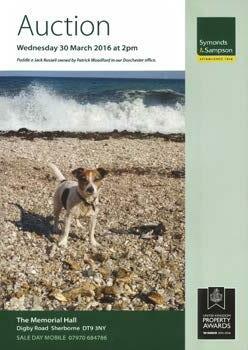



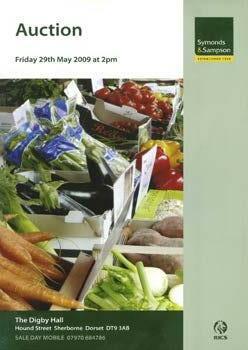


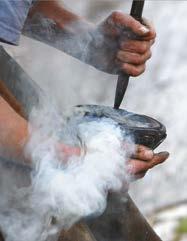
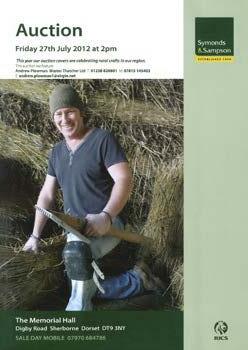
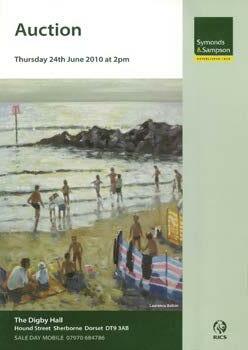

I
Symonds


Sampson
most helpful
very professional and more
enthusiastic. They took the fear of buying at auction online away by managing my proxy bid. I would definitely buy another house at auction with Mark Lewis and Meredith Holmes.

Excellent service. Everyone very helpful and Informed, and at the end of the day a fantastic result. Many many thanks to all involved.
WOW, what a result, we are very pleased and would like to thank you and the auctioneer for the work you put in. He was fantastic on the day and helped it to achieve what it did. Wonderful job.
Just a note to say how pleased we were with the result of the auction yesterday, and to thank you and all your team for all your efforts on our behalf.
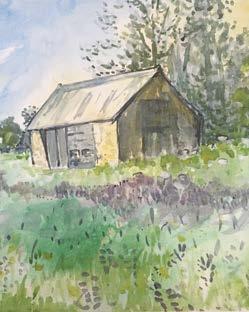
I thought the auctioneer handled the sale very well too. Calm and patient, giving people plenty of time to bid. It went very well.




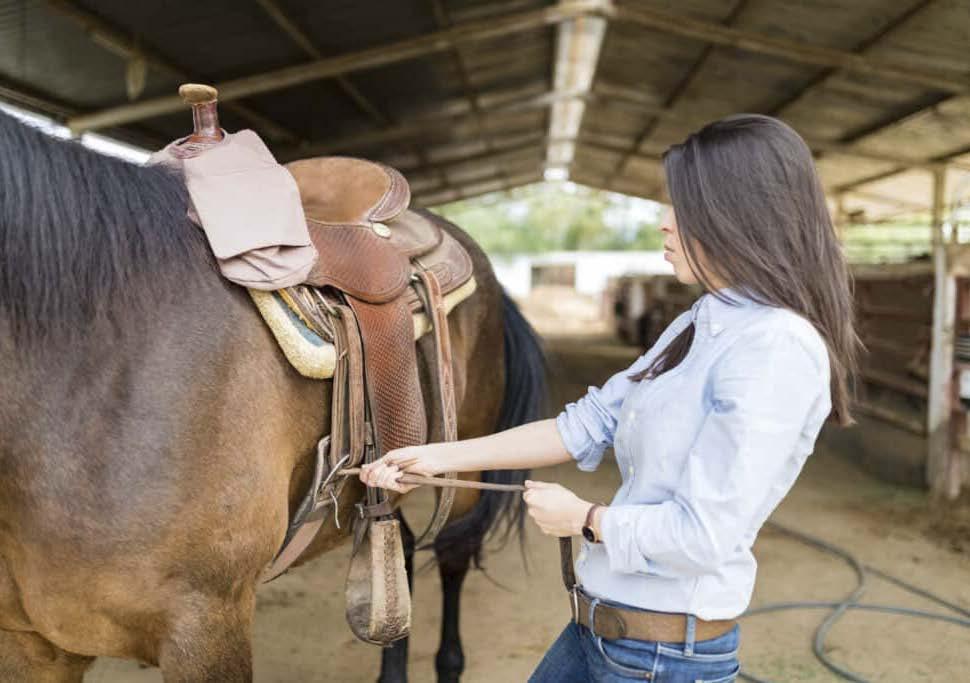
After I left Cirencester Agricultural College, I joined a firm of chartered surveyors on the outskirts of Manchester and, very keen to get as much auctioneering experience as possible, seized any opportunity to stand on the rostrum.
I’d been with the firm a few weeks when I was called into the Senior Partner’s office and told to scrub any plans I had for the following Saturday. I was being entrusted with the important sale of horse tack and ponies. It was apparently quite a plum job. So plum, in fact, that nobody else wanted to do it, and the last young auctioneer resigned after his first sale.
I knew little about horses and even less about tack but I was excited about the prospect of making my northern debut, and did not fully appreciate that I’d be booking in the lots, clerking for myself, and auctioneering.
The day dawned, and I arrived to see the tack being laid out on tables. A fierce woman was shouting at her staff while wielding a short whip. She introduced herself as Vera and told me to help unload the items from the truck, ready for her to decide the lot order.
Most of the items were brand new and some still had prices on them. I asked where she sourced everything. She gave me a shove and said: “Who are you, the police?” I decided not to ask any more questions.
When it was time for the auction, a crowd of about 50 arrived. The first lots were straightforward, but then I came to a saddle
and described it as such. There was a roar from Vera: “That’s not any old saddle; that’s a 16-inch English Springtree saddle!”
My next lot was another saddle and I asked the same price. There was another roar and some tutting from the crowd. “That’s nothing special; it’s just an old saddle!”
I then had what looked like a strip of leather. Vera soon put me right. “It’s a Martingale,” she bawled. The next lot looked the same, but I was corrected by Vera: “It’s a running Martingale.”
Each lot turned into a guessing game. The crowd started to join in. “It’s not any old bit, it’s a pelham bit/snaffle bit/rubber bit/loose ring,” they’d chorus.
I’m sure I saw the Senior Partner’s trilby near one of the doors, but it was a fleeting glimpse and he was soon gone. However, his words when he gave me the job came into my head: “Whatever happens, however bad the trade, just keep smiling and never get angry.” I decided that was the best option.
A few lots later I had a numnah to offer. I asked Vera how it was spelt. “The same way as Numpty,” she boomed. That was it; every person connected with the tack sale referred to me as Numpty from then on.
After two hours I came to my last lot and brought my gavel down with a flourish. To my amazement there was a round of applause. “Don’t get any ideas,” said Vera. “They’re just relieved it’s all over.”
I then had to auction five ponies, and climbed the few steps to the rostrum of a small amphitheatre usually employed
I knew little about horses and even less about tack
for the sale of cattle. There was a smattering of middle-aged people in the seats, and three miserable looking men leaning on the rails of the ring.
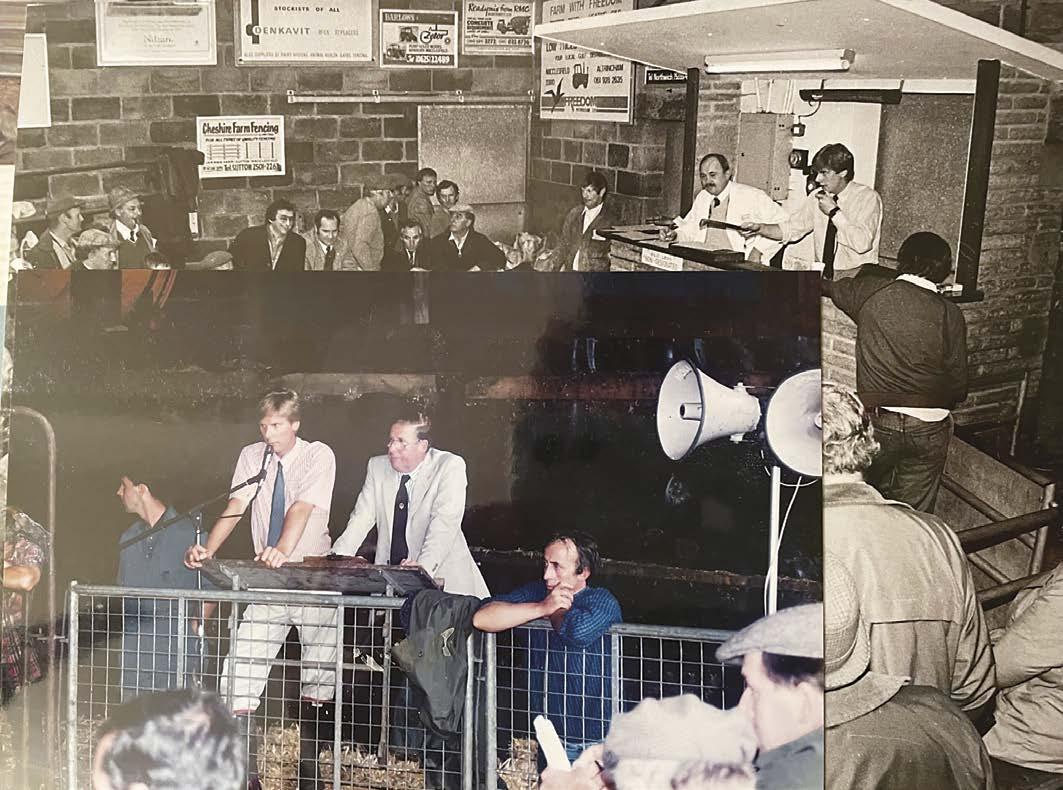
In came the first pony, clearly brushed and lovingly prepared, ridden by a girl in her late teens dressed up in full riding outfit. I beckoned her over to the rostrum. “What can you tell me about the horse, and how much do you want for her?”
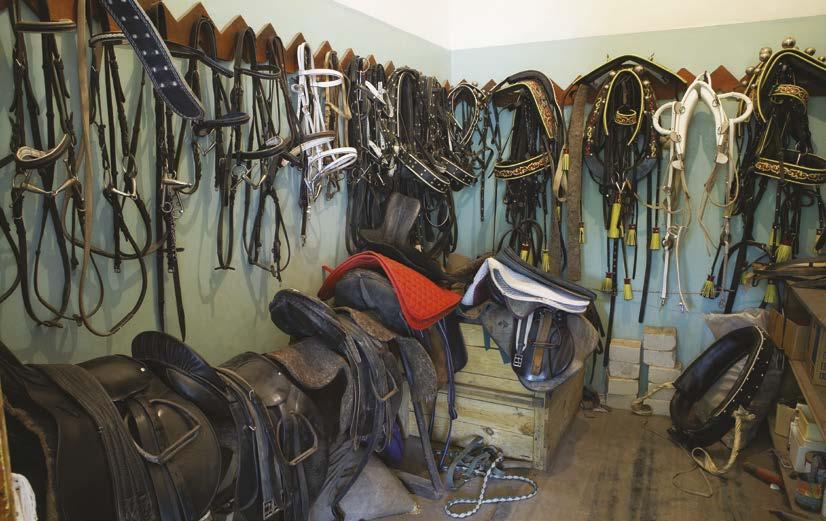
“She’s called Bunty, good to shoe, box and travel, and I’m only selling her because I’m off to university. I would like 500 guineas please,” came the reply. She then gripped my hand. “And you won’t let her go to a meat man will you?”
I relayed the details to the crowd and invited a bid of 500 guineas, but there were no bids and total disinterest from the small gathering. I gave the lot a bit more puff, and then one of the men leant through the rail and put one finger up. I called the 100-guinea bid and then took fictitious bids from the rest of the crowd, who grimaced at such a low price.
When I reached 300 guineas the rider came across and said: “If it’s not a meat man, let her go.” I explained that it was my bid and the only genuine bid I’d received was 100 guineas. Her face fell.
There was a gruff voice from the edge of the ring: “I’ll give you the 300 guineas but not a penny more. And any more of this messing about and I’m off.”
I looked at the girl. “What do you want to do?”
She leant forward and stroked her horse’s mane. “Is it a meat man?” I nodded.
“OK, let her go.” I brought the gavel down and she departed with tears falling down her face.
All four ponies followed the same pattern and it was a dismal experience. I stepped down from the rostrum and apologised to one of the riders, Kate, who was clearly upset. I rather artfully saw a chance. “I’m so sorry about the sale, but can I make it up to you by taking you out to supper?”
She was quick with her reply. “No thank you.” It wasn’t the first time I’d been rebuffed so hardly a bombshell but then she looked up. “It’s Daddy’s birthday, you see, and we’re having a do at home.” Then she added: “Why don’t you come, too?”
She gave me the address and I arrived at the smart farmhouse in the middle of a Cheshire village and was astonished to be met on the doorstep by my Senior Partner. He had a broad smile on his face and put his arm around my shoulders as he led me into the sitting room where the whole family had gathered.
“I hear you tamed the mighty Vera today, and she wants you to auction the tack every month. She says you’d better know what you’re selling next time. You can’t get away with ignorance and charm twice, so you’ll have to do some homework.” He then looked at his daughter: “But don’t go thinking you can learn it all from Kate!”
Everyone laughed, but I received the message. I think I stood more of a chance with Vera.
Mark FRICS FAAV FNAVAIn 2021 we raised a record amount of money for our clients, and sold property in six counties and London. Mark Lewis skips straight to the best bits
Sundown in Horton, Wimborne. 4.68 acres of land and woodland. 276 people registered for the legal packs, and the sale price was 255% above guide.
Australia for a derelict bungalow at Lambert’s Castle, Devon. Sale price 165% above guide.

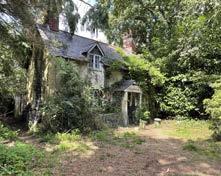

Deer Leap Farm, Gillingham, Dorset. A farmhouse, lodge and 52 acres sold prior to auction at a record price for an auction lot.
A shop and flat in St Ives, Cornwall, selling prior to auction in December.
Three houses in London, sold unseen. Amazing interest and prices 75% above guide.

Grasshopper Cottage on the Dorset/Hampshire border. We accompanied 183 sets of people and goodness knows how many viewed without us. Sold 56% above guide.
2 Remedy Gate near Wimborne needed complete renovation and sold 50% above guide.
1.43 acres of woodland copse at Farway, Colyton, Devon, sold 175% above guide.
Chenies in Sturminster Newton. I’d been at primary and secondary school with my clients and knew their parents very well. This was one I had to get right. It sold 50% above guide.
A let shop in Dorchester with two flats above, sold 55% above guide.
Poles Farm, Swallowcliffe, near Salisbury. Everyone fell in love with the farmhouse set in about an acre. 119 viewings and a sale price 60% above guide.
July, when we had 401 registered bidders.
Lowest price £25,000 for a small parcel of land on the Dorset/Wiltshire border.

A bungalow near Blandford. It was complete, but no building regulations had been signed off and no services connected, although there was some loose electrical cabling! Sold 56% above guide.
Trafalgar House at Portesham near Weymouth. Built in about 1806, it had connections to Vice-Admiral ‘kiss me’ Hardy. Sold 13% above guide.
A site near Ringwood, Hampshire. Set in 18 acres, we triumphed where a local agent had failed. Sale price £900,000, 13% above guide.
Sheeps Tor, Dartmoor, was an iconic landmark including the Yellowmead stone circle
Entries welcomed for 2022. Please contact Mark Lewis on 01258 473766 or Meredith Holmes on 01202 843190.
In his trademark stripy blazer, Graham Barton is instantly recognisable from his appearances on Homes Under the Hammer. Now, TV’s favourite auctioneer has returned to the Axminster office he first joined more than 40 years ago

This is my second ‘sitting’ at Symonds & Sampson’s offices in Axminster, the first appearance being on 19 September 1979 when I started as a general gopher for R&C Snell (now incorporated into S&S). At the time, as well as being estate agents, valuers, surveyors and auctioneers, R&C Snell ran the town’s Thursday livestock market. My initial ‘blooding’ into the world of auctioneering was via the pannier market where the farmers’ wives brought the produce (eggs, vegetables, fruit etc) to be sold while their husbands bought and sold cattle, calves and sheep in the livestock market.
After a while I was invited to sell at the market ‘proper’. On my way to the rostrum, I met one of the regular, and somewhat notorious, calf dealers. I introduced myself and he told me the last auctioneer had left under a bit of a cloud.
“It wasn’t anything mischievous on his part,” the dealer explained. “It was an actual cloud. He was getting on our nerves, so last week we put a bale of straw under the rostrum and set fire to it. He jumped down and swore never to set foot in the building again. That’s why you’re here.”
It was in 1996 that I left R&C Snell to see what the wider world had to offer. I worked for a corporate property auction business and, soon after I arrived, the producers of Homes Under the Hammer approached us.
They were scoping out a new programme format and wanted to film a pilot episode. We had no idea it would go on
to attract average viewing figures of 1.5 million and would be shown all over the world.
Homes Under the Hammer is filmed in locations nationwide, and the West Country features regularly. After the first few auctions, the director said my style was rather different from the other auctioneers she’d been filming – probably due to my agricultural apprenticeship where I’d often sell 200 lots per hour as opposed to 30-40 property and land lots every sixty minutes or so.
As a result she decided that as well as being audibly distinctive, I should also look a bit unusual. A stripy blazer was suggested, and it became my uniform. I haven’t conducted an auction of any kind – work or charity – without one since.
While I’ve warmed to them over time and amassed six or seven, it was during lockdown in 2020 that I decided to slim down my blazer wardrobe. I’ve retained three of the marginally more palatable colour schemes for the remainder of my career.
However, I wouldn’t want you to think a stripy blazer is my off-duty choice. It’s a little too garish for my taste, to the extent that if my wife buries me in one, I’ll come back and haunt her. Marian, you’ve been warned!

I wouldn’t want you to think a stripy blazer is my off-duty choice
Graham Barton MRICS Auctioneer and Surveyor
Lord Hindlip has brought down the gavel on some record-breaking auction lots. From Marilyn Monroe’s ‘Happy Birthday’ dress, to Van Gogh’s Sunflowers, the former Chairman of Christie’s shares his career highlights
Iworked in Christie’s for just over 42 years, starting in 1962 in King Street at the reception desk, as all aspiring auctioneers did then. “What are the boys paid now?” asked the auction house’s then Chairman, Ivan Oswald Chance, when he agreed to take me on. “£6 a week,” came the reply. That was a step or two away from the defining moment of my career when I sold Van Gogh’s Sunflowers on 31 March 1987.
I took my first sale as a very junior member of the picture department with little notice. I climbed on to the rostrum, looked at the auctioneer’s book and, with knocking knees, summoned the courage to say, “Lot 1.” All unnecessary chat, like “Good morning, gentleman” or “Here we have a fine drawing by the studio of Thomas Gainsborough” was strongly discouraged. I pressed on and by lot 165 I had survived, only making one unforced error – I’d missed a commission bid left by my colleague, Brian Sewell. He was already cross I’d been asked to take ‘his’ sale, but as with most things in his remarkable life, he took it well and recovered.
of this, The Waterloo Cup Coursing Meeting, made £89,250, and from there I started to conduct increasingly important sales –including the Van Gogh.
A bidder wanted to know what increments I would take over £20m
The final version of Van Gogh’s series of paintings of sunflowers had been consigned to us by the family of mining magnate Chester Beatty. Why had the family chosen Christie’s? Because of the careful work various colleagues had carried out for the family. And because there was, I think, an element of guilt dating back to 1975.
In that year, they had consigned an even more important work by Van Gogh, Patience Escalier, and withdrawn it shortly before the sale, after receiving a substantial private offer – a shattering blow at the time. We made sure Sunflowers received full publicity; it toured the world and attracted huge interest in Japan, at that time a major player in the art market.
It was a very long time before I sold a lot for more than 1,000 guineas (a still-life by Edward Ladell), but the first really expensive picture I sold was from the estate of the Earl of Sefton. His family owned Aintree racecourse, and the adjacent land was home to the Waterloo Cup, the Grand National of hare coursing. Richard Ansdell’s great depiction
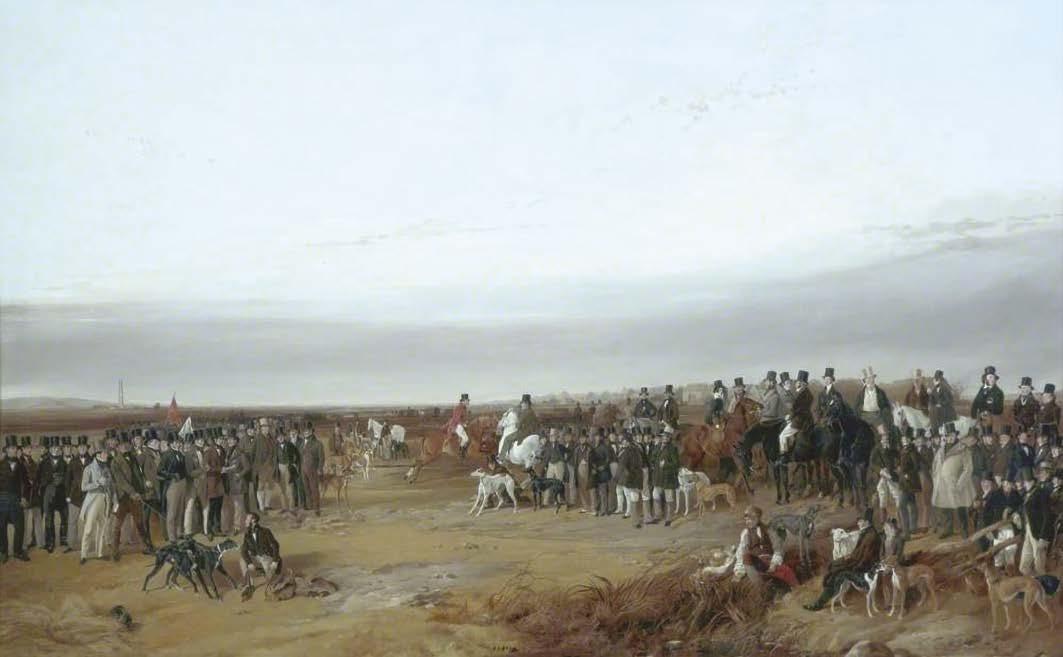
Before I rose to the rostrum for Sunflowers, I had been buoyed by news there was a bidder who wanted to know what increments I would take over £20m. It eventually sold for £24.75m – two and a half times the previous record for any work of art – to the Yasuda Fire and Marine Insurance Company of Tokyo.
The price defined the art market for the latter part of the 1980s, but the record set by Sunflowers seemed not to be held long. Sotheby’s offered Van Gogh’s Irises in November,
and appeared to sell it for $50m, but were never paid for the picture – fortunately a very rare occurrence but one they possibly should have anticipated having knowledge of the Australian purchaser.


The following autumn, I was to take the sale of Picasso’s breathtakingly beautiful Acrobate et Jeune Arlequin. Before the sale, the same Australian collector said he would bid if he could have extended terms. I told him he could have 30 days for 10 per cent in advance, the remainder to be paid at the end of the 30 days, and that we would keep the picture until it was paid for in full. Unsurprisingly, he did not accept my offer and the picture was bought by a Japanese collector for, in retrospect, a seemingly modest £20.9m.

I confess in this instance I preferred Picasso’s picture to that of Van Gogh’s Sunflowers, and in that respect I wasn’t alone. It was some years later that the great collector Stavros Niarchos was offered Picasso’s Acrobat et jeune Arlequin, as a result of the collapse of the Japanese market. He asked me whether he should buy it, ‘Yes’ I replied, and he did. It joined his beautiful collection, the best that I have ever had the privilege to work on and hung beside Van Gogh’s Patience Escalier
I think, in retrospect, the Picasso is the thing I would have most liked to own myself; more than any other picture, more than any of the remarkable silver, furniture and porcelain that I have sold, more than Princess Diana’s dresses, more even than Marilyn Monroe’s diaphanous masterpiece, which she wore to sing ‘Happy Birthday Mr President’.
I had a wonderful time at Christie’s. To say I loved every moment of it would not be true, but I loved most of it, and will always wish my colleagues at King Street well. Although I don’t think they have as much fun as I had.
‘An Auctioneer’s Lot: Triumphs and Disasters at Christie’s’ is available to purchase. Please call Mark Lewis at Symonds & Sampson, 01258 474266
Iwas reading an article in The Dorset Yearbook – always worth a flick through – and I was delighted to see a piece about Elisabeth Frink. Although I never met her, I went into her studio soon after she died in 1993 and truly felt her redolent presence. Her son, Lin Jammet, told me she had lain in state in that room, surrounded by tealights.
Many of her incredible sculptures were on the lawns and within the grounds. There were a number of figures of Running Man and Goggled Heads, and although we were in Woolland, often called the middle of nowhere, they seemed to belong in that rural setting in Dorset’s Blackmore Vale.
Brian Moore, a local writer, says Frink’s “whole life was dedicated to creative artistic excellence coupled with a deep and abiding love for the fearful and less fortunate of mankind”.

Mark Lewis shares his memories of a visit to the Dorset studio of artist Elisabeth Frink, the it-girl of post-war British sculpture whose work is featured everywhere from Chatsworth House in Derbyshire, to JFK’s memorial in Dallas

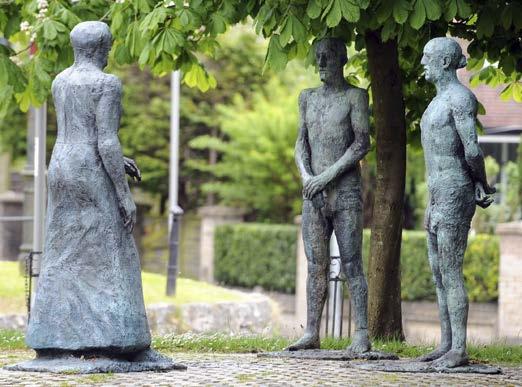
I find it inspiring that living among us in Dorset was such an amazing woman whose pieces now often sell for more than £1m.
The working world of Elisabeth Frink was celebrated recently by the art gallery Messums Wiltshire for their exhibition A Place Apart. Frink’s studio, which Messums rescued from collapse in 2019, has been reconstructed to display a collection of original plasters alongside tools and objects salvaged from Woolland, providing a never-seen-before insight into one of Britain’s foremost sculptors.
Living among us in
was
The sculptures are often representations of oppression of the weak and innocent, and the unfairness that being born in, or living in, the wrong part of the world, can lead to slaughter and torment from evil dictators.
But there was so much more to her work. Her obituary in The Times noted the three essential themes in her work as “the nature of man; the ‘horseness’of horses; and the divine in human form”and her work has been sold, or commissioned, all over the world – often for very different clients.
There is, for example, a set of three figures for a corporate headquarters, one of which was a nearly 7-foot-tall male nude. Another, a grouping entitled Dorset Martyrs for Dorchester, was unveiled in 1986 on the site of the gallows where Catholic martyrs were hanged in the 16th and 17th centuries.
I am not an expert on how sculptures are formed but I understand Frink had a distinctive style of cut and worked surface which can be seen in her many works.
pieces sell
The gallery says: “The exhibition explores axioms of tension, threat, intensity and mankind’s atavistic tendencies within Frink’s figurative representational sculpture. It presages how her work continues to be resonant of her time as well as function as a carapace to our contemporary concerns.”
This exhibition allows for a contemporary reflection on the duality of masculinity and the contrasts and conflicts that it entails, while also revealing the timelessness of Frink’s expressionist figurative oeuvre. It highlights her almost unique insight – as a female sculptor – into the dichotomy of masculinity and of man’s capability for cruelty as well as compassion.
If it is still on when you read this article, it’s well worth a visit. Messumswiltshire.com
Mark FRICS FAAV FNAVAamazing
They attract the crowds at agricultural shows, and hold a special place in the heart of many countryfolk. Paul Heard in Tiverton explores the appeal of old-style farm machinery

Modern tractors are faster, handle better, are more reliable, more comfortable, cleaner, safer, and more economical. So why are vintage tractors so popular, and prices not only being maintained but often increasing?

We need to look at the buyers – the collectors and enthusiasts, and also the weekend/ lifestyle people who want something to potter around on. It doesn’t seem to matter whether they are topping a paddock or pulling a trailer, there’s a thrill in being in tune with the past and appreciating the character of the machine.
Many people look back fondly on a time when designs were unfettered by modern methods which have removed much of the character from new tractors. Mass production, complete with robots on the assembly line, lacks the romance of the vintage era.
Back in the day, tractor production was mainly a manual process performed by craftspeople using simple tools matched by decades of experience to create parts by hand and eye. The resulting designs have withstood the hardships of daily usage and weathered the passage of time.
Nostalgia also plays a large part in the appeal of vintage tractors. They all have a history – Father or Grandfather may
have driven one, and there could be memories of ploughing certain fields or bringing in the hay and crops. They offer a chance to reminisce and connect with the past.
There is also the rarity factor – they don’t make them any more, so sourcing parts and keeping the past alive has great appeal to many buyers. You can also join a club for your machine and swap stories, or challenges, with other enthusiasts. And best of all, work may be needed to restore the vehicle. What better way to spend your time? What pride when, in due
course, you can show off the tractor at a rally!
A couple of highlights from our tractor sales in 2021 include a Massey Ferguson 35X Multi-power and Massey Ferguson 290. They’d been left in a shed for 20 years and made (which we believe could be a record) £9,300 and £10,100 respectively. Both completely original and needing a lot of love!
It seems you’ll never be short of conversation, or something to do, when you own a vintage tractor.

There’s a thrill in being in tune with the past
With the onslaught of Covid and its social distancing requirements, people increasingly turned to technology to stay connected. From VPN links for secure remote working, to FaceTiming the farm assurance assessor, or holding a family quiz night via Zoom, we’ve all adapted our daily lives by logging on.
The Farm Sales team was no different. The 2021 January lockdown brought with it a ban on live on-site auctions, so we had to rethink our strategy for the benefit of our loyal customers. And with a long list of auctions to conduct during the calendar year, there was no time to waste.
We held our first livestream collective fodder sale that same month, selling farm produce into six counties. This continued throughout February with livestream machinery dispersals. The amalgamation with Heards RPS and the opening of our new Tiverton office brought a further dimension to our business with the addition of Online Timed Auctions used for monthly collective and genuine dispersal sales.
The summer months took us back to the sales field once again. However, with some bidders still nervous about large gatherings, and others busy with seasonal farming activities and unable to attend in person, live online bidding was added to the mix. We’ve heard of bids being placed while ploughing, milking, and even on sun loungers in foreign countries!
technology has certainly changed how a traditional auction runs, with individual online bids as high as £76,000!

Autumn 2021 saw Frome Livestock Market go online with the introduction of MartEye – technology that allows auctions to be conducted remotely in real-time. High-definition cameras are placed strategically around the ring so famers and livestock dealers can bid for animals away from the market. This is proving to be more popular week on week, with the annual production sale of Fleckvieh cattle seeing 56% sold online.
Symonds & Sampson is now one of the most diverse auctioneers in the country offering multiple auction types across the south of England. If you are considering an auction in 2022 please call a member of the Farm Sales team.

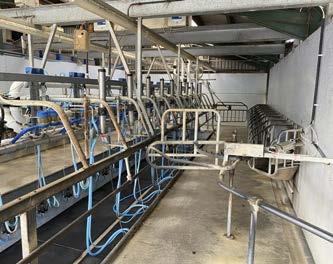
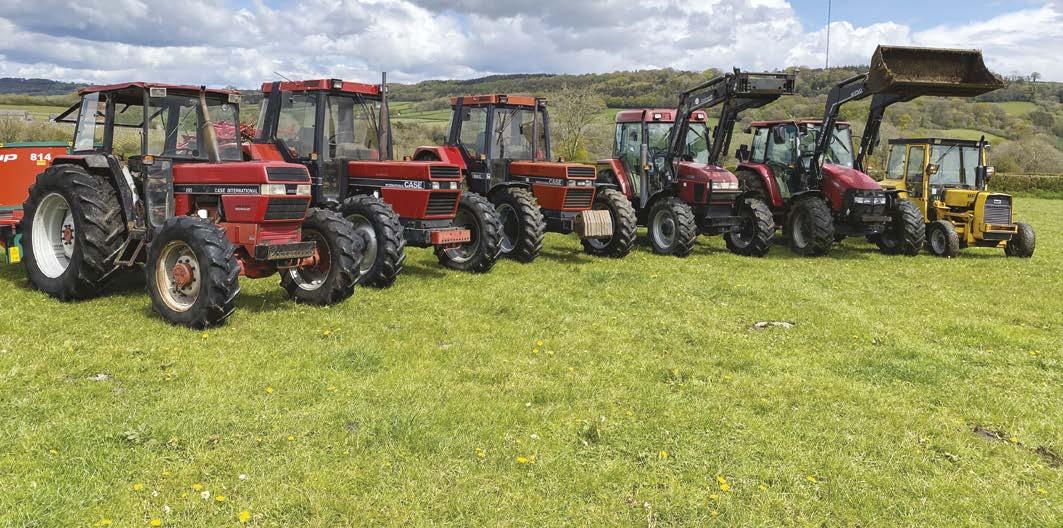
Farm Sales team has responded to the challenges of the pandemic
heard of bids being placed while ploughing, milking, and
loungers
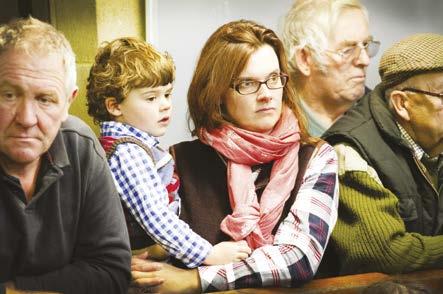
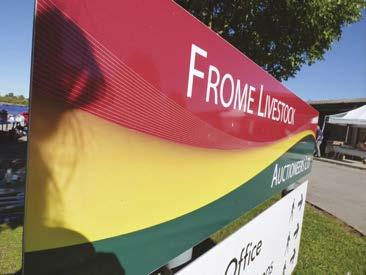
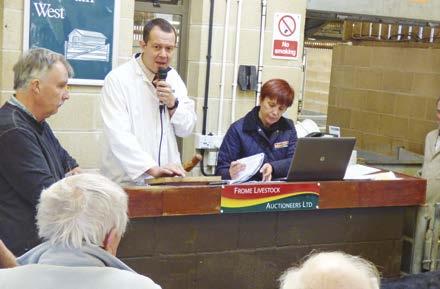
TB Orange Market
Cull, Fat and Stores Calves
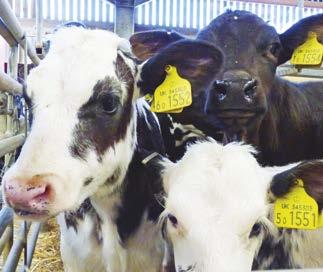
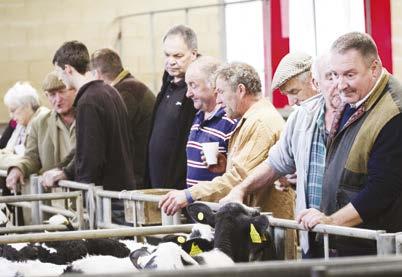
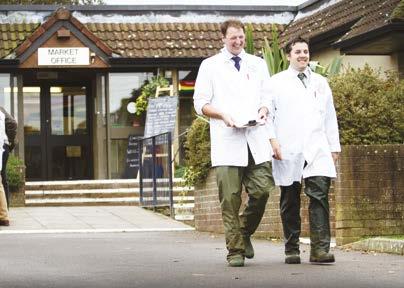
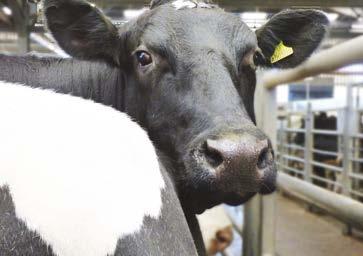


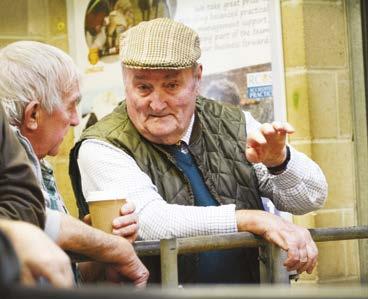


Wednesday
Calves
(Monthly)
pm (Monthly)
am
Pigs 10:15 am (Fortnightly)
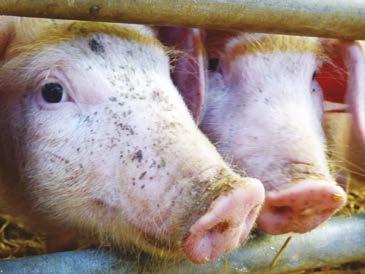
Sheep 10:30 am Dairy Cattle 11:00 am
Weaned Calves 12:30 pm (Fortnightly)
Prime Cattle/Cull Cows 12:30 pm
Breeding Sheep (Monthly)
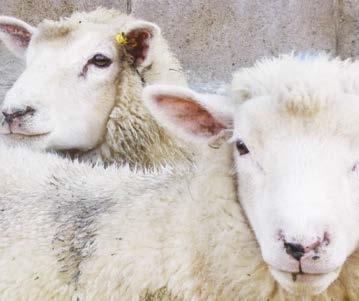
Friday Store Cattle
am
Whether it is establishing a kitchen garden or creating a herbaceous border we have always encouraged our staff to grow, flourish and mature. It could be said that we have been sowing seeds for generations. But when the spade work is done it is time to down tools and enjoy the fruits of our labour.

We celebrate some outstanding fundraising efforts, discover the increasing popularity of paddleboarding, and dive into allweather sea swimming. S&S staff pick their most memorable movie lines, and mark 100 years of the BBC by revealing their favourite shows –will you agree?
Jack Denning-James and George Whittaker
recall their three-day cycling marathon to all 16 Symonds & Sampson offices
During the last week of August 2021, Jack Denning-James and George Whittaker, Rural Surveyors with Symonds & Sampson, completed an epic cycle ride across five counties, raising funds for charities.
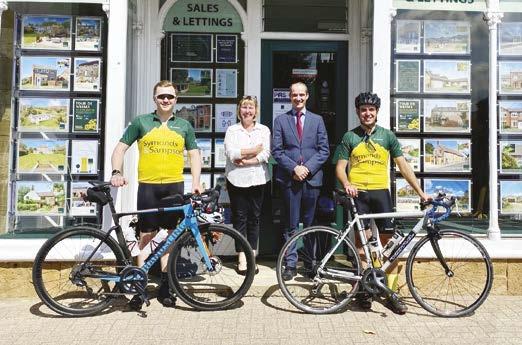

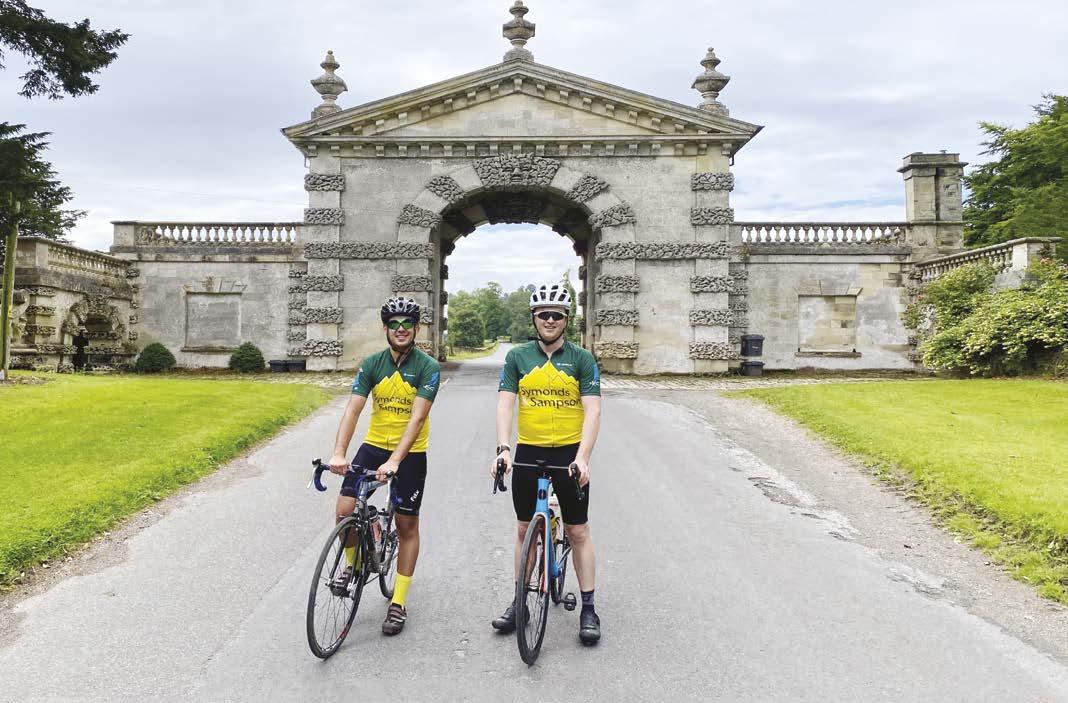
The duo, who met while studying at Harper Adams University, came up with the idea as a way to celebrate ‘liberation’ from lockdown and raise funds to support the tremendous work carried out by Mind and Movember. They also chose to support Prostate Cancer UK for the invaluable care they give to men across the country, a cause particularly close to the hearts of George and his family.
Incredibly – with just one puncture and one accidental offroad detour – Jack and George stayed on schedule, enjoying a warm welcome (and sustenance) from colleagues at each office. Their total trip took just over 16 hours, and covered more than 200 miles. Here, Jack summarises the adventure.
Their trip covered more than 200 miles
Miles covered: 74 Metres climbed: 1,700
A short, sharp climb into the Blackdown Hills soon warmed us up after a chilly 7.30am start in Tiverton, en route to Ilminster. Then to Axminster, and a sun-drenched trip through Beaminster, Bridport and towards Dorchester, 62 miles down and into hot, uncharted territory. A whistlestop tour of the Dorchester and Poundbury offices, and we arrived at Burraton House on schedule if a little sunburnt at 3.50pm.
Miles covered: 61 Metres climbed: 1,000 We left Dorchester at 8am sharp for the longest stage of the day – 25 miles including a 400m climb to Yeovil (we couldn’t resist a brief chuckle as we cycled past the Cerne Giant). After a quick coffee in Yeovil, we had an eventful ride to Sherborne (the less said about the off-road incident the better!), and on to the Sturminster Newton office, before enjoying a sunny and relatively flat route through Blandford and on to our finishing point in Wimborne. We arrived at 3.30pm, after a record 10 hours and 45 minutes in the saddle. We were surprised by how easily we’d covered 61 miles, although slightly concerned it might catch up with us the next day.
Miles covered: 73 Metres climbed: 1,100
Another chilly start in Wimborne, as we set out into strong headwind which continued throughout the long run up to Salisbury, interrupted by our only puncture of the trip – swiftly repaired in a convenient gateway. From Salisbury, we headed to our penultimate stop for a long but enjoyable 28-mile ride through the pretty Wylye Valley to the Frome office, leading to our final destination at Devizes – relieved to step off the bikes for the final time as colleagues greeted us with a very welcome cold beer!
George, Jack and Symonds & Sampson would like to thank all those who donated so generously to the cause. A total of £4,828.36 was donated to the three chosen charities to support their valuable work. Thank you.
• Greatest achievement: Staying (mostly) on the correct route all the way.
• Highest temperature: About 26C in Bridport towards the end of Day 1 – Jack had the sunburn and tan lines to prove it.
• Best welcome: Our Bridport, Ilminster and Sturminster Newton offices were all a close tie for cake selection, but Bridport takes the win as they brought a table, complete with tablecloth, out in to the high street to serve us cake!
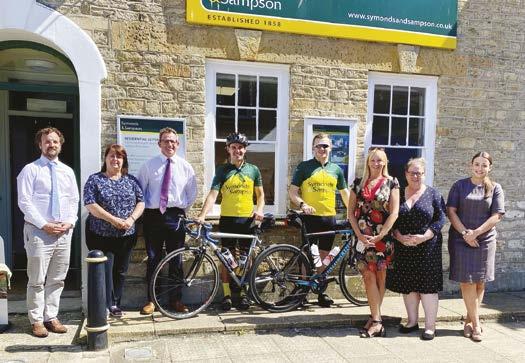
• The lows: Leaving Wimborne at 7am it was only 8C, we were riding into a headwind, and got the only puncture of the whole trip. Coffee at Salisbury was very welcome!
• The highs: Our first slice of cake at the Ilminster office on Day 1, and arriving at Devizes at the end of Day 3 knowing we didn’t have to cycle again
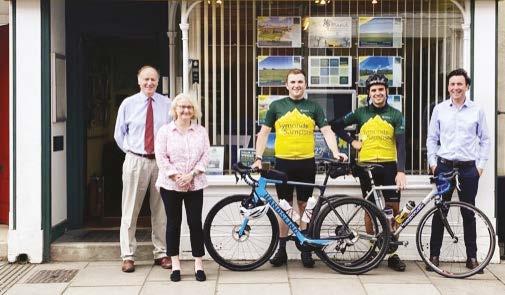
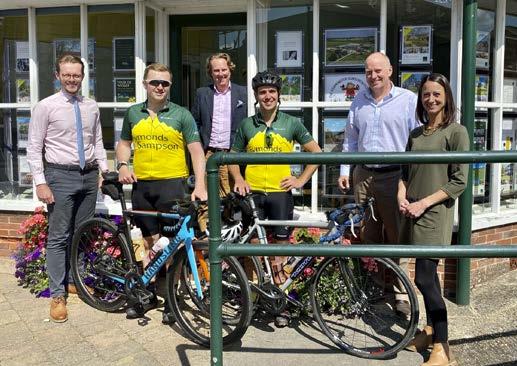
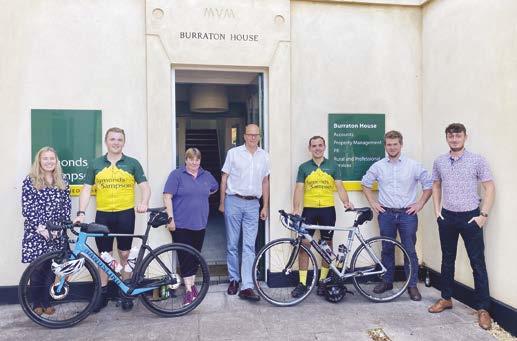
Dorset Mind, Somerset Mind, Devon Mind and Wiltshire Mind were Symonds & Sampson’s chosen charities in 2020 and 2021. At the start of 2020, great plans were made for each office to hold events throughout the year, such as pulling planes, rowing dragon boats, wing walking, bake sales, walking to work, and even hosting a Mad Hatters’ tea party!
2020 started well, with hugely successful coffee mornings in our Poundbury and Yeovil offices drawing a crowd and – thanks to very generous raffle prize donations – starting the fundraising with a bang. But then came the virus, and fundraising opportunities were curtailed.
As a firm we recognise that, during these challenging times, the vital work carried out by these local charities to improve mental health within our community is more important than ever. That’s why we’ve decided to extend our support for our local branches of Mind into 2022.
Mind provides help directly to those who need it most. With a strong network that offers specialised support based on the needs of the local communities, Mind believes everyone with a mental health problem should be able to access excellent care and services.
As restrictions were lifted, we had the opportunity to take part in some of the brilliant events planned, doing our bit to support the all-important journey to good mental health.
Becky Stimpson put her wonderful teaching talents to great use by hosting a charity yoga class in Blandford.
Lucy Nolan, Levi Musselwhite, Jessica Weymouth, Sally Reid, Emma Newman and Anabel Merriman took part in the 100 miles in May challenge – walking, running, cycling or rowing 100 miles each.

George Whittaker and Jack DenningJames challenged themselves to cycle more than 200 miles in three days, visiting all 16 Symonds & Sampson offices by bike!
Andrew Monro, Will Wallis, Morgan Clement and I, along with staff from Blanchards Bailey solicitors and other friends, took part in the Great Plane Pull at Bournemouth airport. With the team’s effort, we managed to pull a Boeing 737, weighing more than 35,000kg, over a 50m stretch in just over 41 seconds.
All of the above contributed towards raising vital funds for Mind and we hope to be able to do more great fundraising events in the coming months.
Not the easiest task, but Symonds & Sampson has risen to the challenge. Peter Grout-Smith reports
We’ve
Training and support for farmers wanting to develop


Country Man’s Club for men with conditions such as Dementia and Parkinson’s. Along with alternative provision
mainstream
farm
Dorset & Somerset. Future Roots
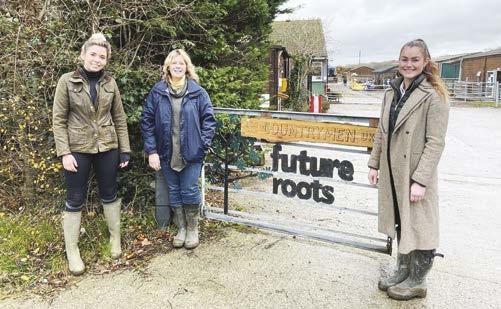
delighted that we will extend
support
based
Sherborne.
life skills for all.
will also be raising money for the local charity
local branches of Mind into
hope that we’ll have the
well-being.
take part
bit
mental
Mind provide help and support directly to those who need it most. With a strong network that offers specialised support and care based on the needs of the communities they support, Mind believe everyone with a mental health problem should be able to access excellent care and

Stand-up paddleboarding, or SUP, is the fastestgrowing sport in the world. Its popularity has surged in the last couple of years, with manufacturers reporting record sales of boards during the pandemic.


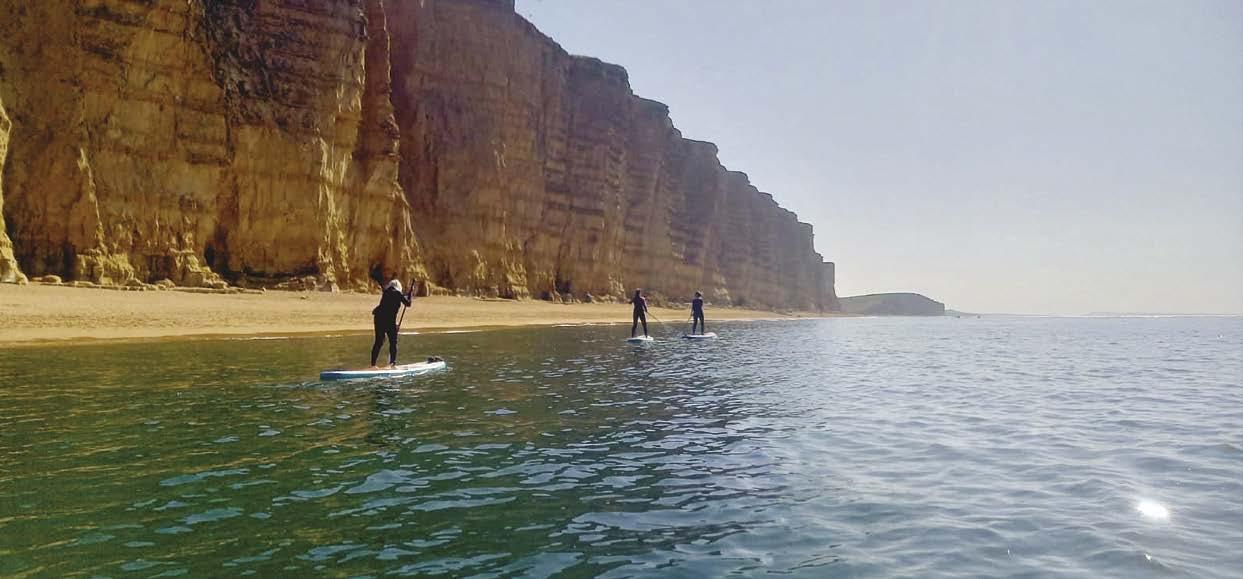
As a family-friendly activity suitable for most ages, it’s a great way to spend a fun filled afternoon. Many even take their dog on their boards with them.
We have 18 members of staff with their own boards regularly gliding along the waters, and plenty more taking advantage of the many local clubs offering taster sessions and lessons.
Across the Symonds & Sampson region there are plenty of opportunities to put boards in the water, whether it’s a sedate paddle along the River Parrett in Somerset, the River Brit or River Frome in Dorset, a potter on Litton Lake at Dorchester, or a challenging coastal paddle in the open seas from any of the beaches along the full 95 miles of the Jurassic coastline stretching from Exmouth to Old Harry Rocks, there is somewhere easily accessible to all.
The most popular boards are inflatables as opposed to hard boards; they don’t require roof racks or trailers, and can be thrown into the boot of the car and inflated at launch point.
During the summer months when the weather is good, swimwear or shorts are the most popular choice of clothing, moving towards wetsuits when the temperatures drop.
Paddleboarding is a great way to make new friends and improve your fitness, plus you’ll be able to explore stunningly beautiful areas that would be otherwise inaccessible. The sights you’ll experience while paddling are simply breathtaking. If you want to find out more, pop in for a chat with Trudi in our Yeovil Lettings office or Sam in our Bridport Lettings office.


Before 2021, if anyone had suggested I join them for a swim in the sea, even in the height of summer, I would have said: “You have got to be joking!” Swimming in the sea has never been a favourite pastime of mine; I don’t enjoy the salt water, having my head submerged, or getting out of my depth. However, a friend said she had recently joined The Bluetits group of wild swimmers in Weymouth and so, persuaded by her and another friend, off I went on 29 September 2021.
I can’t say I was relishing the thought but, having experienced the exhilaration when you emerge and the thrill of the achievement of getting myself into the freezing water each week, I have continued. The exercise is good, too, as it is quite exhausting and sometimes hard work to get back to shore with the pull of the waves, depending on the tide; not that I go out too far.
For my first swim, I had good guidance from more experienced swimmers, and was told to go up to my waist and wait a few minutes to acclimatise before submerging my top half. As you push yourself in to totally submerge, you exhale hard to prevent a sharp intake of breath as your body reacts to the shock of the cold water.
In those autumn months, we stayed in for around 30 minutes as the sea was at its warmest but now our sessions have become shorter and will continue to decrease to a quick dip in the height of winter, if we’re still braving the icy cold waters then.
You’ll be familiar with the well-worn phrase: “It’s all right once you’re in” but clad in only a swimsuit (and as the months progress and the water cools, a long-sleeved rash jacket), entering the freezing water in Weymouth is a bit of a shock. After a few minutes the body does acclimatise, and then it’s a case of swimming and having fun. With a group of about 30 to 40 ladies most weeks, there is a lot of camaraderie and encouragement from other swimmers.
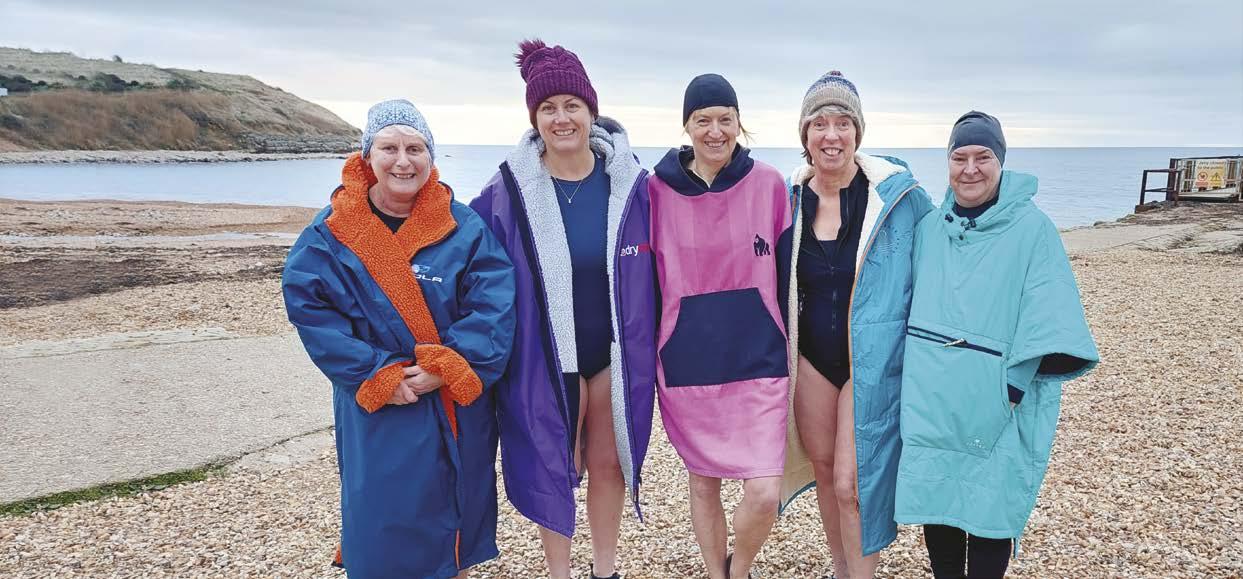
You need to be aware of your body and make sure you don’t stay in too long as hypothermia can set in really quickly. The body also continues to cool for around 20 minutes after you get
out so you need to dry and dress quickly in lots of warm layers, and have a hot drink and something to eat. This gets the body working to warm itself up from the core.
A few pieces of kit become necessary if you continue to swim as we have: a large towelling changing robe is easier than struggling with towels and trying to maintain your dignity, and on the pebbles of Bowleaze a pair of surf shoes or sandals is useful. A lot of swimmers invest in a dryrobe – large coats with a waterproof outer and fleece lining which also provide room beneath to get changed.
As time went by, I was determined to enter the water on 1 December, and I did! Hopefully I will be brave enough to persevere through the winter months as the water temperature drops to its lowest, even if not every week depending on the weather.

Sea swimming all year round is not new, and is enjoyed all over the world. In fact, The Bluetits is a worldwide organisation with more than 30,000 members. There is no membership fee and it’s free to meet at a site and swim. If you want to give it a go, check out their site at https://thebluetits.co










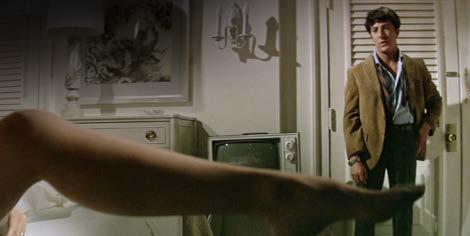
We asked the Symonds & Sampson staff for their favourite film quote. Can you name the films? Answers at the foot of the page.

“If you let my daughter go now, that’ll be the end of it. I will not look for you, I will not pursue you. But if you don’t, I will look for you, I will find you, and I will kill you.”
q w r
“He did NOT get out of the cockadoodie carrrr!!!!”
t y
“You know how to whistle, don’t you, Steve? You just put your lips together and blow.”
“Keep your friends close, but your enemies closer.”
“You don’t understand! I could’ve had class. I could’ve been a contender. I could’ve been somebody, instead of a bum, which is what I am.”
“Mrs. Robinson, you’re trying to seduce me, aren’t you?”
u i o a
“I want the truth” “You can’t handle the truth!” e
“Son, your ego is writing cheques your body can’t cash.”
“Sell crazy somewhere else. We’re all stocked-up here.”
“You’re gonna need a bigger boat.”











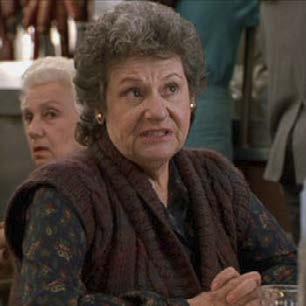




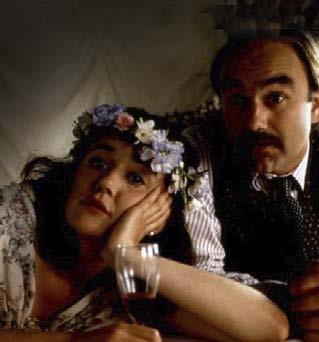
The eye catching cover of Country Matters 2020 featured a running hare and we received so many positive comments about it we thought you might like to know a bit more about the artist.

James Lynch is a painter of the English landscape. He works in the Renaissance medium of egg tempera, which he makes from raw ground pigments and egg yolks from his own hens, building up the surface over time with many thin glazes of paint. He paints on wood panels coated with gesso and there is often a pan in his studio bubbling with hot gesso – an ancient plaster mix of whiting and rabbit skin glue. It is the white plaster ground which gives a luminous glow to the brilliant colours of the egg tempera paint. James’ landscapes and skies are infused with light, dramatic weather, towering skies and crepuscular rays. Often there is an aeriel perspective, inspired by his passion for wild flying with his paraglider. He has a deep affection for Wessex. He grew up in Wiltshire and has lived in Somerset for forty years. “I am a West Country man” he says “I know it from being in it and flying above it. The aeriel view I get when flying with my paraglider gives me a different perspective. I also cycle, run and walk in the lanes in Somerset. The light is always changing. Owls fly alongside me when I run and I often see hares.”
Occasionally James make a painting of a hare
or birds soaring, but there is also evidence of human life in the landscape paintings – a tractor ploughs a field, a telephone wire stretches over a quiet combe, there’s a rotavator in a garden or a greenhouse. James is often compared to Samuel Palmer, Eric Ravilious and other English Romantics and his paintings have been commissioned by the National Trust, the Folio Society and South West Heritage Trust. There is a vast panoramic painting on permanent exhibition in the Somerset Rural Life Museum in Glastonbury. His work is in many private collections and he welcomes commissions.


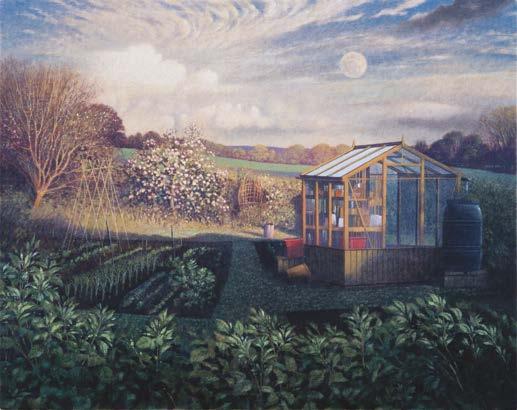
James lives on the Somerset Levels with his wife, Kate, also a painter. He exhibits in London and occasionally hosts a private exhibition in his home and studio.
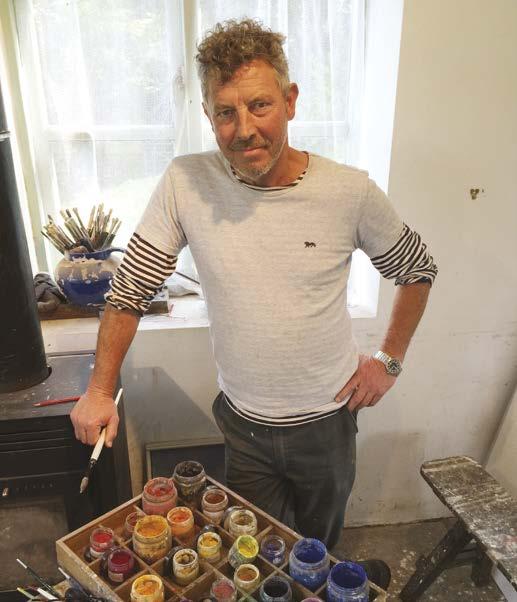
Lani the puppy has destroyed the house, our clothes, our shoes, the settee, the garden furniture, and the pot plants. The lawn looks like it’s been shelled (from the digging). We’ve been bitten, and wee’d on. She’s eaten all sorts of weird stuff, and thrown up and pooped in all sorts of inappropriate places. And we’ve had to apologise to so many people.


But we love this little ball of energy. We worry about her like we do the children, and we can never get anything done as ‘investigator dog’ will insert herself between you and the task at hand in an instant. Life has changed. Again.

We’ve lost our friends and the neighbours keep their distance. It’s a bit like having children, but with better appetites, very sharp teeth, and a reckless fixation on eating and doing disgusting things. That edge of unpredictability is always there!
For someone unfamiliar with dogs until now, I’ve discovered they are definitely man’s best friend. An empathetic creature that lets go of your fingers when you scream, and does ‘zoomies’ ( a sort of dog wall-of-death) around the living room just when she notices you’re feeling a bit sleepy and need to be ‘revived’.

At times, we have a sort of Cato/Inspector Clouseau battle around the house and garden when the dog goes into hunt mode and you are the prey. At other times ‘baby dog’ is fast asleep dreaming about all the above and the joy of being alive.
If you feed them, give them crate time (puppies need lots of rest), and plenty of physical and social exercise (the dog walking community is delightful), and very occasionally put them on the right path as befitting your responsibility as a senior pack member, you may make progress. Not too different from normal family life with small children!
But if you don’t have time, are very house proud, gag at poop, or are generally revolted by their non-vegetarian ways (cooked liver, pig’s ears and tripe are the best treats) just don’t get a puppy. You will, of course, miss out on possibly one of the most rewarding relationships you can have outside having children. And because they enjoy life so much, you really can’t help but do the same.


Jan Merriott on the fourlegged furry whirlwind that’s changed his life
Inspector Clouseau battle around the house and garden
Mark Ashley-Miller is a man on a mission – to sail around the British Isles and meet every Harbour Master. He shares his highlights so far

When my wife, Fiona, and I sold The Present Finder business in Sherborne in 2018, and bought our boat, the world was our oyster.
Living in Dorset we knew the beauty of our own county, but could we find a coastline more beautiful than Dorset? The jury is still out.
It was March 2019 when I turned right out of Dartmouth in our 34ft Nauticat sailing boat, Good Dog. I’d set myself the challenge of meeting every Harbour Master in Great Britain and Ireland – all 300 of them. On the way I would raise money and awareness for The Seafarers’ Charity. So, 5,300 miles, 175 Harbour Masters and £15,000 later (we have just reached London) what have been the highlights?


For excitement, sailing up the Bristol Channel to Sharpness – which involves Bristol May 2019


crabbing ‘sideways’ under the two Severn Crossing bridges at 13 knots – is hard to beat. As is sailing into the heart of maritime Bristol from the mouth of the River Avon where the sea can rise and fall an incredible 13 metres per tide.
Moving clockwise, it was the castles of North Wales that next took my breath away – Caernarfon, Beaumaris, Harlech, their names alone are dramatic. But it was anchoring beneath the walls of Conwy Castle that sticks in my memory, and I implore you to visit.
For sheer beauty, the west coast of Scotland is hard to beat, especially sailing deep into sea lochs like Scavaig amid the Cuillin Hills of the Isle of Skye. It is said to be one of Europe’s most dramatic anchorages. Just when you think you can’t possibly say another, “Wow, look at that”, we anchored off the archipelago of St Kilda (50 miles west of the Outer Hebrides) and walked among 3,000 years of human habitation.
Rounding the very top of Great Britain, the romantically named Muckle Flugga lighthouse gives Portland Bill a good run for its money. Remote, rugged and a little rough, it does not disappoint, and heading back south you really feel you are heading downhill. What I love is that Shetland, Orkney and Fair Isle appear to have stronger ties with Norway than they do with Edinburgh – they are certainly a lot closer.
It was Northumberland that won the prize for the most welcoming county. If you like castles, long beaches and superfriendly people, Northumberland is your place. One of the Harbour Master’s even filled up my boat’s (large!) diesel tanks for free as his donation to the charity.
The remainder of the east coast of England did not disappoint. In our search for Harbour Masters we have taken Good Dog over shallow sand bars, motored far up muddy rivers, and tied up on tiny drying harbour walls. They come in all shapes and sizes, from fishermen in remote villages, rivermen controlling flood defences deep in the fens, to master mariners piloting the world’s largest container ships. I have interviewed them all and learnt so much about our amazing maritime country.
Good Dog is now safely tied up in London and I’m back in Dorset writing up all the stories for my book. Thank you for letting me share a few adventures with you.
Could we find a coastline more beautiful than Dorset? The jury is still out
Follow Mark Ashley-Miller on Instagram @ harbourmastersailingchallenge


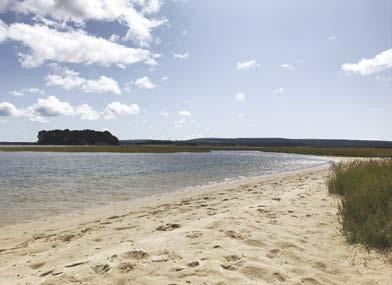



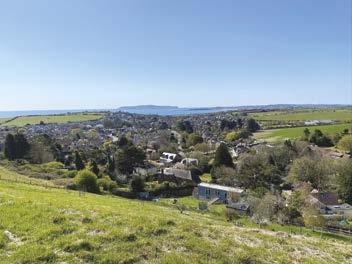
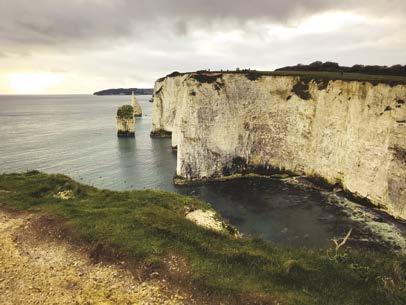

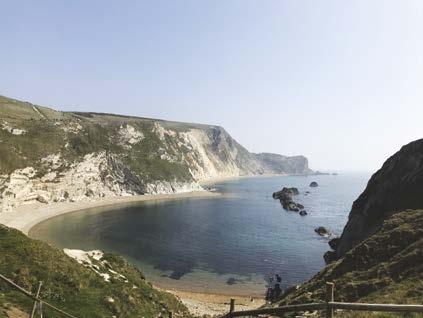
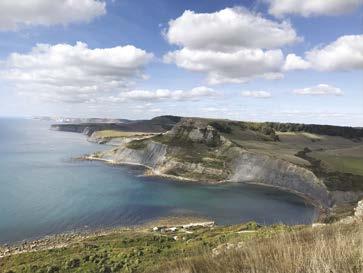


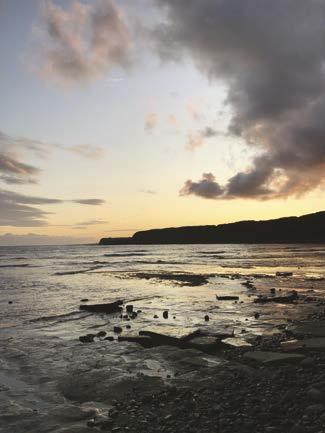

The BBC marks its centenary in 2022 and we asked everyone at Symonds & Sampson to name their favourite programme. Interestingly many choices refer to memories of collective family enjoyment and it is good to see that some people still watch or listen as a household.


The Good Life – It was filmed close to where I lived, so we were devotees, but just tickles me – they were ahead of their time!
Kate PembertonFawlty Towers – it reminds me of my fab childhood, also watching Basil now it’s like watching my manic life.
Sam Brown
The Office – Hilarious in cringey and toe-curling sort of way, whilst at the same time providing sound guidance on how not to do it!
Richard Miller
The Fall and Rise of Reginald Perrin – From a teenager’s perspective it seemed like a very funny/amplified snapshot of how the older generation were going about their lives.
Steve Allen
Dad’s Army! – No matter how many times you hear it, you can’t not laugh at “Don’t tell them Pike’!!”
Jan Carter, Richard Taylor, Jan Merriott, Anabel Merriman and John Savage
Top Gear – You just can’t beat watching 3 middle aged men destroy countless caravans, drive fast cars and generally behave like children!
Jack Denning-James, Stuart Phillips and Andrew Tuffin I watched it with my mother and father when I was growing up and now I watch it with my wife and 8 year old son!
Andy WakinshawGavin & Stacey– Never fails to make me laugh out loud whatever mood I am in.
Rickey Stoodley
Match of the Day – It’s got to be for me. Since a young lad and even now I avoid the scores at all costs and sit on the edge of my seat glued to the telly as if it was live.


Graham Barton
Great memories of staying up late with my father and sitting up with my sons to catch the highlights of another Spurs victory or maybe not……
Jon Summers
As a youngster being allowed to stay up late on a Saturday evening to watch it with my brother if I hadn’t been naughty during the week!
David West
Rugby Special and Ski Sunday – because they were one after the other. A great way to while away cold and dark Sunday evenings in the late 80s before having to think about school again. Cliff Morgan, Nigel Starmer-Smith et al and two cracking theme tunes.
Giles Wreford BrownSherlock 2012 to 2017 –“Come at once if convenient – if inconvenient come all the same.”
 Jessica Weymouth
Jessica Weymouth
To the Manor Born – Penelope Keith is superb playing Audrey Fforbes-Hamilton in this classic tale of old money v. new money, also great fun spotting local landmarks at Cricket St Thomas!
Ross Wilmington
Ski Sunday – As a child I would sit down with my father every Sunday to watch it – happy memories.
A-J (Andrew) Monro
The Generation Game with Bruce Forsyth – It was the only programme when I was a child the whole family would sit down and laugh about together.
Caroline Childs-Chaffey
The Archers – due to its familiarity and continuity.
 Rosie Chandler
Rosie Chandler
Great Ormond Street Children’s Hospital – because I was on it!! Very informative and documented the world’s greatest children’s hospital situated in London. Many follow up programs have been produced since.
Neal WilsonDesert Island Discs: – Always fascinating and often like a session in the psychiatrist’s chair or Test Match Special which takes me back to gardening with my Father.
 Mark Lewis
Mark Lewis
Worzel Gummidge (2019 series) – my own children watched it with me, reminding me of when I watched the original series with my own parents!
Carrie UnderwoodCall the Midwife – It makes wintery Sunday evenings feel warm and cosy!
Lucy CarnellGardeners World – “To plant a garden is to believe in tomorrow”! Monty’s tip to deal with mental health, with a little inspiration from Audrey Hepburn!
Brigit Lyons-DavisCome Outside – this was a childhood favourite of mine with Auntie Mabel and Pippin the dog, I would always watch with my sisters, we loved it because it made learning fun.




 Naomi Garner
Naomi Garner
Planet Earth II – David Attenborough presents a documentary series exploring how animals meet the challenges of surviving in the most iconic habitats on earth.
George WhittakerThe Young Ones – It was an explosion of alternative comedy, the show combining slapstick and surrealism with jokes about politics, class and giant sandwiches falling from the sky.
Edward DykeThe Muppets – With my dad being a farmer it always reminds me of precious family time as a child.
Clare Burt
Escape to the Country – I love seeing the different parts of the country people want to move to for a change of lifestyle and all sorts of property within varying budgets.
Marlise Jolliffe
Peaky Blinders – It always had me on the edge of my seat!

Phoebe Chatten
Only Fools and Horses – always has me crying with laughter and for that reason will always be one of my favourite sitcoms.
Chloe Hooper, George Rogers and Jeremy Smith
Would I Lie To You? – It never ceases to cheer me up and make me laugh when I’m feeling low – Bob Mortimer is a particular favourite guest!
Rachael James
A great tonic for today’s stresses.
Philip Greenway
The Morecombe and Wise Show – True comedy genius. Andre “Preview” springs to mind and Ernie Wise preparing breakfast to “strip” music – hilarious!
Judith Hubbard and Derryn Pollard
Mastermind – I remember being SO excited as a child if I could get a general knowledge question right, and now my children get ridiculously excited if they get one (they often do!)
Sally Reid
The Apprentice’ – In its heyday, the prize of working with Lord Sugar made it an outstanding series, which has sadly diminished over the years.
Peter Grout-Smith
Monty Python – It was brilliant, innovative, and incredibly funny and you could not go to school the next day unless you had fully memorised the previous night’s show!!
Neville Thorner
Tenko or Monarch of the Glen – Sunday nights at their best!
Victoria Salter
Bodyguard – It was fantastic! Action packed and the plot is faultless! (in my opinion)
Adam Taylor
Top Of The Pops – Pan’s People, tank tops and dodgy miming – from Althea & Donna to ZZ Top everyone played on TOTP, I rarely missed it.
Andrea Barnett
Blackadder! –Because I have a cunning plan!
Chris Powell
AXMINSTER 01297 33122
BEAMINSTER 01308 863100
BLANDFORD 01258 452670
BRIDPORT 01308 422092
BURRATON 01305 236237

DEVIZES 01380 710535

DORCHESTER
01305 261008 ILMINSTER 01460 200790 LONDON 0207 839 0888 POUNDBURY 01305 251154 SALISBURY 01722 334323
SHERBORNE 01935 814488
STURMINSTER NEWTON 01258 473766
TIVERTON 01884 218911
WIMBORNE 01202 843190
YEOVIL 01935 423526
FROME MARKET 01373 831140
250920 www.remous.com
The contents of this publication are intended as guidance and general interest. It does not constitute legal advice and can be no substitute for considered advice on specific problems. Although every effort has been made to ensure the accuracy of the information printed in this publication, Symonds & Sampson LLP cannot accept liability for errors and omissions. The views expressed in this publication are not necessarily those of Symonds & Sampson LLP.
Our skills have been passed down through the generations and are now ingrained in the firm and honed for the modern world


We have been carving out a professional reputation for over 160 years


